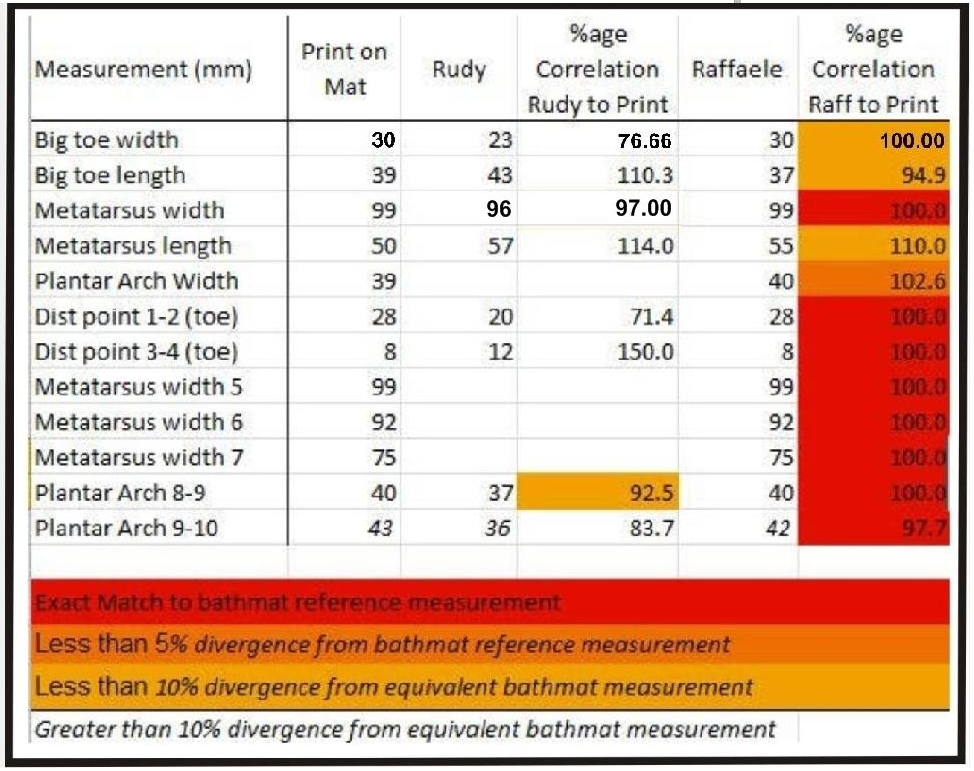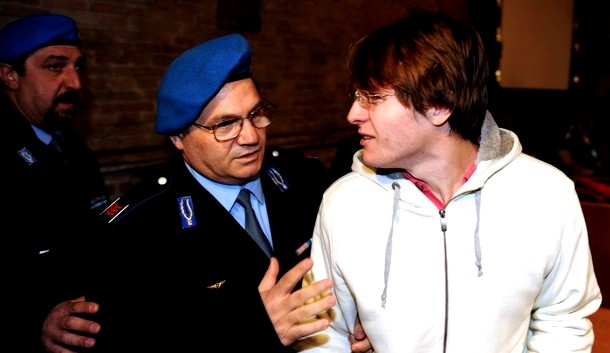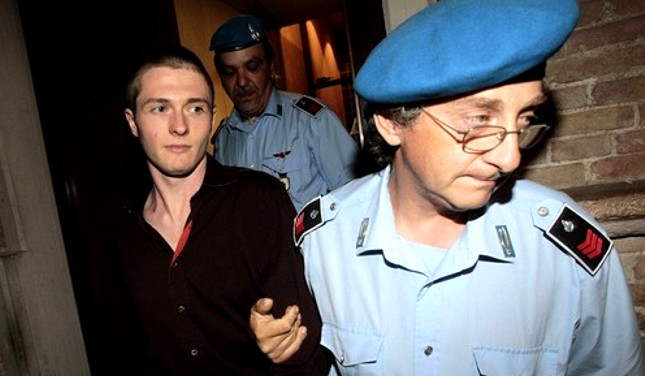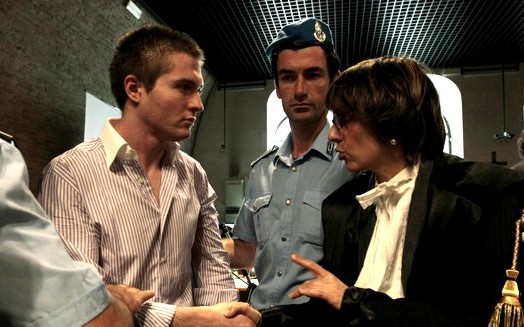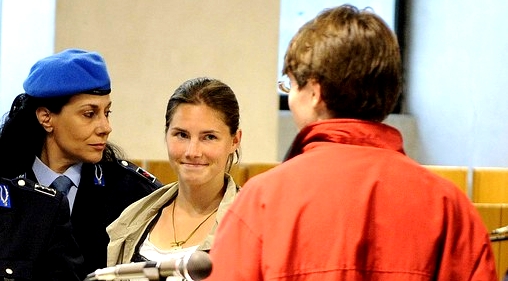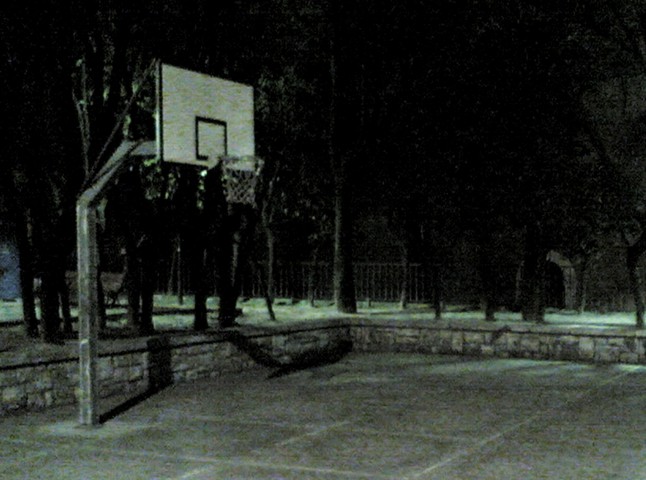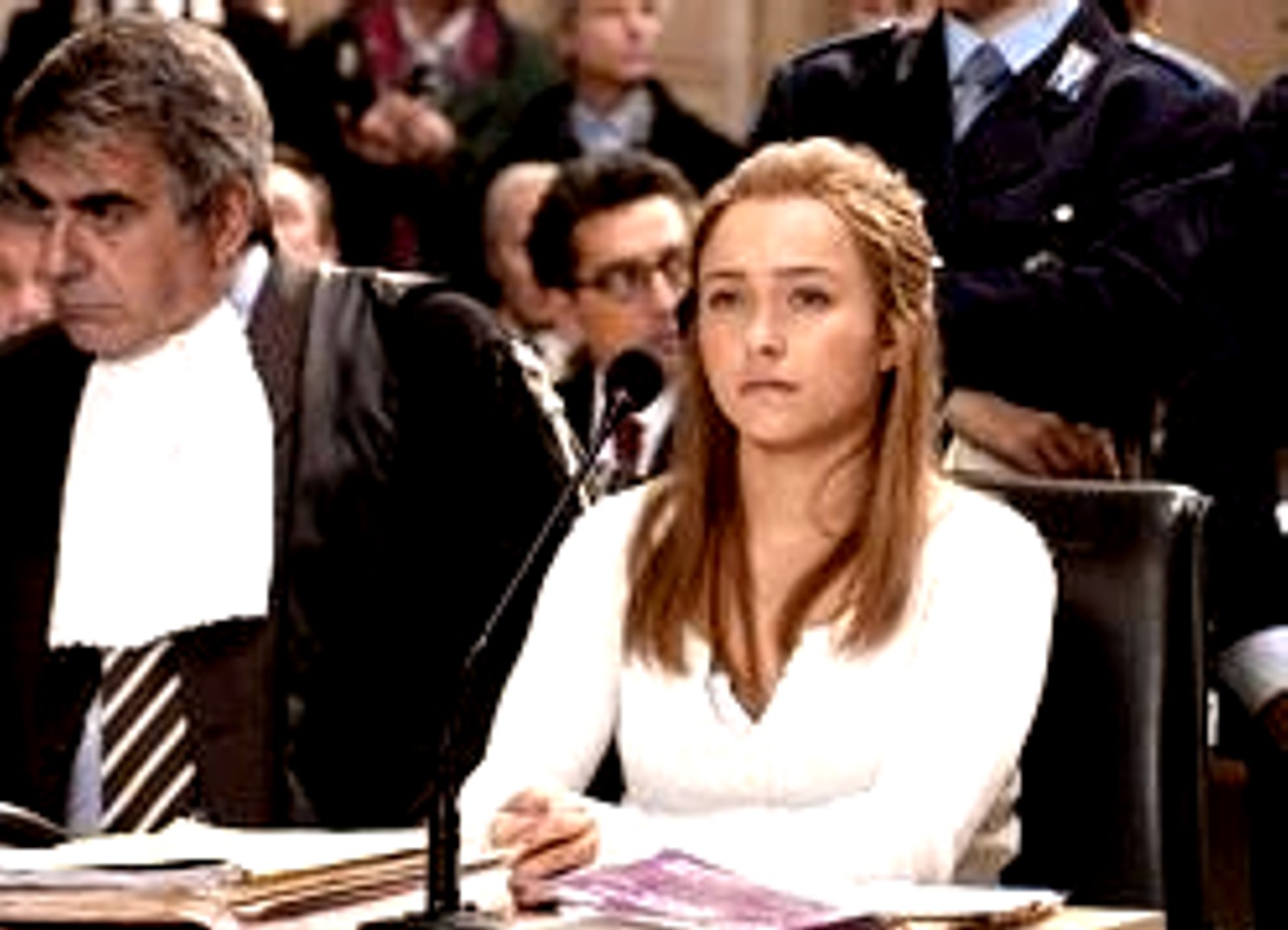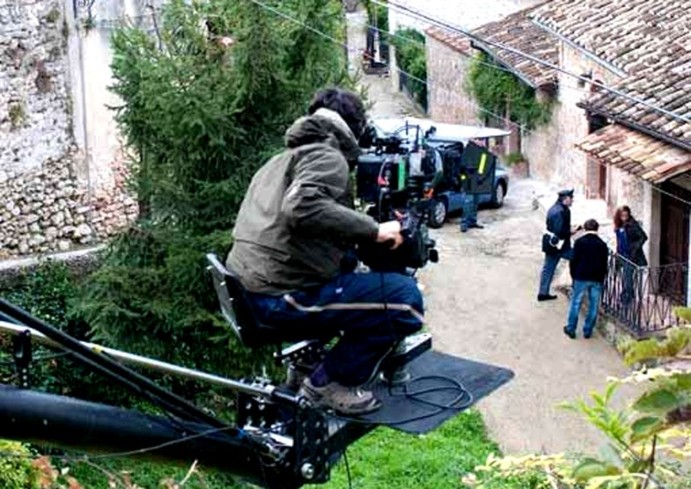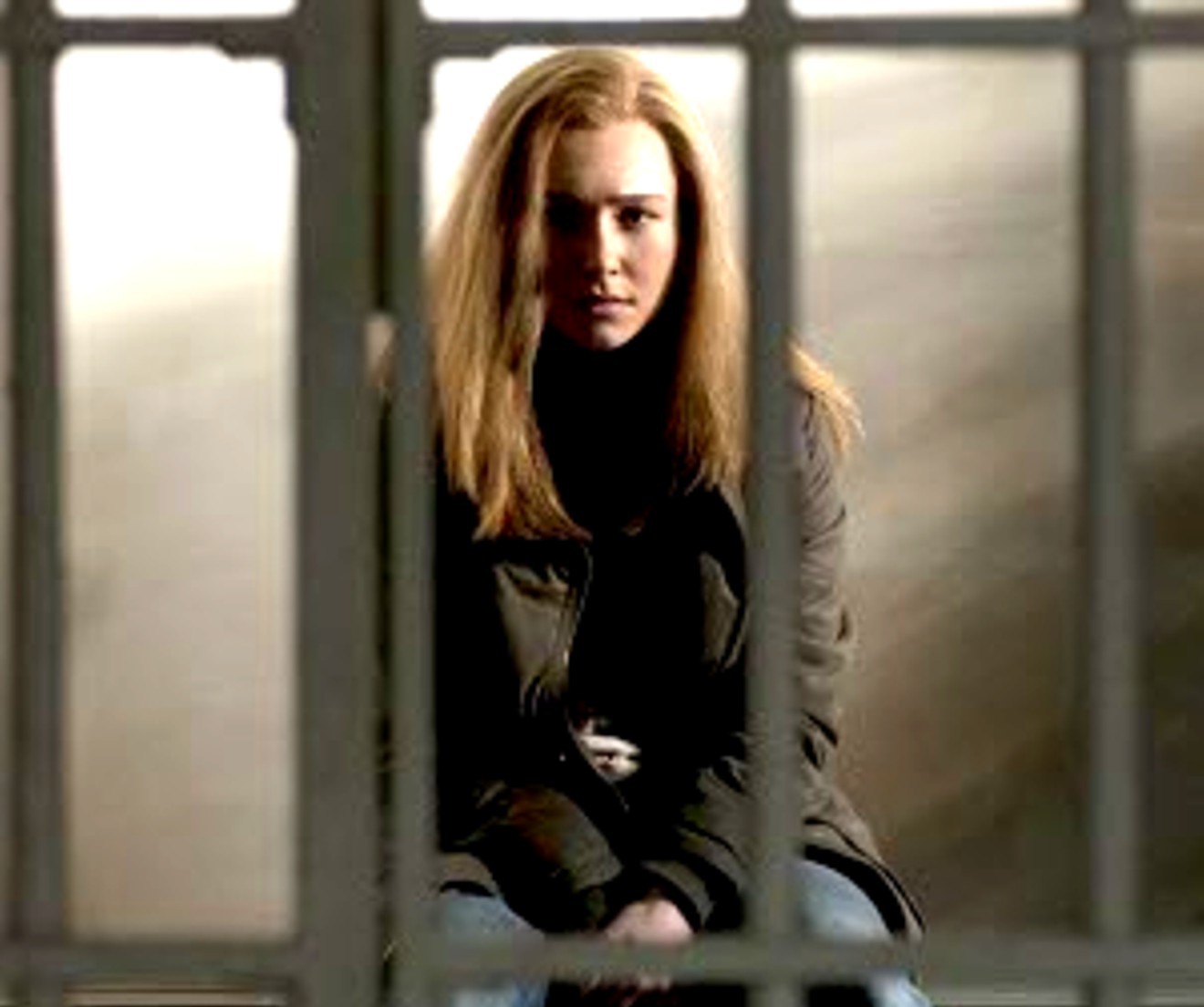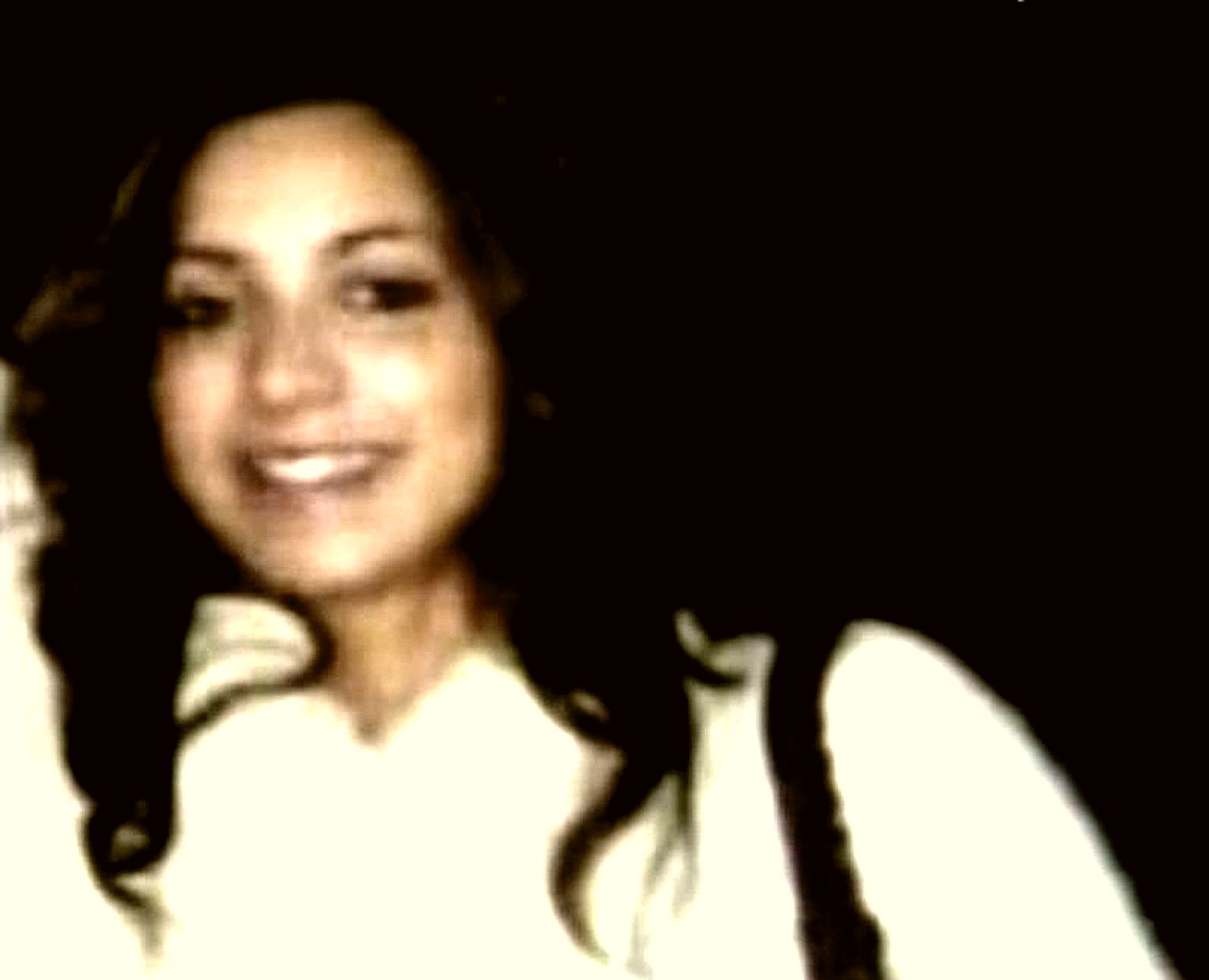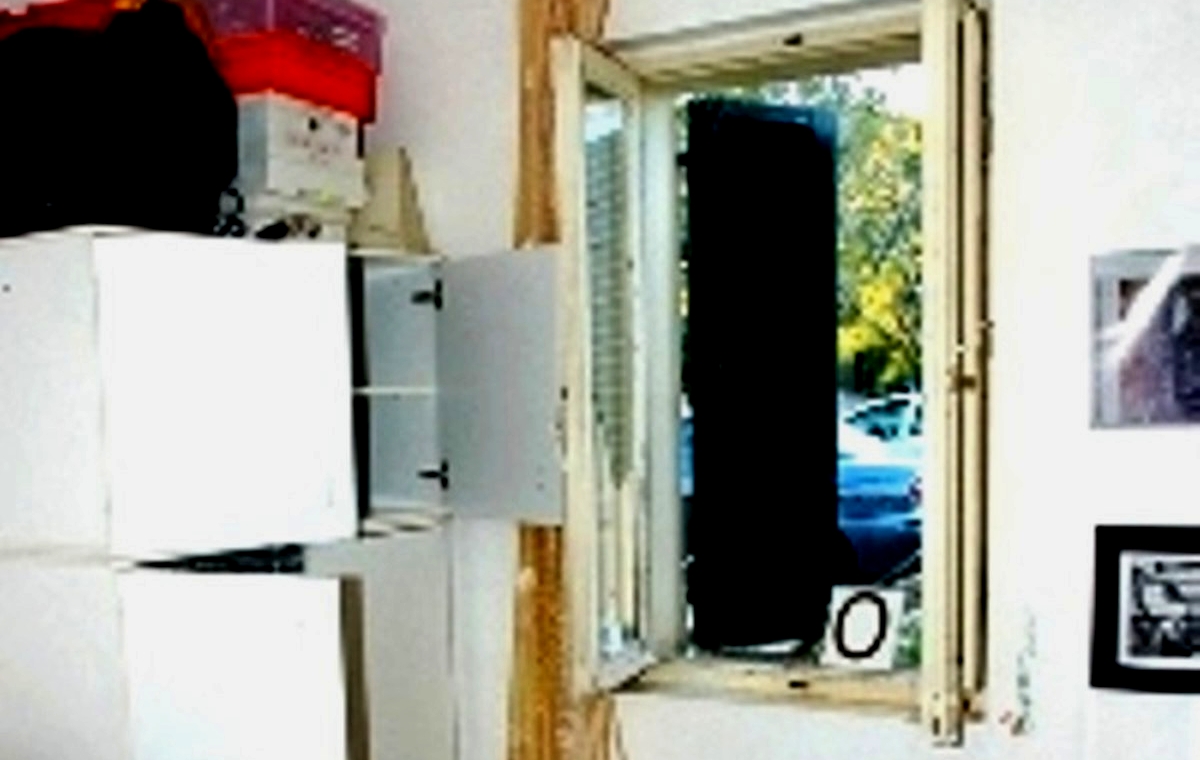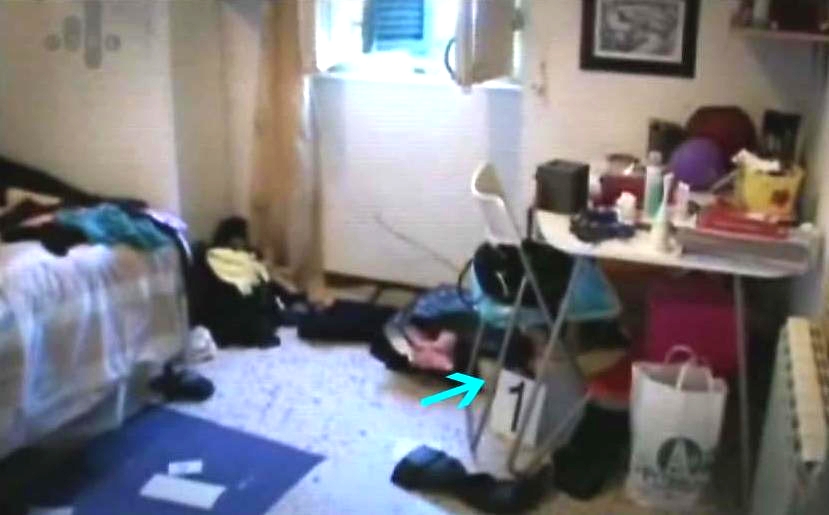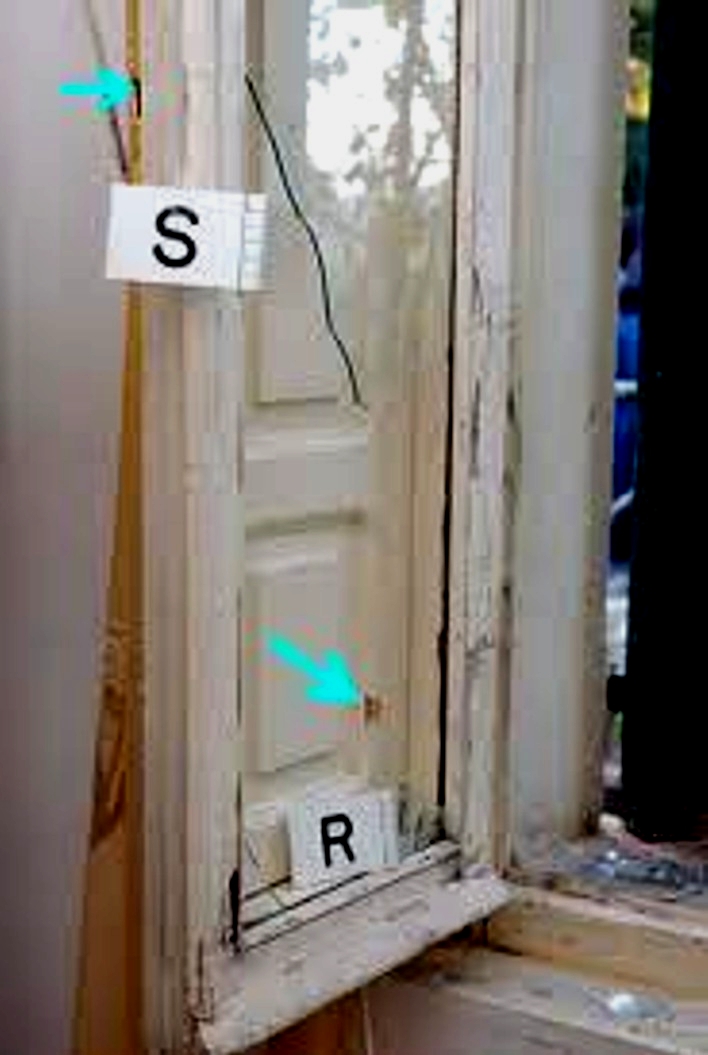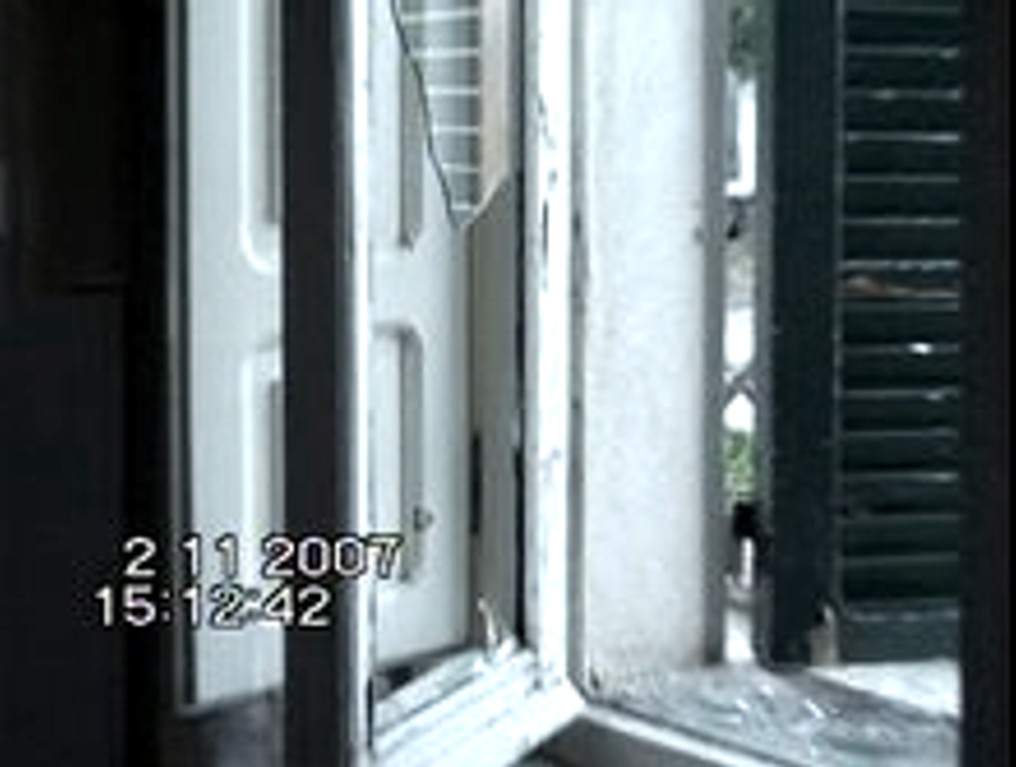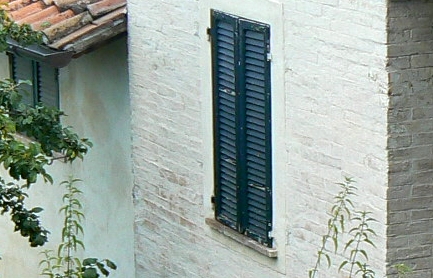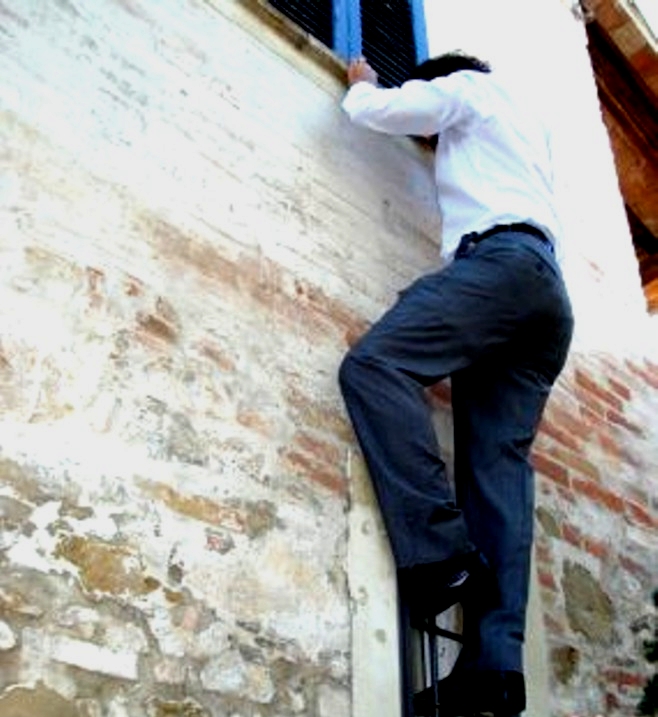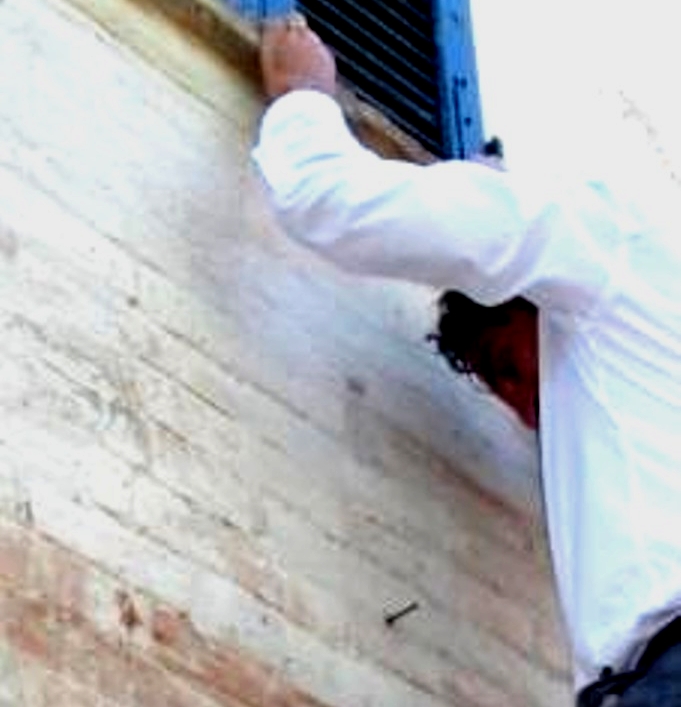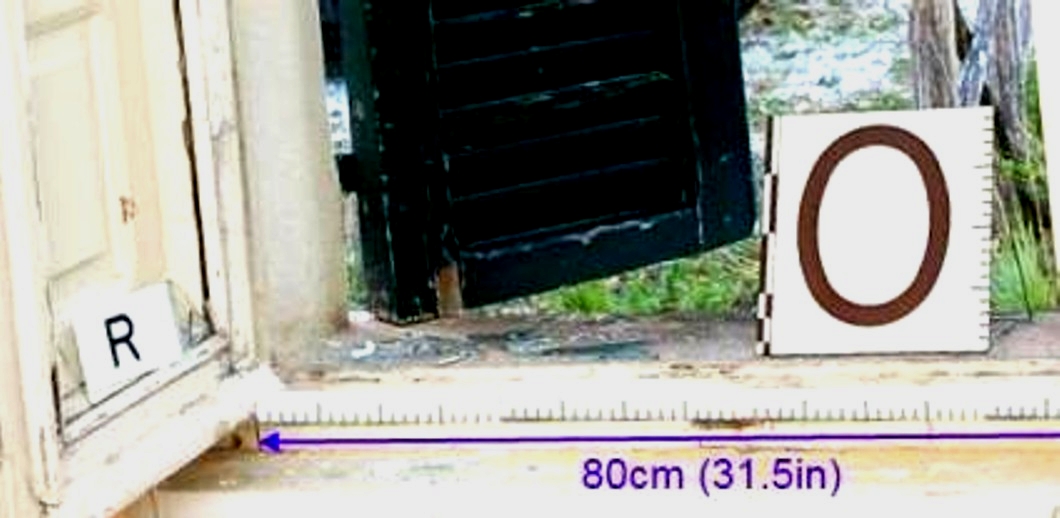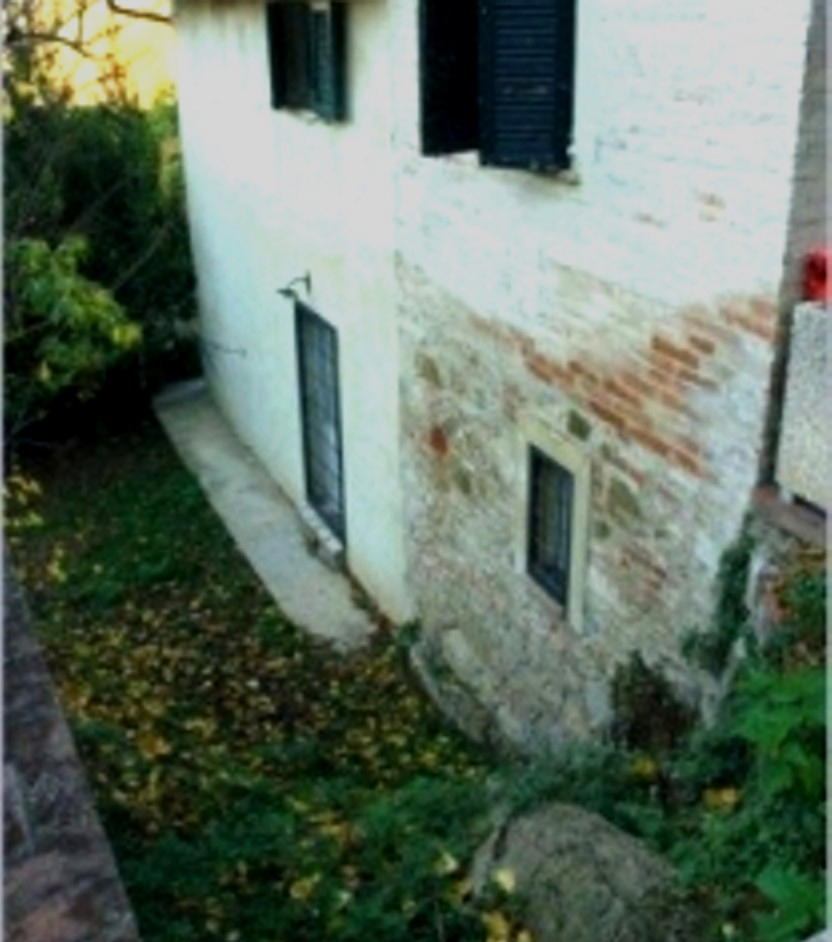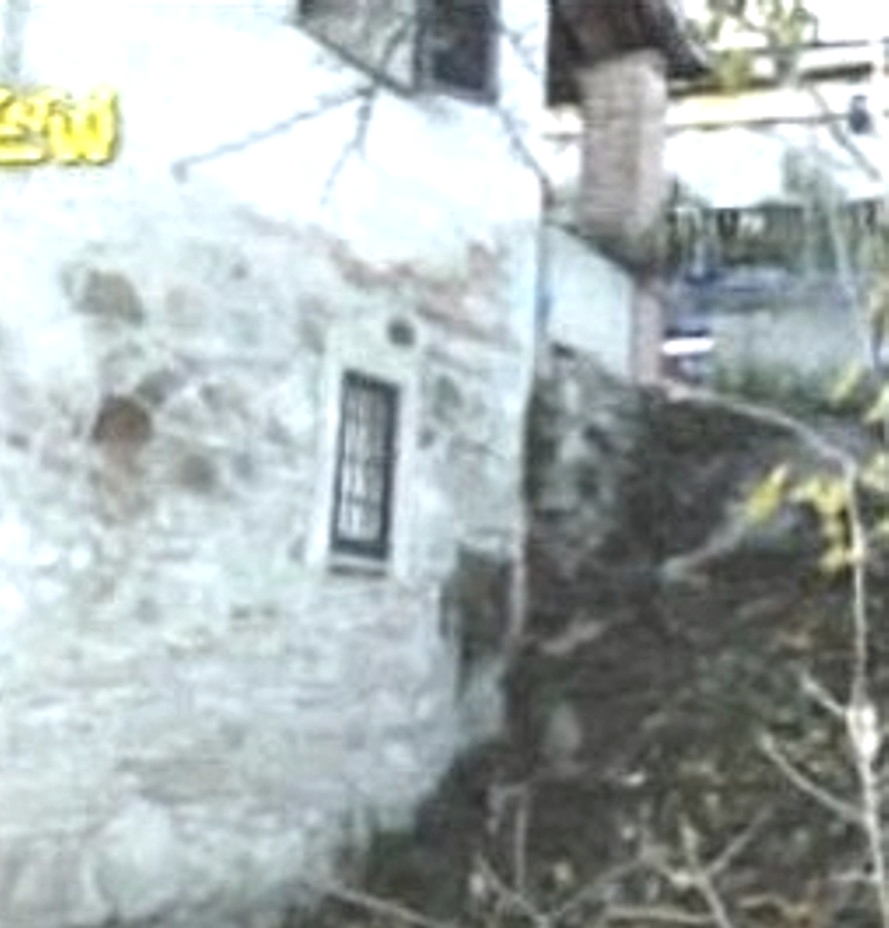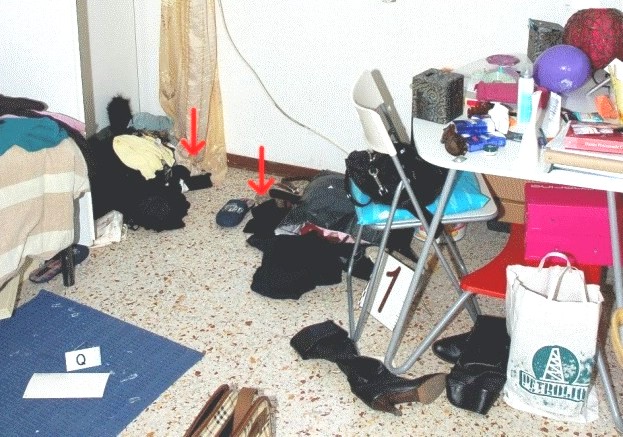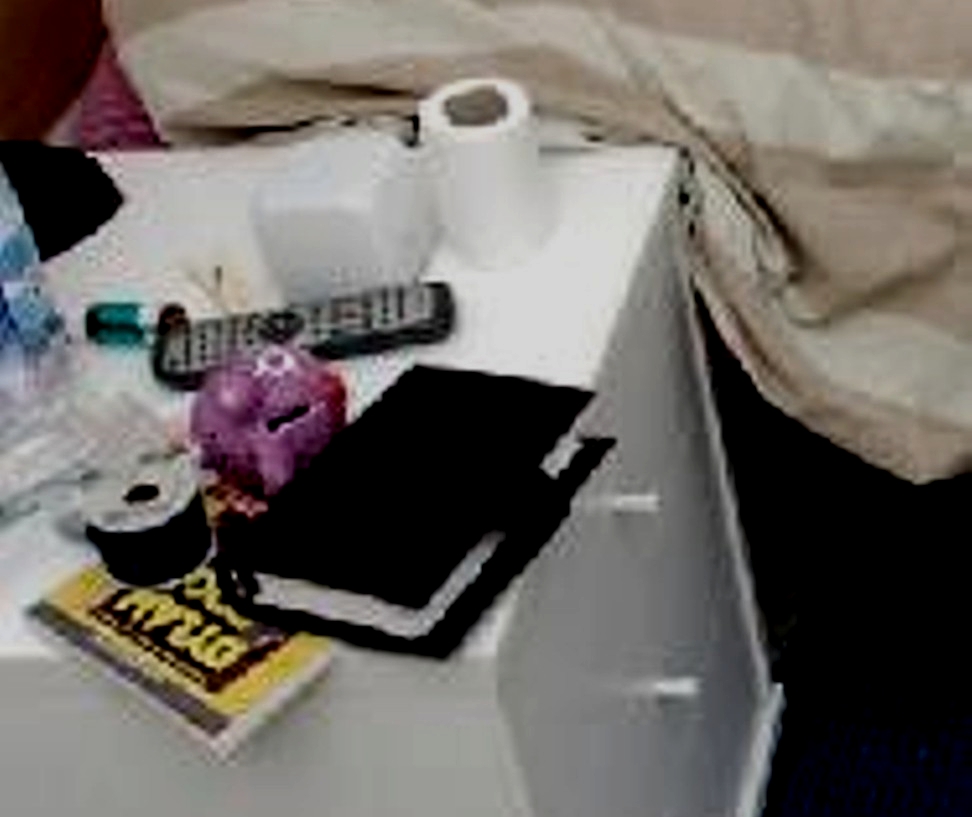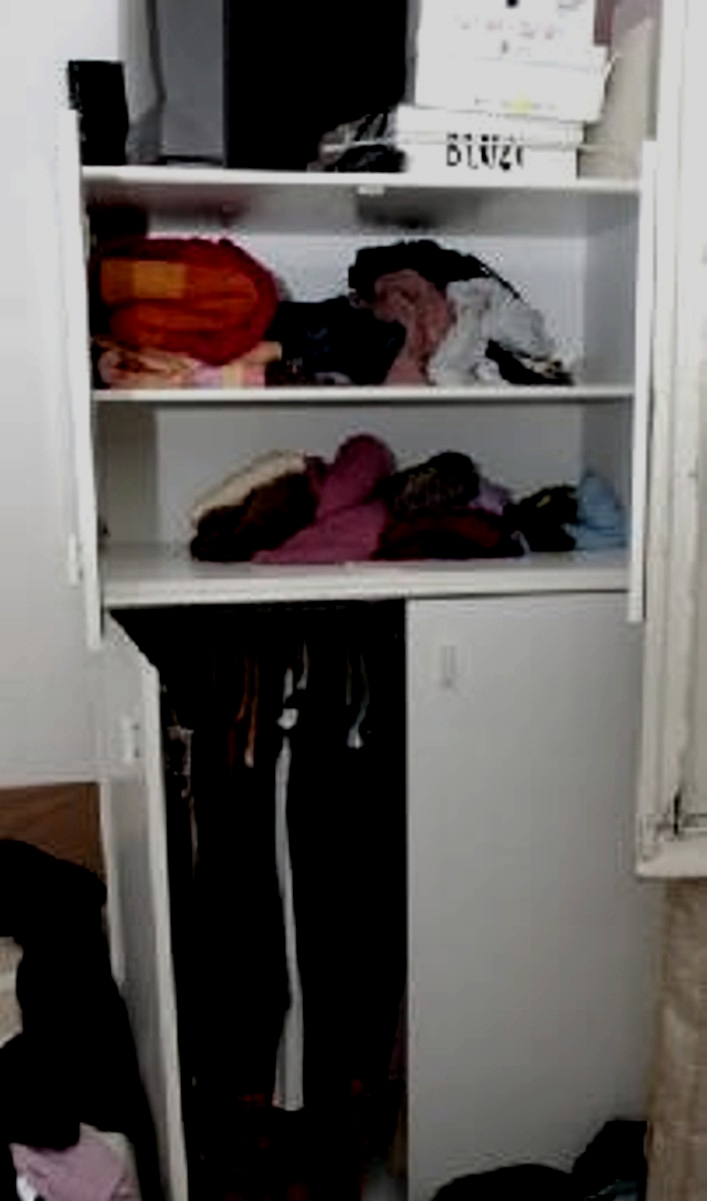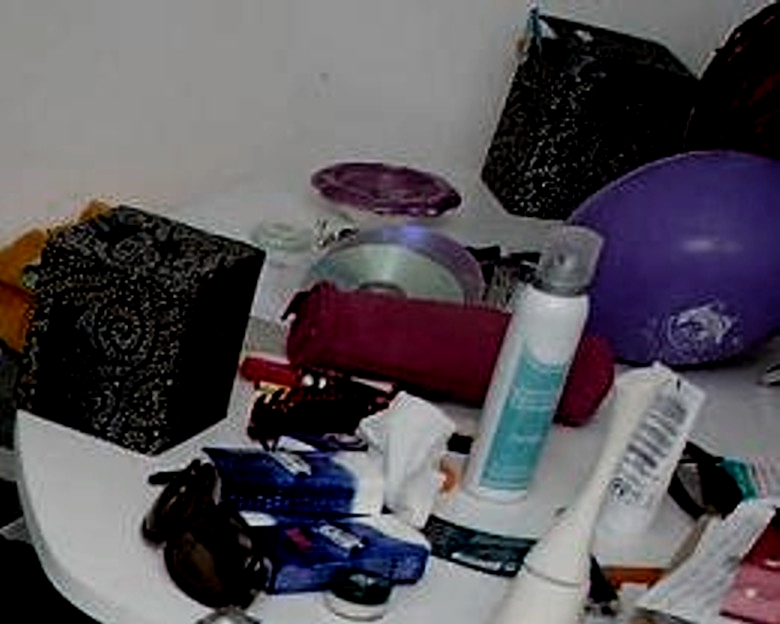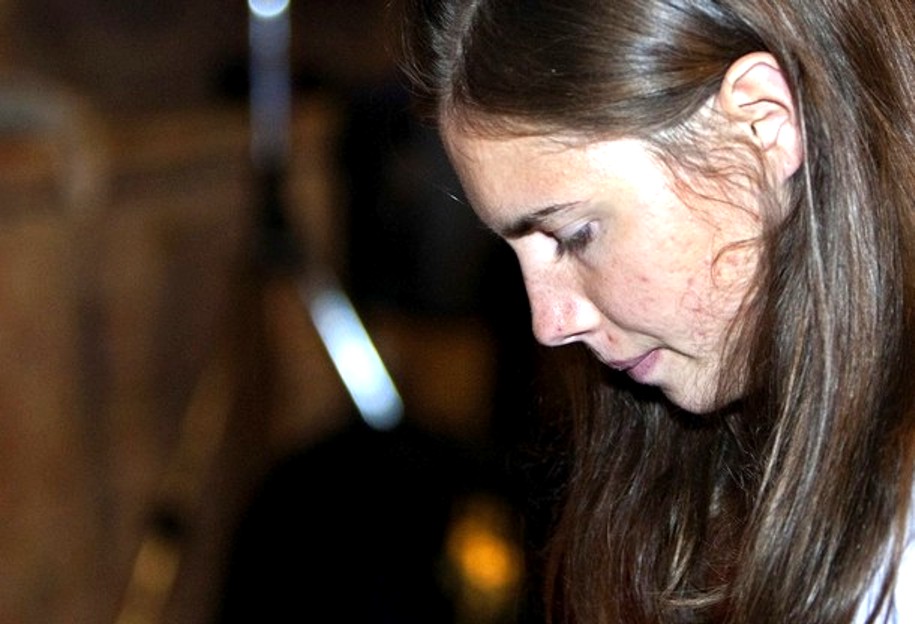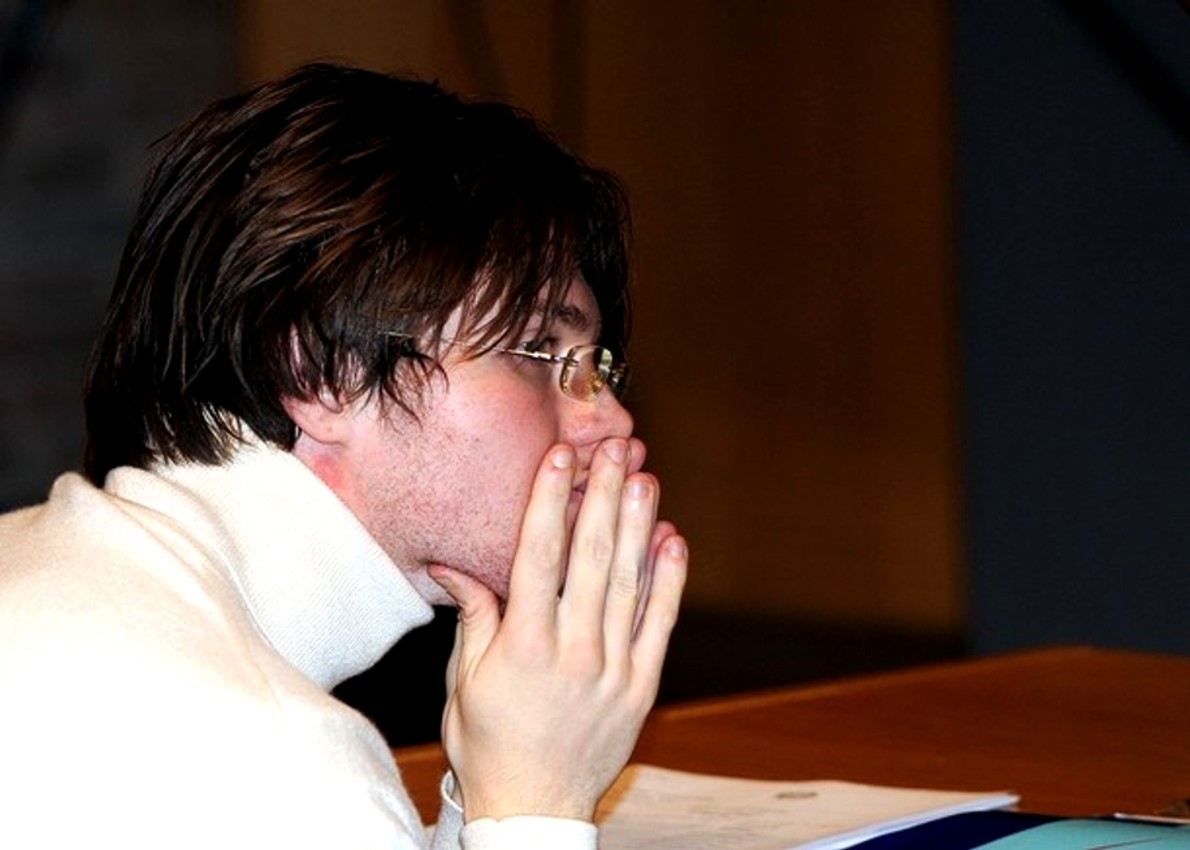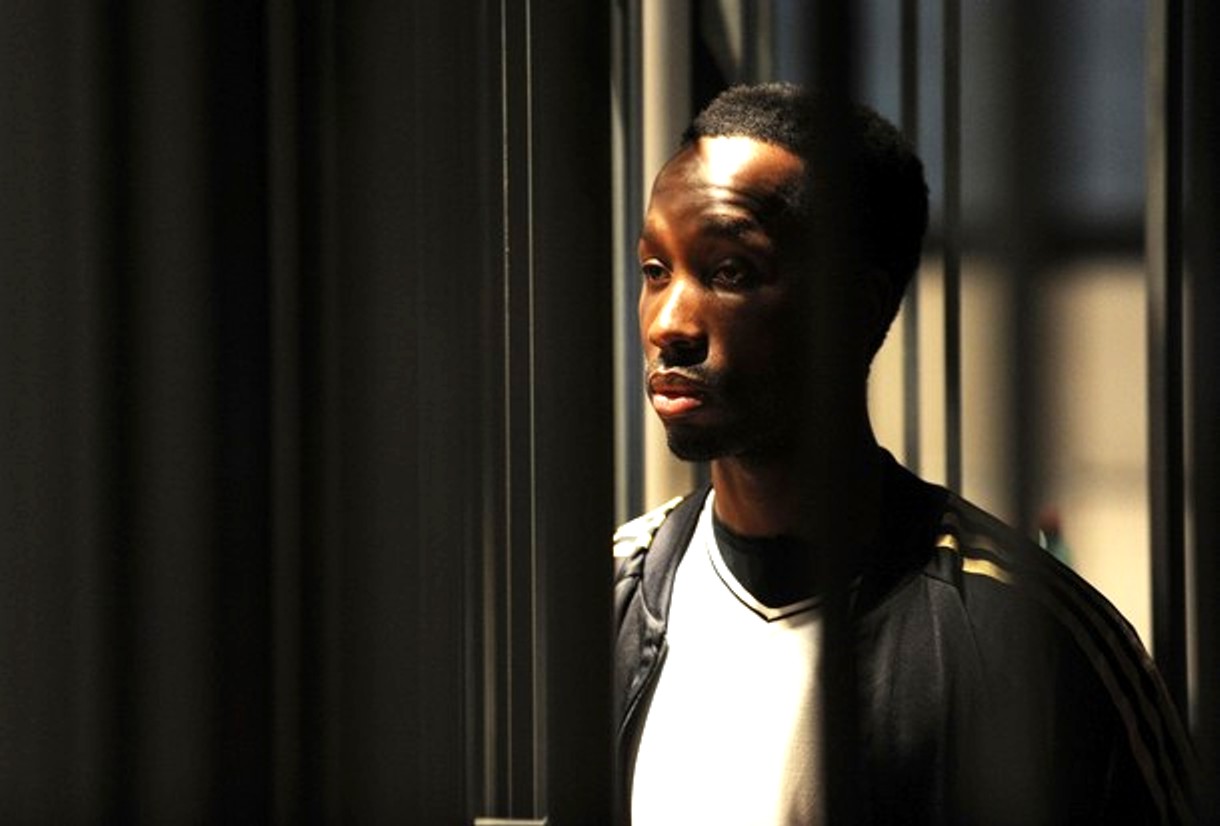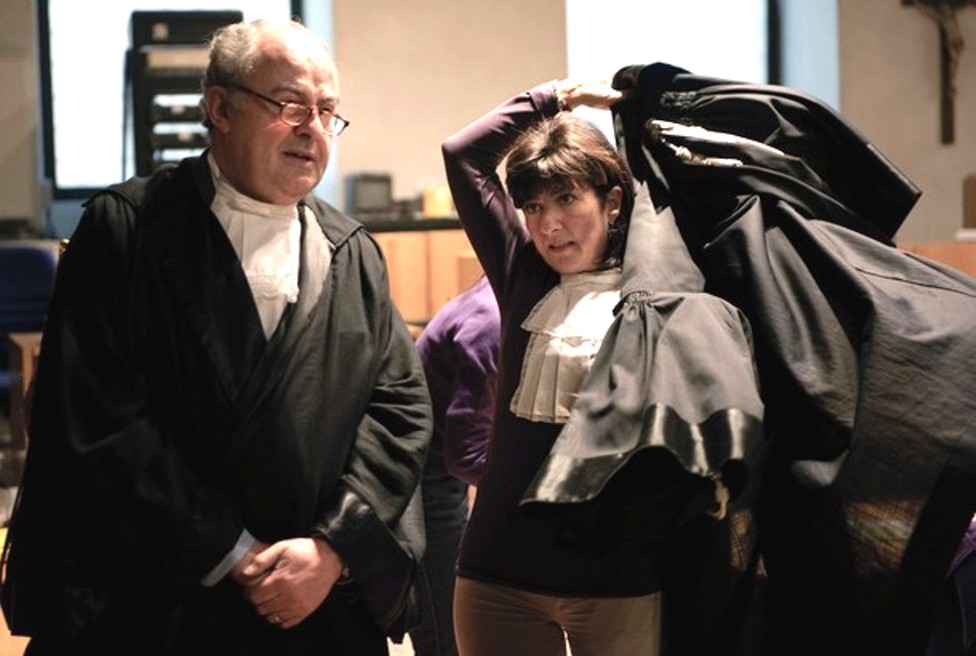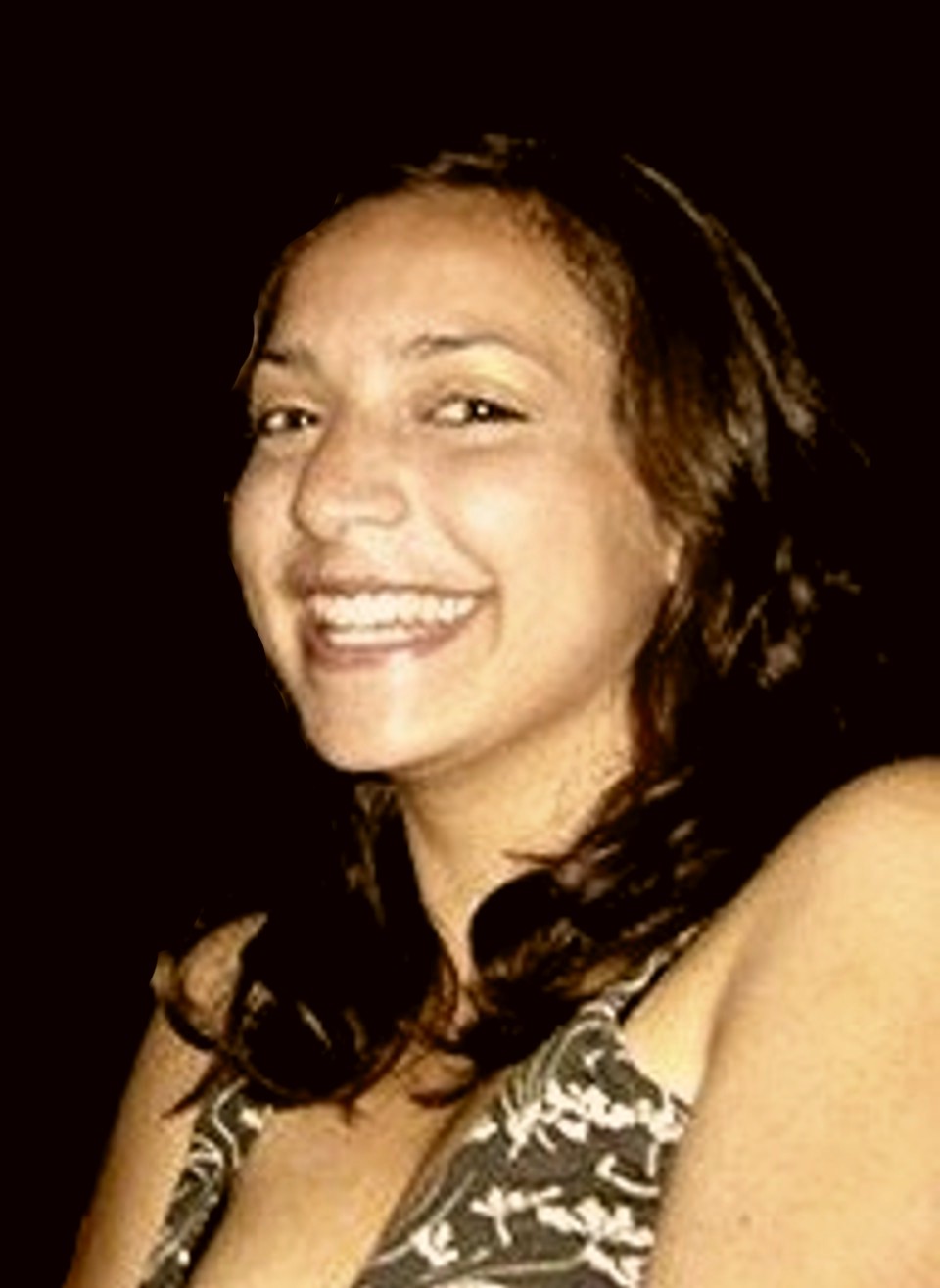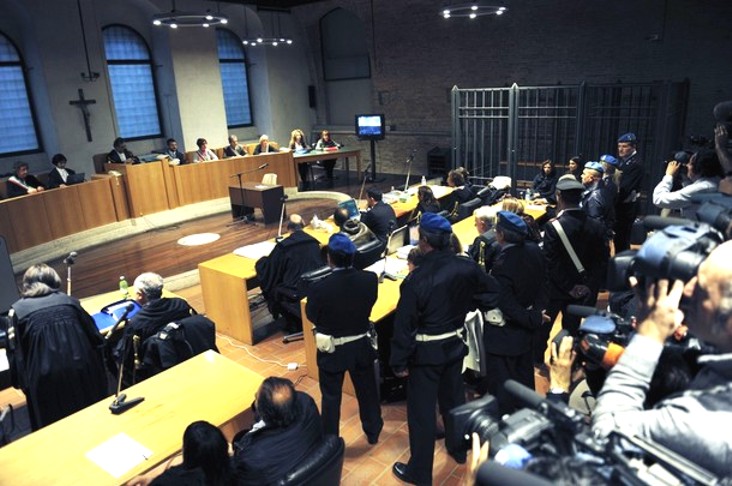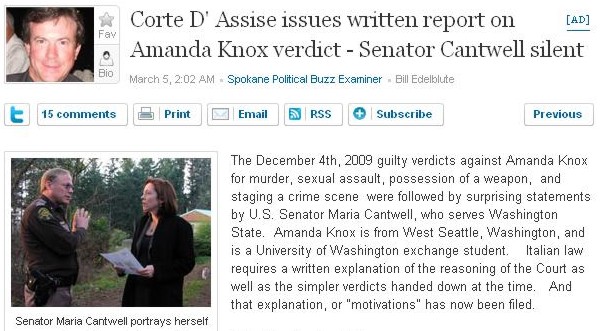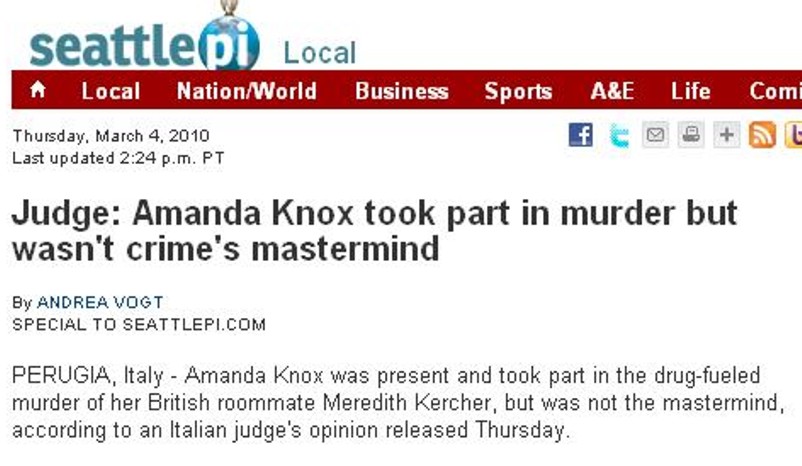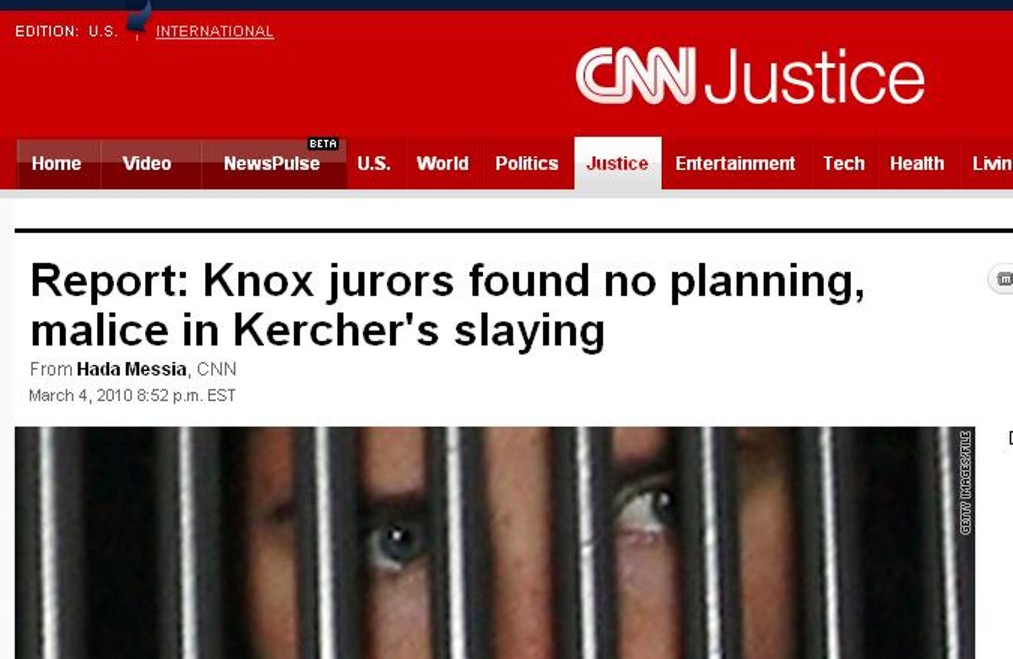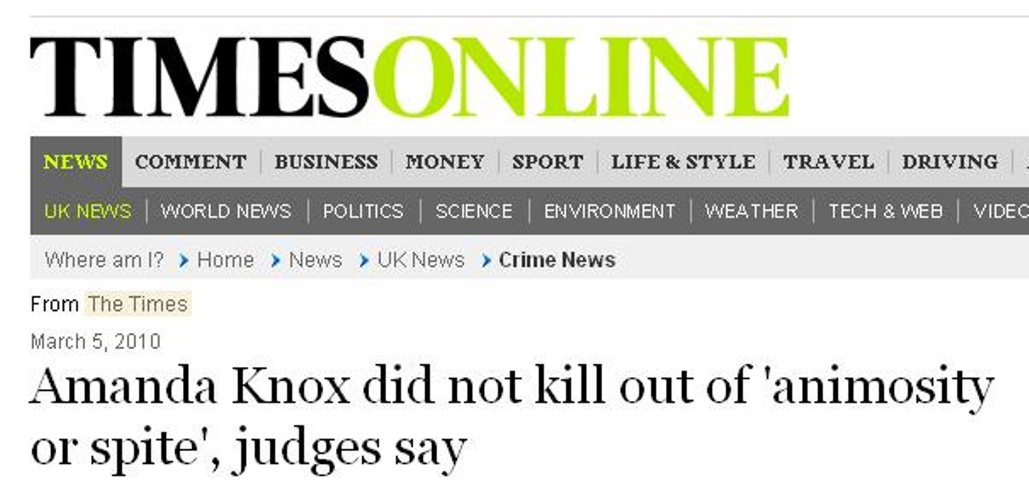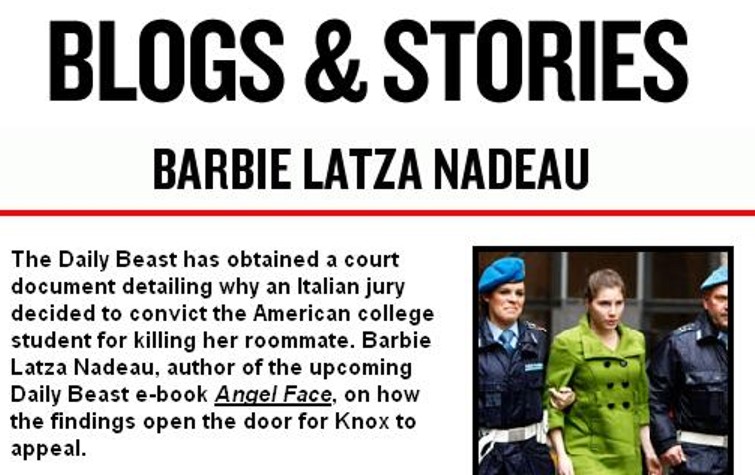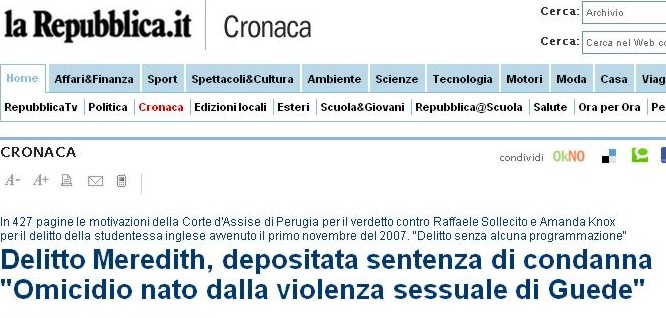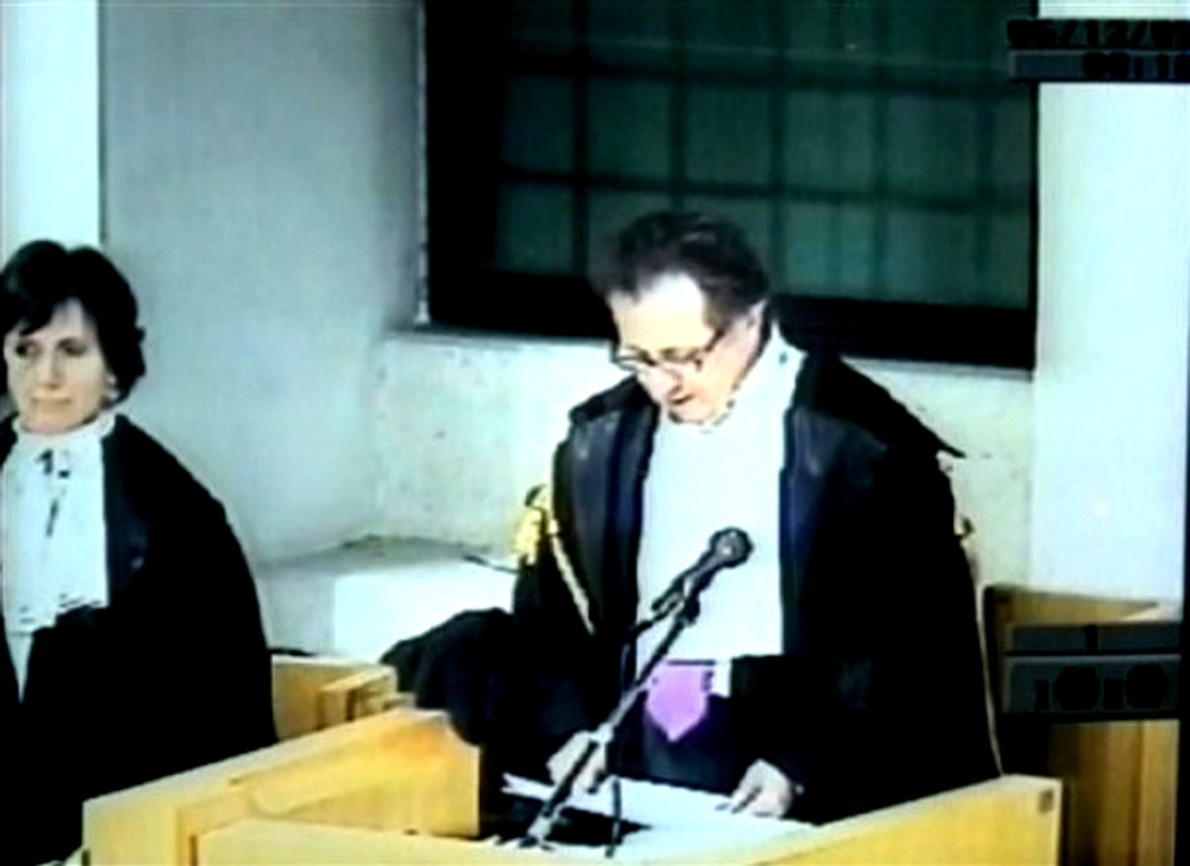
Category: The Massei Report
Thursday, May 14, 2015
Updates: Sollecito’s Trial For Vilipendio And Diffamazione, Knox’s Trial For Calunnia #2
Posted by Peter Quennell

Knox and Sollecito have each been indicted in Florence BY PROSECUTORS on charges that bear no resemblance to UK or US slander or libel cases.
They are each essentially charged for lying to poison public opinion against officials, and Sollecito against the system, to try to win themselves illegal breaks at their murder trial and appeals. Knox in court in 2009, and Sollecito in his book in 2012.
The weekly magazine Oggi is also on trial for jubilantly publishing some of Knox’s numerous lies.
Yesterday in a Florence court a new court translation of the passages from Sollecito’s book fully quoted here were accepted by the presiding judge. They differed little if at all from what the prosecutor filed last year and brought the defenses no joy. Right now both the defenses seem stuck.
And on June 9th the calunnia trial against Knox will start in a Florence court. It would be smart for her to be there, as Sollecito usually is. As mentioned above, Knox is already indicted.
It is not clear who her lawyers will be. Sollecito had to field a new team. Ghirga and Dalla Vedova both helped Knox with her defamatory book and with her defamatory email to Judge Nencini in December 2013 in which Knox ludicrously claimed she had been tortured (for the mundane truth read here) and like Bongiorno and Maori they could feel they have conflicts here.
On June 16 Dr Mignini will testify in the Oggi trial in Bergamo north-east of Milan where Oggi is based against the editor Umberto Brindani and the reporter Giangavino Sulas for publishing illegal claims made in Knox’s 2013 book.
At that hearing Knox’s book may finally become the subject of charges on the same lines as Sollecito’s book. Italian legal opinion is not supportive of the pair or the sleazy moves that led to Cassation giving them a break
That break looks increasingly temporary now. Sollecito could face big fines and Knox could face up to six years. Brighter bulbs would have realized it is best not to confront Italian courts.
Saturday, November 29, 2014
The PMF/TJMK Master Evidence List: First Of Our Projects To Make The Final Picture Whole
Posted by Our Main Posters
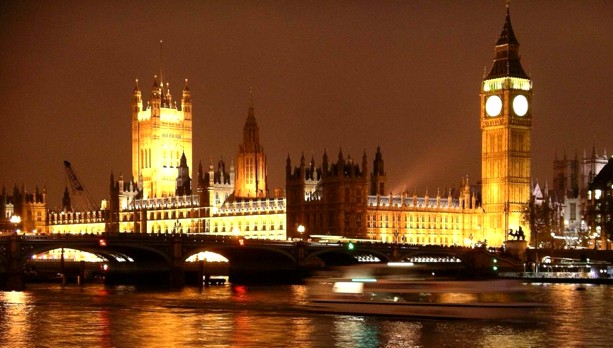
High-achiever Meredith Kercher was born less than one mile south of this famous London landmark
Building An Evidence Mountain
There are really three pictures, not just the one, still to be fully made whole.
- That of Meredith. We believe a family site will soon add to the fine book published by Meredith’s dad.
- That of all of the evidence the court acquired in 2009, which is the sole picture the Italian citizenry takes seriously.
- That of the misleading campaign by the Knox and Sollecito PR shills, leaving some in the UK and US misled.
The Master Evidence List is a key part of the second picture and there are several other media-friendly pages still to come.
Please click here for more
Saturday, November 15, 2014
The Status Of The Various Computers In The Case #2 New Developments
Posted by Sallyoo
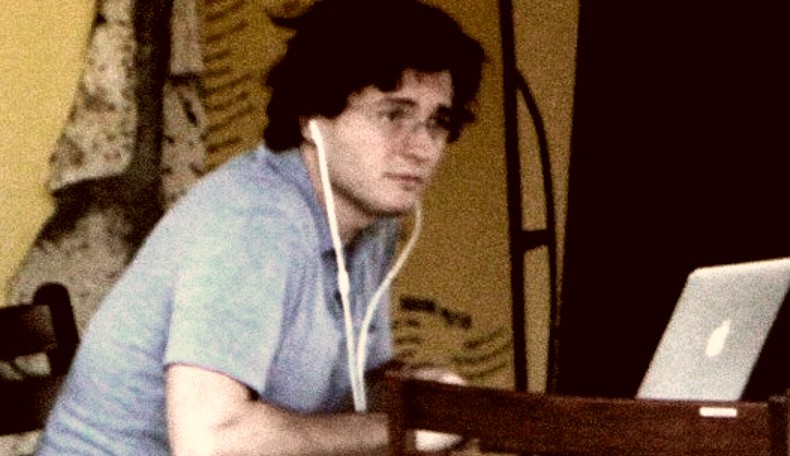
Please first see my previous post and my several updates in the Comments thread.
There has been a new flurry of interest in Raffaele’s computers following the publication, on iip, of a report prepared by Prof. Alfredo Milani. It is available in both in Italian and English, (translation prepared by iip.)
The report isn’t dated, but it was prepared after the Massei report had been published, and it was taken into evidence at the Hellmann appeal. Milani credits another defence computer expert, D’Ambrosio, with a lot of the content.
There have been (to my knowledge) three “˜defence computer expert reports’ prepared. The first, signed by Angelucci in March 2008, is concerned primarily with the damaged hard disks of the Asus of Sollecito, and the computers of Meredith Kercher and Amanda Knox. This report was commissioned by Dalla Vedova and has not (as far as I can determine) ever been taken into evidence, or even mentioned in court.
The salient point in this document is that the data was recovered from the disks of Sollecito’s Asus and Meredith Kercher’s computer.
Then we have D’Ambrosio testifying at Massei (available), accompanied by a report written by D’Ambrosio and Gigli taken into evidence (not available).
At Hellmann we have the Milani report. Raffaele mentions Alfredo Milani in his book as one of his professors.
There isn’t a lot of (strictly computer) information in it which goes beyond D’Ambrosio’s testimony, although the tone is very different. While D’Ambrosio was relatively generous to the police computer analysts, appreciating the procedural retrictions which they worked under, Milani gets close to being offensively insulting to those tehnicians. (Compare with the Conti/Vecchiotti tactics”¦)
Milani attempts to make us believe that two “˜grave methodological errors’ committed by the postal police have concealed data which would provide an alibi.
Firstly he spends much time outlining the MacOS, in every release, and tells us that because the postal police used an “˜analogous but not identical’ MacBook a tiny difference in the release number of the operating system renders their analysis unreliable. This is impossible to acept for two reasons - firstly that the OS employed resided on the cloned disk from Sollecito’s own MacBook, but more importantly the precise OS release would not affect in any way the reading of the log files.
Secondly, he unwisely reminds us of inodes (log files). These files are regularly archived, in compressed form, and this archive is not overwritten. The archive isn’t very simple for an ordinary user to search, but such a search is certainly within the capabilities of an “˜expert computer consultant’. If Milani had discovered anything - such as a use of the Samba utility via the Asus which would have been recorded - he would have told us about it.
He also includes some gratuitous comments - which are rather fun - so we can move onto those now!
Milani has trawled up a keyboard interaction (on Sollecito’s Mac), at 22.04 on November 5, when he assures us that Sollecito was in the questura. Well, every other piece of evidence has Sollecito not arriving at the questura that evening until at least 22.30 - but Raffaele has always claimed to have been eating with a friend when he received the phone call at 21.30 asking him to attend the questura. Was Sollecito at Riccardo’s? Did he nip home (why) before going to the questura? We shall never know, but Milani has given us reason to speculate.
He also offers us the playlist of the music tracks both listened to and skipped between 05.40 and 06.20 (approx) on the morning of Nov 2 - which for some reason he erroneously asserts that the postal police failed to identify as an interaction. You can form your own opinion on the musical taste of the listeners, Nirvana and Bon Jovi feature.
Additionally we learn that one of the films “˜recently viewed’ was Suicide Club, a Japanese cult movie, which can charitably be described as Extreme Fantasy. We also discover that in the CD drive was music from Blind Guardian - a German heavy metal band who used fiction/fantasy themes in their lyrics. (I am left with the impression that Sollecito and Knox were determined not to live in the real world during this period).
A further couple of snippets, the first from an intercepted conversation in prison between Raffaele, his father and his stepmother, Marisa Papigni:
FS:....have nothing to do with [rude in italian] ... and they understood ... now this morning or Monday there will be also the checking of your computer ... they have already cloned the hard disk .. “
RS: “”¦ my concern of the computer is basically that if I came ...”
Marisa Papagni: “Hey ... there is a monster on your computer ... there is a monster ... “
RS: “Forget it ... the fact about the computer is if I have spent much time with Amanda ... there is not all this time I have spent with the computer ...”
FS: “If Amanda was home ... if she was out, wtf were you doing? ... were you at the computer?” .....
And from Honor Bound:
Papà told him about the data from my computer”¦.but still Maori was skeptical. “Why don’t you let me see it?” he asked.
My father didn’t have the data with him, but he said his brother, Giuseppe, could fax it over.
Below: Professor Milani; Perugia University School of Mathematics & Computers
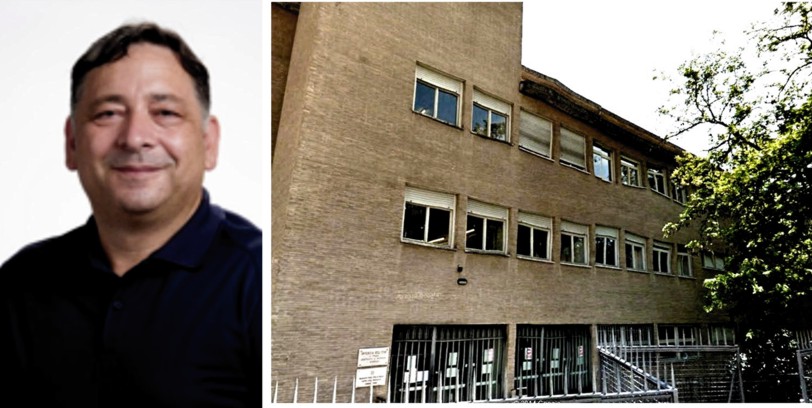
Friday, August 15, 2014
Legal Timeline Of The Main Case, On Which The Next Ruling By Supreme Court Could Be Final
Posted by catnip

Cassazione (Supreme Court of Italy) seen from the east across the Tiber River
Todays Status
The Supreme Court is due to rule, possibly in the autumn, on what might be the final appeal by Sollecito and Knox on grounds which have not been published. Main steps prior to this:
November 2007
Meredith Kercher is found violently killed in her home while studying abroad in Italy. Her housemate, Amanda Knox, and Amanda’s friend Raffaele Sollecito, as well as Amanda’s boss, Patrick Lumumba, are arrested. A fourth person, Rudy Guede, is tracked down and also arrested. Patrick Lumumba’s alibi is confirmed and he is released.
December 2007, January 2008
Due process hearings authorise the continuation of preventative custody for the suspects, on the grounds of flight risk and possibility of tampering with the evidence.
October 2008
Preliminary Hearing Court, Perugia, Micheli presiding ““ after investigations have completed, the committal hearing finds there is a case to answer and remands Amanda Knox and Raffaele Sollecito to stand trial on the charges of :
- (A) aggravated murder in company of Meredith Kercher
(B) illegal transport of a knife from Raffaele Sollecito’s apartment
(C) aggravated sexual assault in company of Meredith Kercher (later folded into charge (A), on the grounds of being part of the same criminal event)
(D) illegal profiting by possession, to wit: of a sum of money approx. €300 and of credit cards belonging to the victim, and her mobile phones
(E) simulation of a crime, to wit: staging a break-in in Filomena Romanelli’s room
(F) Amanda Knox, in addition, calunnia, for falsely claiming, knowing him to be innocent, Diya Lumumba also called “Patrick”, of being the author of the murder
Rudy Guede is tried summarily “on the papers”, as he has requested the expedited trial procedure (“fast-track” trial) and is found guilty of charges (A) and (C), and not guilty of the theft, charge (D), and sentenced to life, automatically discounted to 30 years for choosing the expedited trial procedure.
December 2009
On appeal to the Court of Appeals, Perugia (4/2009, on 22 December 2009), his sentence is reduced to 24 years, automatically discounted to 16 years, the aggravating factors of the charges not being found by the court. His final appeal, to the Supreme Court of Cassation, First Criminal Section, is rejected (7195/11, hearing of 16 December 2010, reasons handed down 24 February 2011).
December 2009
Court of Assizes, Perugia, presided over by Massei ““ finds Amanda and Raffaele guilty of all charges (except the theft of the money and credit cards) but without the aggravating factors applying, and sentences them, with mitigating factors included, to 26 years for Amanda, and 25 years for Raffaele (the extra year for Amanda being for the calunnia).
October 2011
Court of Appeals of the Court of Assizes, Perugia, presided over by Hellmann (after a last-minute replacement) ““ trial convictions quashed, except for the calunnia charge against Amanda (charge (F)), where sentence was increased to time served (3 years); both prisoners released (4/2011, decision 3 October 2011, reasons handed down 5 December 2011).
March 2013
The Supreme Court of Cassation (25/3/2013) found the acquittals on charges A&C, B, D, and E to be unsafe, and annulled that part of the decision, remanding the matter to the Florentine jurisdiction, as per the usual cascade rules, for a fresh determination, and rejected Amanda Knox’s appeal on the charge (F) conviction and sentence.
January 2014
Court of Appeals, Second Chamber, Florence, presided over by Nencini ““ trial convictions on the non-calunnia charges upheld, therefore sentence increased to 28 years and 6 months for Amanda (11/13, decision 30 January 2014, reasons handed down 29 April 2014). All convicted parties to pay the relevant compensation to the various injured parties. Appeals to the Supreme Court of Cassation have been lodged.
Associated Timelines
See the posts here and here on the timing of events arrived at by the trial judges.
Friday, July 04, 2014
The Status Of The Various Computers In The Case And Whether Anything Nefarious Happened To Them
Posted by Sallyoo
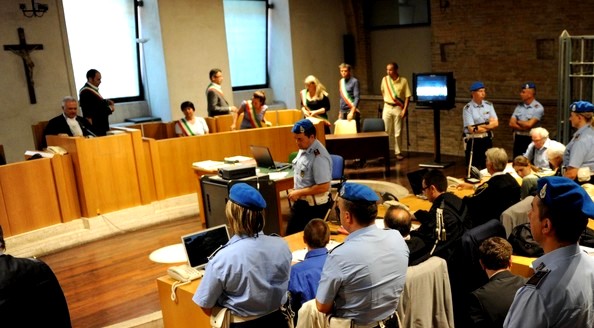
Trial court 2009 on one of several days computer and internet activity was testified to
1. Computer use as high-stakes evidence
There have been many arguments about computers during the case.
They began at the very beginning, and there is even now, in the final appeal by Sollecito to the Court of Cassazione, one remaining somewhat fantastical theory.
The facts surrounding the computer evidence collected by the prosecution have been obfuscated and contradicted by the defence using exactly the same techniques as have been used about the DNA and other forensic evidence in the case.
Blind the court (and the public) with hypotheses which very few people can follow, and use this ignorance to spread confusion and doubt.
Let’s try to shed some light.
2. Five key computers, plus
We know that Sollecito is pretty familiar with computers, he had two at the time, a MacBook and an Asus [1], both portables.[2] His apartment had a decent broadband connection, supplied, (using the Telecom Italia infrastructure) by Fastweb.
We know that both of these computers were sequestered from his apartment on the morning of Nov 6 2007, when Sollecito accompanied a squad of policemen despatched to search his apartment.
We know that the police removed, (on Nov 7), from the house in Via Della Pergola (where there was no telephone nor broadband service) a MacBook belonging to Meredith, a Toshiba belonging to Knox, and a portable computer belonging to Laura Mezzetti.
The police also took an HP portable from Lumumba’s apartment.
There is even another computer which the police already had possession of, and that is a Sony portable belonging to Filomena Romanelli. This computer Filomena herself had taken away from her bedroom shortly after the discovery of the murder, and which the questura, in the evening of Nov 2, required her to hand over to them because it formed part of the ‘crime scene’.
3. The police HD analysis begins
On Nov 13 a postal police technician (Marco Trotta) received a box containing five computers (two from Sollecito, Knox, Meredith and Lumumba).
On Nov 15, in the presence of Formenti, (a consultant nominated by the defence) Trotta took them apart (removed the hard disks) and attempted to make copies of the data recorded on them.
This is the point at which it is alleged the destruction of three hard disks occurred.
It is difficult to believe that this is the case. Not only because the equipment used had never before (or since) managed to trash a hard disk (and it had no problems with Lumumba’s disk) but also because of the state of Filomena’s computer, which never got anywhere near Trotta.
All of the computers had of course been in the hands of the squadra mobile for some days before being consigned to Trotta, allowing for the possibility of some earlier interference by some malfeasant policeman.
This isn’t likely, not only because Trotta insists that the computers were complete and superficially undamaged, and the hard disks factory sealed when he dismantled the computers, but also because of Filomena’s computer.
4. Filomena’s Sony machine
It is now time to go a little deeper into the history of Filomena’s Sony.
This was a fairly new machine, which she kept in a substantial computer carrying case. It was working perfectly on Oct 30 when she last used it. She had left it in her bedroom, the case standing upright beside her bed, when she went off to spend the brief holiday with her boyfriend.
She found it, still in the carrying case, lying flat in a pile of stuff under the broken window of her disturbed bedroom. [3]
The defence commissioned a Computer Expert Report, entered during the Massei trial, which talked about the reason for the data being irrecoverable on the three computers’ disks.
Their conclusion was that the electronic circuitry controlling the hard disks had, in all three cases, suffered damage, most probably due to an electrical overtension. The circuitry had been ‘fried’.
They were unable to be certain how or when this might have occurred, or to opine on whether it was deliberate.
Filomena, in the presence of Gregori, (another communications police officer), at the Questura on the evening of Nov 2 attempted to turn on her Sony. It wouldn’t work. The hard disk would not respond properly.
When she got it back on Dec 18 and gave it to a private computer technician, he said the control circuitry on the hard disk is ‘fried’. Exactly the same fault as had occurred on the other three, which we are expected by th defense to believe was either a deliberate piece of police sabotage, or proof of police incompetence.
5. The Sollecito computers
The important computers, of course, are those owned by Sollecito because he is, even now, still trying to force an alibi out of them.
The MacBook has been accurately interrogated to death, most particularly by a defence expert named Antonio d’Ambrosio who gave very clear testimony at Massei on 26 Sept 2009.
He was even generous enough to acknowledge that the investigations carried out by the postal police were correct, and well interpreted, and that he was able to uncover a little more information simply because he wasn’t limited by forensic protocols (and could therefore reveal information not visible to the Encase software used by the police) when he examined a copy of the cloned disk from the Mac.
Basically the only ‘news’ in this interesting testimony was an interaction with the Apple website at 00.58 on Nov 2, which he did consider a human interaction with the computer.
6. Activity on the Internet
Sollecito maintains he spent the whole evening and night in his flat. At first his story was that he was sending e-mails and surfing the web. This was quickly demolished by reference to the IP log supplied by Fastweb, the broadband supplier.
It’s necessary to get slightly technical here.
Most of what we call The Internet, and certainly everything which is called The Worldwide Web, including e-mail clients, subscribe to a protocol which (in shorthand) means everything is a Port 80 request.
The individual computer, via its router, contacts the ISP (Fastweb, in this case) and identifies itself by means of a unique IP address. The ISP then directs the communication to the IP of the website requested.
This is all recorded on the Fastweb network. It is certain that no Port 80 requests were made from Sollecito’s apartment (whichever computer he may have been using) between 18.00 on Nov 1 and 00.58 on Nov 2.
There are parts of the international communications network which don’t use Port 80 protocols. The most ‘innocent’ of these are Peer to Peer (P2P) networks ““ in widespread use for distributing and downloading music and video files.
Sollecito certainly availed himself of these services, using a program called Amule on his Mac. He had a folder containing downloaded files, which was accessible to the program, and thus also accessible to anyone in the world who wanted a copy of something which Sollecito had in this shareable folder on his computer.
If he wished to save the file for posterity, he would move or copy it from this accessible folder into his own archive.
Video files are large, and they take a long time to download. Clearly, to download a file, or to make your publicly accessible folder available, the computer has to be turned on and connected to a router.
If you use these file sharing services extensively, it implies that you keep your computer turned on and connected all the time. It seems likely that this was Sollecito’s habit.
Clearly, you need to automate this sort of transfer ““ often a large file will be accessed in part from one remote computer, and another part will be located on another remote computer ““ so you simply instruct Amule to get you a film, or a list of films, and you can walk away from the computer.
Even D’Ambrosio is unable to be certain that a human interaction occurred at 21.26 on Nov 1, or whether a pre-requested download of Naruto commenced.
However, no IP addresses are exchanged when connecting to a P2P network, and so it is impossible (from ISP records) to trace any traffic.
It is possible though, from the hard disk, to discover what has been downloaded and saved to a computer on a P2P network, and exactly when ““ but to distinguish an automated process from a user instigated one is not possible.
7. Computers and Hellmann appeal
Now we move onto the Hellmann appeal, where a report from this same consultant D’Ambrosio was accepted into the case files. I haven’t been able to find this report, and Judge Hellman doesn’t even refer to it in his sentencing report.
However, the gist of this D’Ambrosio report is included in the current ricorso (appeal) from Sollecito to the Court of Cassazione.
8. Computers and Cassation appeal
We hear a bit about screensaver behaviour, and quite a lot about post Nov 1 interactions overwriting earlier actions.
The major ‘fresh’ theory now depends on asserting (more than four times in the ricorso) that the postal police destroyed Sollecito’s Asus, and that this action has meant that Sollecito’s alibi cannot be proved.
The lack of any signs of interaction on the Mac can be explained (so we are informed) by the Mac and the Asus being networked together, using a file sharing utility named Samba, and if the (broken) Asus could have been accessed it might have shown that it had been controlling the Mac.
So the Mac would have been doing things at the command of its owner, but because the owner was interacting with the keyboard of the Asus rather than that of the Mac, these actions are undetectable on the Mac.
This is what we are now being asked to believe.
9. Conclusion and way forward
I think this is an accurate summary of the relevant parts of ‘computer evidence’ discussed, or deposited, during the hearings and in the ricorso. I look forward to any comments, clarifications, corrections, but above all, to any new theories about how and when the four hard disks got trashed.
From other sources there are an additional two hints at possible new or ignored evidence:
The BBC reported, on 14.03.2009, the following sentence. “A second computer belonging to Mr Sollecito also showed no activity but the suspect had himself admitted it had been broken before the crime was committed.” [4]
And then we have Sollecito, in his prison diary of 11.11.2007, being rather more than aware that his computer is not going to be useful to him as an alibi.
I have been very anxious and nervous in the last few days, but to see my father who tells me “do not worry, we will get you out” makes me feel better. My real concerns are now two: the first one derives from the fact that, if that night Amanda remained with me all night long, we could have (and this is a very remote possibility) made love all evening and night only stopping to eat… it would be a real problem [casino] because there would be no connections from my computer to servers in those hours…
No connections in those hours? Hmmm.
10. My references
[1] This computer is sometimes referenced as an Acer. In Trotta’s testimony (he is reading from notes) it is listed as an Asus, so I have used this name. There is only one computer whether it’s an Asus or an Acer.
[2] There is a reference to a non portable computer in Sollecito’s apartment (in the testimony of Popovic). This is the only mention of any non-portable (i.e. desktop or tower cased machine with separate monitor). Given the position from which Popovic saw the screen (on a desk, with Knox sitting in front of it) it seems likely that she was mistaken.
[3] Amanda Knox frequently refers to seeing Filomena’s computer on her desk after the ‘break in’. At one point in her testimony she changes her mind and corrects herself to change the computer to camera.
[4] http://news.bbc.co.uk/2/hi/uk_news/7943828.stm I have not found another source for this comment.
Tuesday, November 12, 2013
Differences Between Micheli, Massei, Hellmann and Nencini Courts Pointing To Almost Certain Outcome
Posted by Peter Quennell

What are the biggest differences? In fact the Supreme Court already pointed them out: science, scope, and balance.
Judge Micheli, Judge Massei and Judge Nencini all have a very extensive criminal-case background. All three have handled many cases of murder, many cases against the mafia, and many cases involving criminal science. All three have remarkable success records and have hardly ever been overturned on appeal.
Judge Hellmann and his court are the extreme outliers. Until forced into early retirement by the Council of Magistrates, he had been a (quite good) business judge. His one major criminal case, years ago, had led to a farcical outcome, and he was ridiculed for this at the time.
Cassation made it very clear that he simply did not reflect a knowledge of the precise Italian law on scope and balance at the appeal level, and that he mishandled the science. In fact, as he actually said, the reason he appointed two independent DNA consultants was that he was at sea on the science.
That left Judge Hellmann’s panel of judges like a rudderless ship, bereft of the kind of good guidance from the lead judge on science, scope, and balance that comes only from many years of experience.
Which, given a level playing field, the pathbreaking Italian system enforces competently like almost no other.
Above all as the Hellmann Report makes extraordinarily plain, his court came to be swayed by the CSI Effect, with the help of two tainted consultants and probably the irresponsible Greg Hampikian in Idaho.
The CSI Effect is a phenomenon very, very unlikely to happen in Judge Nencini’s court. First, take a look at this good explanation of what the CSI Effect is in the Fox Kansas City video.
Many crime shows such as the BBC mysteries and the Law & Order series and spinoffs show investigators solving their crimes in the old-fashioned way. Lots of witness interviews and alibi and database checking, and walking around and loose ends and lying awake at night puzzling. And often there’s a big stroke of luck.
But if you watch the very popular CSI Las Vegas series and its spinoffs in Miami and New York, and the various clones on other networks, you will see something very different indeed.
When those shows first began airing worldwide in the late nineties, the producers explained that audiences increasingly appreciate learning something new when watching a show, and it is true, one sure can load up on the trivia.
But you will also see the US equivalent of Dr Stefanoni and her forensic team in those shows, roaming far beyond the narrow crime scene, interrogating witnesses and checking alibis and finding a lot of non-forensic evidence, and even at times drawing guns.
Most unreal is that, time and again, the forensic evidence testing is clearcut and takes just a few minutes and instantly clinches the case.
- There are several articles like this one and this one on whether the Casey Anthony jury was affected by a shortfall in the starkness of the forensics when the behavioral evidence seemed so strong.
- There are several articles like this one and this one on whether the appeal verdict outcome in Perugia might be affected in the same way.
- There are many articles like this one and this one and this one and especially this one saying there is a tough added burden on investigators and juries without a commensurate improved outcome.
With conviction rates declining in the US and Europe, professionals are taking a scientific look at whether the CSI Effect is one big cause of that decline.
At the macro level in the US this writer doubted that the CSI Effect is fatally unbalancing takes on the wider evidence. The same conclusion was reached in this first major study at the micro level.
But the belief in the CSI Effect continues. Articles like this one on an Australian site talk of a backlash against too many acquittals. Some articles like this one argue that maybe lay juries are out of their depths.
And judges and prosecutions are taking countermeasures.
In Ohio and many other states prosecutors and judges are acting against a possible CSI Effect in their selection and briefing of juries. And an NPR report came up with these findings.
Some states now allow lawyers to strike potential jurors based on their TV habits. Judges are issuing instructions that warn juries about expecting too much scientific evidence based on what they see on TV.
In the field, Shelton says death investigators sometimes run useless tests, just to show they went the extra CSI mile.
“They will perform scientific tests and present evidence of that to the jury. Even if the results don’t show guilt or innocence either way, just to show the jury that they did it.”
This is coming at a time when death investigators in America have no resources to spare. An investigation by NPR, PBS Frontline and ProPublica shows some states have already opted not to do autopsies on suicides, others don’t autopsy people who die in traffic accidents, and many don’t autopsy people who die over the age of 60.
But Murphy, the Clark County coroner, expects things to get worse.
“You know, we’re in budget cuts right now. Everybody’s in budget cuts. Las Vegas is no different than anybody else. We’re hurting. We’re going to feel that same crunch as everybody else,” he says.
One of Zuiker’s great disappointments is that, for all its popularity, his fictional Las Vegas crime lab didn’t generate more political support to fund death investigation.
“I’ve done my job. You know, we’ve launched three shows that cater to 73.8 million people a week and is a global phenomenon and the largest television franchise in history. We hoped that the show would raise awareness and get more funding into crime labs so people felt safe in their communities. And we’re still hoping that the government will catch up.”
None of the science in Meredith’s case has ever been discredited in court. Even in Judge Hellmann’s court the agenda-driven independent consultants Conti and Vecchiotti failed - and under cross-examination admitted it.
Also remember that the Hellmann court did not get to see two very key closed-court scientific presentations (the stark recreation of the attack on Meredith, in a day of testimony, and later in a 15 minute video) which had a very big balancing effect on the Massei court.
Right now the reputation of not one defense-campaign stooge who has attacked the science remains intact.
Greg Hampikian has headed for cover. He had widely proclaimed that he clinched the Hellmann court’s outcome, in an act which may well have been illegal. Unsurprisingly, he is now trying very hard to hide his own claimed “proof ” of shortfalls in the science, as Andrea Vogt has been showing in her Boise State University investigation, and as we will soon post more on.
Saul Kassin is another defense-campaign stooge who falsely claimed that he clinched the Hellmann court outcome by “proving” a false confession by Knox - in an interrogation that never even took place.
Despite all of this, maybe as straw-snatching, we can again see an organized attempt to confuse American opinion on the science of the case.
Whether she did this intentionally or not, that is what the PR tool Colleen Barry of the Associated Press was doing when she omitted that the trace of Meredith on the knife is undisputed hard evidence.
Judge Micheli and Judge Massei handled the science, scope, and balance with some brilliance. In all three dimensions Judge Hellmann fell short abysmally.
What is your own bet on the outcome under the exceptionally experienced Judge Nencini?
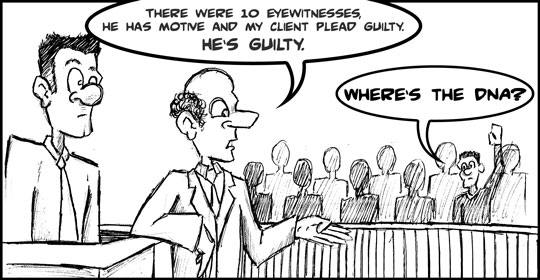
Parts of this post were first posted in 2011 after the disputed and much examined outcome of the Casey Anthony murder trial..
Friday, June 28, 2013
Updating Our Scenarios And Timelines #2: An Integrated Comparison Of The Timing of the Phone-Events
Posted by Cardiol MD
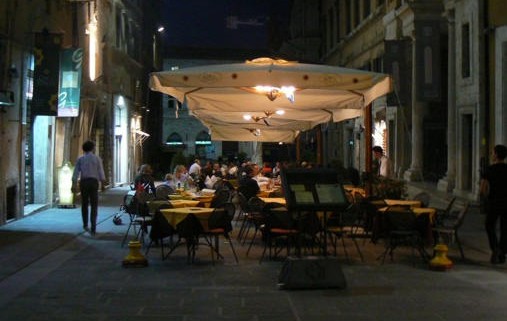
[Above and below: what Meredith missed, outside dining in Perugia at night]
1. Point of our series
TMJK’s core focus has long been upon “What happened at 7 Via della Pergola, in Perugia, on the night of November 1-2, 2007?”
Over the last 4+ years, more than 20 TJMK posts, with more than 400 comments, have addressed the subject of possible scenarios and timelines for those events. They represent a lot of thought and many are worth reading if you haven’t come across them before.
This post is the second in a series that will reappraise the more probable speculations, using the current state of our information. The first post was four weeks ago.
Reader comments in response to Part 1 amply reflect readers’ interest in exploring the various “˜open Questions’ referred-to, and how efforts to make Knox and Sollecito confront the true answers are obfuscated by their falsehoods.
The Truth of the actions of Knox and Sollecito on November 1st & 2nd, 2007, is so precious to them that they attend that Truth with a “˜Bodyguard of Lies’, to borrow Winston Churchill’s famous WW11 dictum. They even further obfuscate the answers to our questions by selectively employing a Bodyguard of Actual Truths.
The aim of their broken drain-pipe under the sink story (see previous post) was to persuade investigators, and everyone else:
1. That there was a broken drain-pipe under the sink (Massei Translation p.67), and
2. That the alleged water-leak occurred BEFORE the murder.
Their obfuscations include:
1. The omission of references to incriminating truths, e.g. omission of references to the hammer-toe on RS’s right-foot, one of his most incriminating physical attributes (see representative image of a right-foot hammer-toe below), and
2. The inclusion of “Half” truths, and
3. The inclusion of references to non-incriminating truths.
2. Integrated timing of phone events
This post is an integrated comparison of the timing of the phone-events byy coordinated universal time, merging Massei’s sections on Amanda Knox [AKP], and Meredith Kercher [MKP], as well as that of Rafaelle Sollecito [RSP].
[For the day of 31.10.07 it was shown that Meredith’s mobile phone with service provider Vodafone 348-4673711 sent an SMS at 18:27:50 hours using the cell at Piazza Lupattelli sector 7. (this signal is received in Via della Pergola 7.)
The same number received an SMS at 18:29:05 hours (this exchange of messages took place with the number 388-8921724) connecting to the same cell.
[RSP]: − on 31.10.07 Raffaele received *a call+ from the father’s fixed line (No. 080-3958602) at 22:14 for 44 seconds.
With respect to Sollecito’s mobile phone 340-3574303, attention was paid to the entire day of 1.11.07 with the following results]
Which help establish a less-suspicious baseline for comparison with later, more-suspicious results.
[RSP]− 00:00:39 an outgoing call, just after midnight
The phone traffic with regard to the day of 1.11.07 was reconstructed in the following terms (cfr. statement of Assistant Stefano Sisani at the hearing of 20.3.09).
AKP− 00:41:49 hours: outgoing phone call of 20 seconds, to a number whose holder was not identified
RSP− on 1.11.07 *he+ called the father’s house at 00:02:41 for 262 seconds
AKP− 00:57:20: Amanda’s mobile phone sent an SMS, using the cell on Via dell’Aquila 5-Torre dell’Acquedotto sector 3 (which does not provide coverage to Sollecito’s house, since it pertains to Via Ulisse Rocchi, Piazza Cavallotti, etc. and therefore at the heart of Perugia’s historic center). This consisted of the SMS which the young woman exchanged with Raffaele at the end of the Halloween evening to arrange meeting up with her boyfriend and be accompanied home
RSP− 00:57 an incoming SMS 319
AKP− 1:04:58: Amanda’s mobile phone received *a call+ for 53 seconds from the number 075/9660789, located in Piazza Danti 26
RSP− 14:25 an incoming call which lasted 58 seconds
RSP− 16:50 an incoming call, coming from the mobile phone of the father, lasting 214 sec.
RSP− 16:56 another call from the father (64 sec.)
AKP− 20:18:12: Amanda receives the SMS sent to her by Patrick Lumumba, which let her off from having to go to work at the “šLe Chic”› pub on the evening of 1 November. At the time of reception the phone connected to the cell on Via dell’Aquila 5-Torre dell’Acquedotto sector 3, whose signal does not reach Raffaele Sollecito’s house. The young woman was therefore far [i.e. absent] from Corso Garibaldi 30 when the SMS reached her, as she was walking in an area which was shown to be served by the Via dell’Aquila 5-Torre dell’Acquedotto sector 3 cell. This point of her route could correspond to Via U. Rocchi, to Piazza Cavallotti, to Piazza IV Novembre, bearing in mind that Lumumba’s pub is located in Via Alessi, and that Amanda Knox would have had to travel along the above-mentioned roads and the piazza in order to reach the pub
AKP− 20.35.48 Amanda sent an SMS in reply to Patrick, at No. 338-7195723; the message was sent when the young woman’s mobile phone was in Corso Garibaldi 30 or in the immediate neighbourhood. The cell used, in fact, was that of Via Berardi sector 7 − no other [use] was shown for the day of 1.11.07, noting that Amanda declared during hearings that she had switched her mobile phone off once she had returned 323 to Raffaele’s house, since she was more than happy she did not have to go to work and could spend the evening with her boyfriend.]
Knox may also have been LESS than happy that Lumumba preferred Meredith instead of Knox as an employee. This was humiliating-enough to Knox for Knox to decide that the time to cut Meredith down-to-size was now.
[RSP− 20:42:56 call from the father (221 seconds: this is the conversation which Dr. F. Sollecito referred to, made at the end of the film he had just seen in the cinema, which the father recommended to the son, at which point [it is said that] Raffaele informed his father of a problem with a broken drain-pipe under the sink in the kitchen”. ]
Massei Translation page 25: On “the evening of November 1, 2007 at around 10:00 pm, someone called and warned Elisabetta Lana not to use the toilet of her dwelling because it contained a bomb which could explode. Mrs. Lana immediately notified the police of this phone call; and they came to the house but did not find anything. Mrs. Lana and her husband were nonetheless asked to go to the Postal Police the next day to report said telephone call.”
MKP ““ 20:56 hours on 1 November 07, attempted call to Meredith’s mother’s home in England.
MKP ““ 21:58 hours on 1 November 07, attempted call to mobile phone’s answering service, voicemail “˜901’.
MKP ““ 22:00 hours on 1 November 07, dial to Meredith’s London bank “˜ABBEY’.
MKP ““ 22:13:29 hours (9 seconds) on 1 November 07, attempted internet connection. Connection consistent with being attempted from cottage, but inconsistent with being attempted from Mrs.Lana’s.]
Massei Translation, page 331, attributes the above 4 dialings to Meredith absent-mindedly playing with the mobile phone in her hand, and her phone may well have still been in her hand when her attackers surprised her.
Question: Was Meredith’s Phone still in the cottage at Via della Pergola at 22:13:29 hours on 1 November 07? Yes.
At about 22:30 hours Car broken-down nearby. Tow-Truck called-for.
At about 23:00 hours Tow-Truck arrives to load car.
At about 23:13 hours Tow-Truck leaves with loaded car.
[RSP- 23:41:11 RS’s father attempts phone-call but makes no oral contact. Father leaves message which is not received until 06:02:59 on 2.11.07.]
This 23:41:11 call was attempted during the very time-frame of the attack on Meredith, her murder, and the flight of her killers with her mobile telephones. Meredith’s Phone[s] were removed from her cottage by about Midnight, less than 20 minutes after this attempted call.
With regard to the day of 2.11.07:
[for 2.11.07 the first record is that of MKP - [0]0:10: 31, “when it has been established as an incontrovertible fact that Meredith’s English mobile phone was no longer in Via della Pergola, the mobile phone having received the contact under the coverage from Wind signal [cell] ..25622, which is incompatible with the cottage.”]
Question: Was Meredith’s Phone still in the cottage at Via della Pergola at 00:10: 31, 2.11.07? No!
Therefore Meredith’s English mobile phone had been removed from her cottage between 10.13.39 p.m. on 1.11.07 (more likely 11.13 p.m. when tow-truck departed) and 0:10:31 on 2:11:07; about 10 ½ minutes after midnight ““ say Meredith’s Phone[s] Removed By About Midnight, allowing for the time-elapse before being dumped near Mrs. Lana’s place. (Hellmann obfuscated this time-span on page 14 of his report, implying it to be more than 10 hours after midnight rather than about 10 ½ minutes after midnight.)
At some time before Meredith’s attackers fled, they had seized her mobile telephones, probably near the beginning of the attack, having started their attack with a pre-emptive strike to intimidate Meredith, remove all hope, surround her, display knives, seal all possible escape-routes, and remove any possibility of phone-calling for help.
Immediately after Meredith’s scream her attackers had silenced her with the fatal stabbing, and then fled immediately.
They fled with her already-seized but still switched-on mobile telephones, probably without locking anything, including Meredith’s door.
Their over-riding and 1st imperative was not-to-be-caught-at-the-crime-scene.
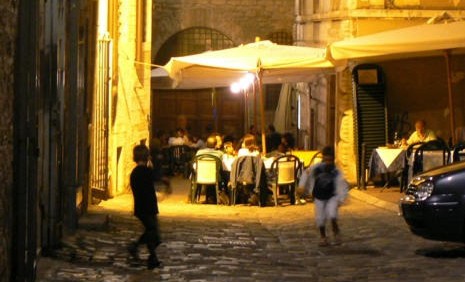
Having abruptly fled the crime-scene their 2nd imperative was not-to-be-caught-in-possession-of-Meredith’s-telephones.
Avoid Police!
Just seeing police could panic the killers into instant dumping of the telephones, without even needing to know why the police were where the police were (There is no need to invoke any awareness by the phone-dumper[s] of the reason the Police were near Mrs. Lana’s place - the hoax-call.). So if the killers saw flashing police-lights, or any other sign of police near Mrs. Lana’s place, that sign could be enough to explain panic phone-dumping - then and there (not considering whether the phones were switched-on or switched-off).
In “Darkness Descending” page 13, it states:
Mrs. Lana’s backyard overlooks a steep slope that falls sharply into the valley below. It is heavily overgrown with trees and bushes, an ideal place to dispose of evidence. If the phones had fallen just a few yards further, they would certainly have gone over the edge of the cliff, down into a 50m gully, straight into a thick scrub of nettles, and probably been lost forever”¦.
In “Death in Perugia” Follain states (Book page 62; Kindle Locations 343-6), apparently as his opinion re Lana’s daughter finding Meredith’s English phone: “It was hidden in some bushes, and she would never have found it if it hadn’t started ringing.”,
Having accomplished this 2nd imperative, Meredith’s killers paused to attend to their 3rd imperative: re-model the crime-scene, minimising the evidences of their identities, cleaning-up the evidences that it was “˜an inside job’, and simulating the appearances that it was “˜an outside job’.
One should bear in mind that these killers should have still been overwhelmed by their having actually committed a crime beyond their wildest imaginings.
Their panic impaired their thinking, and their ignorance, immaturity, inexperience, lack of technical resources and their arrogance precluded their selecting deceptions more effective against knowledgeable, experienced professional crime-investigators with a large fund of resources. They probably think that throwing the stone from inside Filomena’s room was a brilliant deception.
They wish it had never happened.
They wish they could make it unhappen (Hellmann/Zanetti got close to fulfilling this wish, but got themselves unhappened by Cassation)
They wish they could prevent the discovery of Meredith’s murder.
They cannot prevent the discovery of Meredith’s murder.
They may be able to postpone its discovery, but not longer than the inevitable return of the cottage-mates, later that day.
They believe that the person who “˜discovers’ a murder may become 1st-suspect.
They may be able to manouevre others-than-themselves into being the ones that make the discovery ““ quite a wily aim.
It is beyond reasonable doubt that
1. Meredith’s killers seized her mobile telephones, and that
2. Her killers did not switch-off these mobile telephones, and that.
3. Her killers threw the telephones into an apparent ravine, landing in Mrs.Lana’s garden, and that
4. This phone-dump was accomplished before 00:10: 31, 2.11.07, and that
5. Amanda Knox caused:
- i. the English phone to ring at 12:07:12 (16 seconds) and be discovered by Mrs.Lana’s daughter only because it rang , and
ii. the other phone, registered to Filomena Romanelli, to ring, very briefly, at 12:11:02 (3 seconds) and,
iii. the English phone to ring again, also very briefly, at 12:11:54 (4 seconds), after being brought into Mrs.Lana’s house.
6. Sollecito had more than 5 days, from about 11.30 pm on November 1st, 2007 until November 6, 2007, to remove from the killing-knife the traces of Meredith’s DNA.
In the opinion of the Court of Assizes (Massei Translation p.325), Amanda Knox’s call to Meredith’s phone was
...the first indispensible step before putting the [348] planned staging into action. The lack of a reply, since the poor girl was obviously already dead, gave a reason for reassurance about the fact that the young woman’s phone had not somehow been retrieved, [and] was therefore safe in the spot where it had been thrown, which, according to the expectations [in the minds] of the murderers was a precipice or some other inaccessible spot, rather than in the garden of a villa located barely outside the city, where the vegetation concealed it from view.
A plausible alternative opinion is that Knox’s calls to the obviously already dead Meredith were an obfuscatory stab to simulate what Knox imagined an innocent person would do.
Knox may well have expected that she was safe from phone-discovery, but these calls turned out to be the very instrument of a phone-discovery.
Had Knox not made these obfuscatory stabs, in the time-frame she made them Meredith’s phone would not have rung when it did ring and would therefore not have been discovered by Mrs, Lana’s daughter when she did discover it.
For the day of 2.11.07, when Meredith was already dead, the traffic registered for the Vodafone number was shown to be the following:
[MKS ““ 00:10:31; duration and caller unspecified, but Wind signal [cell] incompatible with cottage, but compatible with Mrs. Lana’s place.
Therefore, Meredith’s mobile cell-phone had already been taken away from the cottage by her killers. It is not possible to determine from this phone-record whether the phone was switched on or off, but this phone was discovered at Mrs. Lana’s place because it was ringing, and therefore was “on”.
MKS− 12:11:02 (duration of 3 seconds): Amanda’s phone call reached the phone and was diverted to the answering service. The Vodafone cell used by Meredith’s service provider was situated in Strada Vicinale S. Maria della Collina sector 1.
AKP− 12:11:54 (4 seconds): another call is made towards Meredith’s English mobile phone number (the cell used is the one in Via dell’Aquila 5-Torre dell’Acquedotto sector 3, thus compatible with Sollecito’s house)
RSP− 06:02:59 Raffaele Sollecito received the SMS from his father wishing
Raffaelle a good night; from the evidence of the mobile phone record printouts of Dr. Francesco Sollecito, it was shown that the sending of the message occurred at, as has been said, 23:41:11 of 1.11.07. This was the last SMS sent from that mobile phone during the whole day of 1.11.07]
3+ Hours after receiving his father’s message from 23:41:11 of 1.11.07:
[RSP− 09:24 Raffaele Sollecito received a phone call from his father lasting 248 seconds]
At this time RS’s consiousness would be dominated by his guilty knowledge, and probably far-advanced in the accomplishment of the 3rd imperative.
Did RS and father spend 4+ minutes discussing the weather?
This is the first father/son opportunity to formulate the two-pronged water-leak story.
Although AK had already been to the hardware store 2 hours before, they may well not have known the potential DNA problems with the knife, the need to scrub it vigorously, to clean-out, and repair the drain-pipes under the sink, and the need to return the knife to RS’s kitchen drawer.
As it turned-out, Sollecito had more than 5 days, from about 11.30 pm on November 1st, 2007 until November 6, 2007, to remove from the killing-knife the traces of Meredith’s DNA.
They probably did not know that incriminating stains could be invisible, but can be revealed byLuminol.
RSP− 09:29 another call was received lasting 38 seconds
RSP− 09:30 (duration unspecified?) the father called Raffaele; the call connected to the Vial Belardi sector 7 cell.(the best server cell for Corso Garibaldi 30).]
These two calls were probably spent dotting “˜i’s, crossing “˜t’s, and exchanging options, such as enlisting sister Vanessa’s skills and contacts.
Another 2+ Hours later:
[AKP− 12:07:12 (duration of 16 seconds) Amanda calls the English phone number 00447841131571 belonging to Meredith Kercher. The mobile phone connects to the cell at [346] Via dell’Aquila 5-Torre dell’Acquedotto sector 9 (the signal from this cell is picked up at Sollecito’s house)
AKP− 12.08.44 (lasted 68 seconds) Amanda calls Romanelli Filomena on number 347-1073006; the mobile phone connects to the Via dell’Aquila 5-Torre dell’Acquedotto sector 3 cell (which covers Sollecito’s house)
Discovery will be inevitable when Filomena eventuallyarrives-back at the cottage.
AK/RS have accepted that they have to “˜stand-pat’ with their efforts so-far to accomplish their 3rd imperative.
Amanda did not say a word in this phone-call to Filomena about Amanda’s phone call to Meredith, thereby withholding information that should have led Amanda to initiate discovery of Meredith’s body, and help Amanda to manouevre someone other than Amanda into being the one who “˜discovers’ Meredith’s body.
AKP− 12:11:02 (3 seconds) the Vodafone number 348-4673711 belonging to Meredith (this is the one [i.e. SIM card] registered to Romanelli Filomena) is called and its answering service is activated (cell used: Via dell’Aquila 5-Torre dell’Acquedotto sector3)
MKS: For the day of 2.11.07, when Meredith was already dead, the traffic registered for the Vodafone number was shown to be the following:
− 12:11:02 (duration of 3 seconds): Amanda’s phone call reached the phone and was diverted to the answering service. The Vodafone cell used by Meredith’s service provider was situated in Strada Vicinale S. Maria della Collina sector 1.
AKP− 12:11:54 (4 seconds): another call is made towards Meredith’s English mobile phone number (the cell used is the one in Via dell’Aquila 5-Torre dell’Acquedotto sector 3, thus compatible with Sollecito’s house)
AKP− 12:12:35 (lasting 36 seconds) Romanelli Filomena calls Amanda Knox (No. 348-4673590); Amanda receives the call connecting to the cell on Via dell’Aquila 5-Torre dell’Acquedotto sector 3 (still at Raffaele’s house)
AKP− 12:20:44 (lasting 65 seconds) Romanelli F. calls Amanda, who receives the call connecting to the cell in Via dell’Aquila 5-Torre dell’Acquedotto sector 9 (good for Corso Garibaldi 30)
AKP− 12:34:56 (48 seconds): Filomena calls Amanda who receives it from the cottage on Via della Pergola 7 (the cell used is that on Piazza Lupattelli sector 7. As mentioned, Raffaele also used the same cell when he called the service centre at 12:35 hours to recharge [the credit of] his mobile phone)
RSP− 12:35: Raffaele’s mobile phone contacted a service centre for a phone [credit] recharge (the cell used was that of Piazza Lupattelli sector 7, which gives coverage to the little house on Via della Pergola 7. The signal in question does not reach Corso Garibaldi 30, which instead is served by the signal from Piazza Lupattelli sector 8)
RSP− 12:38: Vodafone sent a message of confirmation of phone [credit] recharge (Piazza Lupattelli sector 7 cell, good for Via della Pergola 7)
RSP− 12:40: incoming call from the father’s mobile phone (lasting 67 seconds; connection through Piazza Lupattelli sector 7 cell, compatible with the Sollecito’s presence near the little house)]
Do RS and father exchange caveats?
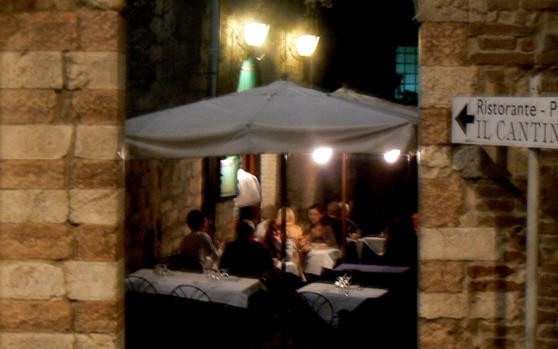
[AKP− 12:47:23 (duration of 88 seconds): Amanda calls the American (USA) number 00120069326457, using the cell on Piazza Lupatetlli sector 7; the phone call takes place prior to the one which, at 12.51.40, Raffaele Sollecito will make to “š112”›, connecting to the cell on Via dell’Aquila 5-Torre dell’Acquedotto sector 1, which gives coverage to Via della Pergola 7]
In “Waiting To Be Heard” Knox can hardly deny having made this 1st call, acknowledges making the call, and purports, now, to recall its substance, providing the reader with her version of what was said.
[AKP− 13:24:18 (duration of 162 seconds): Amanda calls the same American number which corresponds to the home of her mother, Mrs Edda Mellas, using the same cell. It is obvious that the young woman is inside the cottage, where by this point, several minutes earlier, the Postal Police had shown up, [347] represented by Inspector Battistelli and Assistant Marzi, who were engaged in the task of tracking down Filomena Romanelli, who was the owner of the Vodafone phonecard contained in the mobile phone found earlier in the garden of the villa on Via Sperandio]
In “Waiting To Be Heard” Knox can hardly deny having made this 2nd call either, she acknowledges making the call, and provides the reader with her current version of what was said.
[RSP− 12:50:34 outgoing call directed at mobile phone 347-1323774 belonging to Vanessa Sollecito, sister of the defendant; duration 39 seconds. Connection to Piazza Lupattelli sector 7 cell 320
RSP− 12:51:40 Raffaele Sollecito called “š112”› to inform the Carabinieri of the presumed theft in Romanelli’s room (duration 169 seconds; connection to Via dell’Aquila 5-Torre dell’Acquedotto sector 1 cell, which covers Via della Pergola 7)
RSP− 12:54: a second call by Raffaele to “š112”› (57 sec.; connection to Piazza Lupattelli sector 7 cell)
MKS− 13:17:10 (lasting 1 second): the cell used was located in the same place, sector 7
AKP− 13:27:32 (duration of 26 seconds): Amanda calls the American number 0012069319350, still using the cell at Piazza Lupattelli sector 7.
AKP− 13:29:00 (duration of 296 seconds) Amanda receives [a call] from No. 075/54247561 (Piazza Lupattelli sector 7 cell)
RSP− 13:40:12: incoming call from the father (94 sec.; Via dell’Aquila 5-Torre dell’Acquedotto sector 1 cell)]
AKP− ?13:48:33 (1 second): this is an attempted call to her mother’s number
““ see below at 13:58:33
AKP− 13:58:33 (1 second): this is an attempted call to her mother’s number
The above item is a faithful translation from the Massei Motivazione section on Amanda Knox’s mobile phone traffic, but is listed out-of-time-sequence; the assigned-time is probably a “˜typo’ ““ “13:48:33” is much more likely correct.
[RSP− 14:33: the father called for 21 seconds (as above)]
Do RS and father exchange more caveats?
[AKP− 14:46:14 (102 seconds) Amanda receives a call from the German number 494154794034, most likely belonging to her aunt Doroty Craft
MKS− 15:13:43 (5 seconds) cell not indicated.
AKP− 15:31:51 (1 second): Amanda receives an SMS sent from the number 389/1531078; at this point the cell being used is the one on Via Cappuccinelli 5/A sector 2, where the Questura [police headquarters] is located
In the hours that followed the [mobile phone record] printouts show that the answering service of Amanda’s number 348-4673590 was activated due to a lack of signal coverage.]
Massei Translation p.324:
Finally, the analyses of the [phone record] printouts highlight that the first phone call made by Amanda on the day of 2 November was to Meredith Kercher’s English number.
The American student called her English flatmate even before contacting Romanelli Filomena to whom she intended to express, as she testified in court, her fears about the strange things she had seen in the cottage, which she had returned to at about 11 o’clock in order to shower in preparation for the excursion to Gubbio which she and Raffaele had planned.
It is strange that Amanda did not say a word to Filomena about the phone call to their flatmate, when the call, not having been answered, would normally have caused anxiety and posed some questions as to why Meredith did not answer the phone at such an advanced hour of the day.
[RSP− 17:01: the father called for 164 seconds; cell used is that of Via Cappucinelli 5/A sector 2, corresponding to the location of the Perugia Police Station
RSP− 17:42: the father called for 97 seconds (as above).
With regard to Raffaele Sollecito’s landline home phone (No. 075-9660789)
The above 2 calls presumably covered final agreements on the Father/son stories.
For the entire day of 1 November and then of 2 November, Raffaele Sollecito’s fixed line was not affected by any calls, either incoming or outgoing.]
This finishes the merged listings of the Massei sections on AKP, MKP, and RSP, using the UPC telephone traffic, reappraising the more probable scenarios surrounding what happened at 7 Via della Pergola, in Perugia on the night of November 1-2, 2007.
Readers are invited to make their own suggestions on probable scenarios, here below or in email.
Monday, April 08, 2013
Experienced Trial Lawyer: There’s Far More Evidence Than UK/US Courts Need For Guilt
Posted by SomeAlibi
The false claim “there is no evidence”
Some amateur supporters of Knox and Sollecito have committed thousands of hours online to try and blur and obfuscate the facts of the case in front of the general public.
Their goal is simple: to create an overwhelming meme that there is “no evidence” against the accused, and thereby try to create a groundswell of support. Curt Knox and Edda Mellas and Ted Simon have all made this “no evidence” claim many times.
At least some some of the media have eagerly swallowed it.
The amateur PR flunkies make up myriad alternate versions of what created single points of evidence, often xenophobic scare stories designed to trigger emotional reactions, which they hope will be repeated often enough to become accepted as “the truth”.
And where things get really tricky, another time honored tactic is to go on at great length about irrelevant details, essentially to filibuster, in the hope that general observers will lose patience with trying to work it all out.
But time and again we have shown there is actually a great deal of evidence.
Evidence is the raw stuff of criminal cases. Let me speak here as a lawyer. Do you know how many evidence points are required to prove Guilt? One evidence point if it is definitive.
A definitive evidence point
If you’re new to this case or undecided, what is an easy example of ONE definitive evidence item that might stand alone? Might quickly, simply, and overwhelmingly convince you to invest more time into understanding the real evidence, not that distorted by the PR campaign?
In fact we have quite a choice. See the footprint which was second on that list.
Now see the table above. I recommend the use of this table of measurement to avoid the lengthy back and forward of narrative argument which so lends itself to obscuring the truth. I would like to present you with this single table of measurements to give you pause to question whether this line that there is “no evidence” is really true or whether it might be a crafted deception.
I present here a summarized view of critical evidence which suggests with devastating clarity that Raffaele Sollecito was present the night of the murder of Meredith Kercher. No lengthy text, no alternate versions, just measurements.
This FIRMLY places Sollecito in the very room where Meredith was attacked and killed.
In the small bathroom right next to Meredith’s bedroom was a bathmat. On it was found a bloody naked right footprint of someone walking straight towards the shower in the bathroom. The blood is that of Meredith.
The footprint is not Amanda Knox’s - it is too big - but we can compare it to the prints taken of Rudy Guede and Raffaele Sollecito.
In Judge Massei’s report the multiple measurements were detailed in the narrative over many sentences and, in that form, their immediate cumulative impact is less obvious. It is only by tabulating them, that we are forcefully hit by not one but two clear impressions:
The measurements are extremely highly correlated to the right foot of Raffaele Sollecito in twelve separate individual measurements. In themselves they would be enough for a verdict of guilt in all but a few court cases.
But they also show a manifest LACK of correlation to the right foot of Rudy Guede, the only other male in that cottage on the night. Have a look for yourself.
If you were the prosecution, or indeed the jury, and you saw these measurements of Raffaele’s foot versus the print, what would you think? Answer the question for yourself based on the evidence admitted to court.
Then, if you compare further, exactly how plausible do you find it that the measurements of the bloody imprint are Rudy Guede’s instead?
Not only are some of the individual measurements of Rudy’s imprint as much as 30% too small, but the relative proportions of length and breadth measurements are entirely wrong as well, both undershooting and overshooting by a large margin (70% to 150%).
Conclusions that must follow
Presented with those numbers, would you consider those measurements of Rudy Guede’s right foot to show any credible correlation to those of the footprint on the mat?
Supporters of the two have tried frantically to create smoke screen around this - the wrong technique was used they say (ruled not so by the court) / they are the wrong measurements (all 32 of them? that Raffaele’s are matching exactly or within a millimetre but Rudy’s are out by as much as -30% to +50%...?).
The severity of the impact on the defence is such that there was even a distorted photoshopped version circulated by online supporters of Raffaele and Amanda until they were caught out early on in coverage. But it is hopeless, because these are pure measurement taken against a scale that was presented in court and the data sits before you.
Have a look at the measurements and understand this was evidence presented in court. Whose foot do you think was in that bathroom that night? Rudy Guede? Or was it Raffaele Sollecito on twelve counts of measurement?
And if you find for the latter, you must consider very seriously what that tells you both about the idea there is “no evidence” in this case and who was in the cottage that night…
Tuesday, September 11, 2012
Raffaele Sollecito’s DNA In Meredith’s Room Could Be Definitive Proof Of Guilt For New Appeal Jury
Posted by James Raper
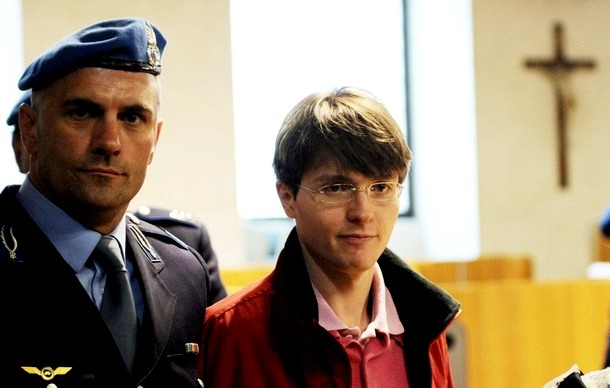
Have you followed our series on the hapless independent DNA consultants Conti and Vecchiotti? And our series on the hapless appeal judges Hellmann and Zanetti?
And our series on their formidable nemesis, Umbria’s Chief Prosecutor, Dr Galati? Who may very well convince the Supreme Court to throw out all of their work?
This post explains why their work probably deserves to be thrown out as it applies to Sollecito’s DNA in Meredith’s room, which still lacks an alternative non-damning explanation for it being there, and which could see him back serving his term in Capanne or Terni Prison before too long.
I want to start this analysis with the following verbatim quote taken from John Follain’s Death In Perugia.
“Comodi asked Vecchiotti about the alleged contamination of the bra clasp: “Is it possible for [Raffaele’s] DNA to end up only on the bra clasp?”
“Possible”, Vecchiotti said.
Comodi insisted: “Probable?”
“Probable”, Vecchiotti retorted.
Anyone who has read the Conti-Vecchiotti Report will be amazed by Vecchiotti’s above reply under cross-examination by Prosecutor Comodi. This for the simple reason that the said report did not at all evaluate the “probability” of any contamination of the bra clasp. It merely did not rule out contamination.
The Conti-Vecchiotti report with regard to the bra clasp: “It cannot be ruled out that the results obtained derive from environmental contamination and/or contamination in some phase of the collection and/or handling of the exhibit.”
On any level of understanding, if one can not rule something out then that makes it possible. But it certainly does not make it probable.
Worse was to come, with the conclusion of Hellmann-Zanetti, that contamination was probable. This though was not so surprising in as much as Hellmann-Zanetti had already indicated in their reasoning underlying the need for an independent report that they would accept the independent experts’ conclusions.
Which they did, apparently accepting Vecchiotti’s above statement on oath as definitive and which, as we can see, they appear to subsequently improve on, since the circumstances referred to below were not mentioned in the Conti-Vecchiotti Report. From Hellmann-Zanetti:
In the opinion of this Court contamination did not occur during the successive phases of treatment of the exhibit in the laboratory of the Scientific Police, but even before it’s collection by the Scientific Police.
Note that (1) the suggestion is that contamination occurred when there was no video recording (thus permitting free speculation), (2) the word “probably” is omitted here seemingly making it a definite occurrence, and (3) “even before” does not exclude contamination when the Scientific Police were there, but the circumstances described below make it, in the opinion of Hellmann-Zanetti, even more probable, it seems. Again from Hellmann-Zanetti:
..it is certain that between the first search by the scientific police, directly after the discovery of the crime, and the second search by the police, on the 18th December, the house at villa della Pergola was the object of several other searches directed towards seeking other possible elements useful for the investigation, during which the house was turned topsy-turvy, as is clearly documented by the photographs projected by the defence of the accused, but actually made by the Scientific Police. And, understandably these searches were made without the precautions that accompany the investigations of the Scientific Police, in the conviction that at that point the exhibits that needed to undergo scientific analysis had already been collected. In this context it is probable that the DNA hypothetically belonging to Raffaele Sollecito may have been transported by others into the room and precisely onto the bra clasp”¦”¦”¦..the fact that [this] is not an unusual occurrence is proven by studies cited by the expert team and also by the defence consultants”¦”¦..
So Hellmann-Zanetti are talking about the ordinary police investigators being primarily responsible.
As the Vecchiotti quote at the beginning of this post is not put in any context, it is impossible for me to know whether she was referring to the Scientific Police as seen in their videos or whether she was alluding to other recorded searches, say, by the ordinary police, but which were not on video.
What we know of the police searches is as follows. From the Massei trial sentencing report:
While forensic activity was still in progress (Note: it having been going on since the 2nd) “the house was accessed on November 4th 2007 involving, accompanied by staff from the Perugia Police Headquarters, the three occupants and housemates of the victim.
The days of November 6 and 7 were taken up by the search activity of personnel from the police headquarters of Perugia”¦.on November 6” (Note: the day after conclusion of the Scientific Police activity) “no-one entered Meredith’s room other than the three performing the search. On November 7 there was another entry into the house “for the problem of the washing machine, to collect the clothes; but I (Napoleoni) know that they did not go into the other rooms…..
They wore gloves and shoe covers….
Massei also records that Profazio stated that whilst he was aware from Stefanoni that the bra clasp had not been collected, nevertheless he had not seen it on the 6th and 7th.
As we know, the Scientific Police returned to the house on the 18th December specifically for the purpose of collecting the bra clasp (the first thing they did) and using luminol, and in addition to this being on video the defence lawyers were watching the live recording outside. It was observed by the defence lawyers at that stage that the mattress was in the living room and that articles had been moved around (topsy-turvy) in her bedroom.
From the above it might be reasonable to conclude that it was not only the Scientific Police who took the photographs but that it was predominantly they who had already moved items around and taking - it not having been demonstrated to the contrary (because not on video) - such precautions appropriate to their field of expertise (or at least such as may be determined from the videos).
However the point is, of course, what entitles Vecchiotti and Hellmann-Zanetti to talk about probable contamination at all?
Incidentally, pause here to notice that Hellmann-Zanetti give no credence to environmental contamination, in the sense of DNA floating around on specks of dust, by virtue of not mentioning this at all.
It would seem that the notion that a speck of dust, with Sollecito’s DNA attached, floated into the room and landed bang on a tiny hook, somehow adhering to it, is improbable to even them. It is transfer by manipulation ( tertiary transfer, about which more later) - basically that someone must have stepped on or touched the bra clasp or hook - about which they are talking and as a result of which they deem contamination to have probably occurred.
Without that probability - that is if it remained only a possibility - then the case for direct transfer (directly from the owner of the DNA to an object), rather than tertiary transfer (where the DNA is collected after direct transfer and transferred to another object), would not be undermined as the more probable scenario. This is because, in this context, no-one can rule out possibility, ” possibility” being firmly rooted in the abstract.
What Hellmann-Zanetti think entitles them to talk about the probability of contamination are, and as it transpires only are, the precautions which they say were not followed in collecting and handling the exhibit and for which they suppose the non-scientific police were most likely responsible.
Compliance with these, they say, “guarantees” the reliability of the result. They refer to the Do’s and Do Not’s of successful crime scene management as listed by Conti-Vecchiotti and taken from guidelines from the Louisiana State Crime Police Laboratory, from the U.S Department of Justice, and more relevantly from Evidence Manuals from the New Jersey State Police, Missouri State Highway Patrol and North Carolina State Bureau of Investigation.
There is a predominance of American references but they do also refer to the Good Practice Manual for Crime Scene Management promoted by ENFSI (European Network of Forensic Science Institutes). From Hellmann-Zanetti -
Regarding above all the identification of a genetic profile in an exhibit, it is important that the entire procedure be followed with complete observance of the rules dictated by the scientific community, which are not, to be sure, juridical rules (it is not a law of the State, as Dr. Stefanoni observed), but which do represent a guarantee of the reliability of the result. And since these rules also contain precautions necessary in order to avoid possible contamination, one can understand that the respect of these precautions cannot simply be assumed, but must be proven by anyone who bases his accusations on this result.
Rules and guidelines are not quite the same thing, still less are there standardised guidelines dictated by the scientific community, but let’s not be pernickety. What compliance with the guidelines does, of course, is reduce the risk (the “possibility” and yes, if there are elements supporting it, “the probability”) of contamination, not guarantee that there is not contamination. As any expert in the field will concede, contamination is always possible.
Conti-Vecchiotti listed, apparently, some 54 examples of breach of the aforesaid guidelines. Significant among these (because we know of them and the most was made of them) are the following listed by Follain in his book Death In Perugia-
1. The team failed to put on new gloves after bagging each sample ( probably, as with 2 below, accounting for the great majority of the examples, and Stefanoni admitted this did not happen every time).
2. Items were handled by more than one person without changing gloves (again, as above, admitted).
3. There was a smudge on one of the fingertips of one of the gloves which touched the clasp, so the glove was dirty.
4. The officer who picked up Meredith’s bra clasp passed it to a colleague before placing it back on the floor and then bagging it.
5. Stefanoni’s gloves were smudged with blood and split over her left index when she picked up a sample ( this need not detain us since it is an irrelevant and highly speculative and prejudicial observation, if not entirely erroneous, based on what can be seen from the video).
6. The officer filming the police video walked in and out of Meredith’s room without changing his shoe covers.
7. No security corridor was created for internal access with anti - contamination criteria between the various environments.
8. The initial position of discovery on the floor of the clasp was not the same after 46 days.
The idea of a security corridor which, given the confines of the cottage, and particularly the access to Meredith’s room, would mean, for instance, placing planks on the floor, is a good one, and obviously not followed in this instance though not actually a specific recommendation (though it can be inferred) in any of the guidelines referred to by Conti-Vecchiotti. It would have reduced the risk of carrying DNA into Meredith’s room on the soles of shoe covers.
The alleged breaches were not, of course, outlined in the Conti-Vecchiotti report. They were only mentioned in oral evidence accompanying the showing of the crime scene video in court.
Hellmann-Zanetti, in their report, mention two specific cases only, 3 and 8 above. In respect of “the smudge” they acknowledge, interestingly, that there is an unresolved issue of interpretation as to whether this is a shadow or prior staining! But why even posit a prior staining when it is obvious that the operative had to finger the fabric of the clasp (which was “dirty”) in order to pick the clasp up and show it to the camera? What was the dirt and what was the meaning of this in the context of a transfer of Sollecito’s DNA to the hook? They neither discuss not evaluate. They simply accept Conti-Vecchiotti’s observations as being pertinent and damning without question.
In contrast to Hellmann-Zanetti Massei does discuss and evaluate the probability and the logistics of contamination, with regard to the bra clasp. In fact he spends quite a bit of time on the subject. But before turning to that, let’s have a brief look at the subject of DNA transfer and then remember what Stefanoni (as quoted by Massei) says on the subject.
Primary transfer might occur between a subject (such as myself) and an object. I touch or sneeze over it. Secondary transfer could occur if the said object was moved and “placed” against yet another object so that my DNA is transferred from the first to the second object. Tertiary transfer could occur if someone touched my DNA on the first object and then touched the second object. There are three steps there but one can imagine scenarios with four or perhaps more such steps but with the inherent limitation that the quantity of DNA being transferred is going to reduce with each such step.
It is obvious that when the prosecution produce DNA evidence they are going to argue primary transfer by the accused and just as equally obvious that the defence are going to try and argue contamination, i.e that the presence of their client’s DNA is the product of secondary or tertiary transfer.
Stefafanoni said that secondary or tertiary does not happen unless (1) the DNA is in a substance which is still fresh and reasonably watery after primary transfer, not dried, and/or (2) there would have to be more than mere touch but friction, or at least pressure, as well. Whilst there could be isolated exceptions in practice this makes a lot of sense to me as a layman but in addition I also note that she was not contradicted, at the trial, by any of the defence experts, nor has she been contradicted by Conti-Vecchiotti in their report.
Returning to Massei.
Sollecito was at the cottage 3 or 4 times prior to the murder though on each occasion with Knox. It is thus possible that he left his DNA somewhere there. There is no evidence that he was ever in Meredith’s room before the murder. Thus, if he was not involved in the murder, one must hypothesize that his DNA from somewhere else in the cottage was transferred into Meredith’s room and onto the bra clasp by someone other than him.
Apart from the clasp there was only one other place where his DNA was to be found, mixed with Knox’s DNA, which was on a cigarette stub in an ashtray sitting on a table in the kitchen. From Massei, my numbering:
(1) Certainly, it can be observed that every single place in the house was not tested, and one might think that Raffaele Sollecito’s DNA might have been located in some other places. One can consider the possibility that his DNA from some other place that was not found was transferred onto the bra clasp, but this would have to have been done by someone manipulating the object.
(2) But simple contact between objects does not transfer DNA. Amanda’s and Raffaele’s DNA were both found on the cigarette stub, not just one of them, transferred by the other. It is also important that the bra was the one that Meredith was actually wearing, and the clasp was found under the pillow which was under Meredith”¦”¦. At this point it should also be mentioned that the piece of bra was (then) found under a small rug in Meredith’s room [which protected it] “¦”¦”¦.
(3) It is also observed that the small rug did not show itself to be a good transmitter of DNA. Underneath it there was a sock, and analysis proved that on this sock there were only DNA traces of Meredith. Also the circumstance by which DNA was found on the (tiny) hooks - so on a more limited and rather less absorbent surface than the material attached to them - tends to exclude that Raffaele Sollecito’s DNA could have landed on the hooks, precisely on the hooks, by contamination or by transfer from some other unspecified object.
(4). “¦”¦.any transfer of DNA from the surface of the rug under which the small piece of bra was found would imply that between the two objects there was more than simple contact, touching of each other, but an actual pressure exercised on the rug under which the piece of bra lay. This hypothesis was set aside after Dr. Stefanoni reported “¦”¦.. the deformation of one of the hooks was the same. Vice versa, if some pressure had been exerted on top of it, if in one of the police activities someone had stepped on it—then that deformation would not have remained identical; but the small piece of material and the hooks and eyes had the same form, the exact same type of deformation “¦”¦.. she additionally stated that, having seen the small piece of bra in the early hours of November 3rd rather quickly, the images of it taken on that occasion allowed her a more prolonged and attentive observation, enabling her to declare that the deformation had remained unmodified and unchanged, as did the side on which it was set on the floor.
(5) Objects were moved, necessarily moved, but every object that was in a room, if it was not actually taken away, remained in the same room, without ever moving to another room, or being taken out of the room and then back in. The only parts of the house through which operators from the various places all passed were thus the living room and corridor. One might thus assume that some DNA of Raffaele Sollecito that had been left somewhere in the living room or corridor was moved, and ended up on the hooks. Such a movement of DNA and its subsequent repositioning on the hooks would have had to occur either because one of the technicians walking on the floor on which the DNA was lying hit it with his foot or stepped on it, causing it to end up on the hooks, or because by stepping on them, he impressed onto them the DNA caught underneath the shoe-cover he had on in that moment.
But these possibilities cannot be considered as concretely plausible: to believe that, moving around the house, the DNA could have been kicked or stepped on by one of the technicians, who in that case would have been moving about, and to believe that this DNA, instead of just sticking to the place it had been kicked or stepped on by (probably the shoe, or rather, the shoe-cover), having already been moved once from its original position, would then move again and end up on the hooks, seems like a totally improbable and risky hypothesis.
(6) “¦..and more importantly, none of the operators, after having touched some object which might have had Raffaele Sollecito’s DNA on it, then touched the hooks of the small piece of bra so as to make even hypothetically possible a transfer of DNA (from the object containing Sollecito’s DNA to the gloves, from the gloves to the hooks). In fact, none of the operators during the search of November 6th and 7th even took note of that little piece of bra, and thus in particular no one picked it up.” [Note that this observation is a direct contradiction of the unproven suspicion that this had in fact occurred - Massei had, of course, also watched the crime scene videos, seen the relevant clip and heard the argument.]
(7) Movement of objects, in particular of clothing, may have induced the movement of other objects, and this is what the Court considers to have occurred with respect to the piece of bra which was seen on the floor of Meredith’s room on November 2nd-3rd and left there. Deputy Commissioner Napoleoni, referring to the search of November 6th, has declared that she recalled the presence of a bluish rug; one can thus conclude that this rug was looked at during the search and entered into contact with the operators making the search, and like other objects, was moved from its original position, but always remaining on the floor of the room; during this movement it must have covered up the piece of bra (which was on the floor of the same room and yet was not noted during the search), thus determining by its own motion the accompanying motion of the small piece of bra, making it end up where it was then found during the inspection of December 18th: under the rug, together with a sock, in the same room, Meredith’s room, where it had already been seen. So it underwent a change of position that is, thus, irrelevant to the assertion of contamination.
Now, whatever one makes of Massei’s observations, he has at least considered, on a plausible level, the dynamics of secondary and tertiary transfer, generally and in this case - unlike either Hellmann-Zanetti or Conti-Vecchiotti. Furthermore, and in consequence, he concluded that contamination was simply not probable.
We should also recall the following words with regard to second and tertiary transfer, in the quote from Hellmann-Zanetti above”¦”¦”¦”¦”the fact that this is not an unusual occurrence is proven by studies cited by the expert team and also by the defence consultants”¦.”
What studies? Unfortunately Hellmann-Zanetti do not elaborate on these studies, and the proof therein allegedly contained, nor can we see them cited in the Conti-Vecchiotti report!
This leads me to the suspicion that Hellmann-Zanetti are trying to pull the wool over our eyes here. Yes, certainly secondary and tertiary transfer is not an unusual occurrence but the circumstances as to when this is likely, or not, is not discussed, let alone evaluated. It seems to me that this is not unimportant and the omission is surprising.
What Conto-Vecchiotti actually say about the subject in their report is mind-boggingly amateurish, trite and misleading. So much so that one doubts that they are really experts.
The relevant section about contamination (such as it is) in Conti-Vecchiotti is under the heading “Notes On Inspection And Collection Techniques”. Reading this I note, in the second paragraph, being in, it would seem, Conti-Vecchiotti’s own words:
The starting point is always Locard’s Principle according to which two objects which come into contact with each other exchange material in different forms. Equally the same principle scientifically supports the possibility of contamination and alteration [of the scene] on the part of anyone else, investigators included, who comes into contact with the scene.
Far from being just a starting point Locard’s Principle seems to be all that Conti and Vecchiotti know about the transfer of DNA.
For what it is worth Edmond Locard established an early crime lab in 1910 ( being a fan of Conan Doyle’s Sherlock Holmes stories) and wrote many articles as a result. However he never actually wrote any words approximating to “with contact there is an exchange of material” (which is not exactly a law of physics in the same manner as the laws of motion are) nor did he mention anything concerning a principle.
What he did write was “It is impossible for a criminal to act, especially given the intensity of the crime, without leaving traces of his presence.” Sherlock Holmes would have said the same.
Incidentally it is science that supports a principle, and not the other way around. I would have expected Conti-Vecchiotti to know that.
I have surfed the internet for articles on the subject of tertiary transfer and there does seem to be “a lack of published data on the topic”, to quote one site I found.
Furthermore if they existed one might expect to find that they are referred to by the scientists in the FOA camp, but again I do not see these or that those that are referred to, eg by Halkides, add anything to what has already been discussed above.
Which leaves the “probability” element of contamination undemonstrated. Whatever the opportunities for contamination that there may have been arising from breach of guidelines (contentious in some if not all cases) these remain hypothetical whilst the probability of contamination remains undemonstrated.
But for Hellmann-Zanetti, conveniently, there is no need to demonstrate anything, because of the following:
Now, Prof. Novelli and also the Prosecutor stated that it is not sufficient to assert that the result comes from contamination; it is incumbent on one who asserts contamination to prove its origin.
However, this argument cannot be accepted, insomuch as it ends up by treating the possibility of contamination as an exception to the civil code on the juridical level. Thus, one cannot state: I proved that the genetic profile is yours, now you prove that the DNA was not left on the exhibit by direct contact, but by contamination. No, one can’t operate this way.
In the context of a trial, as is well known, it falls to the PM who represents the prosecution before the court (the terminology is used in Art. 125 of the implementing provisions of the Code of Criminal Procedure), to prove the viability of all the elements on which it is based, and thus, when one of these elements is completed by a scientific element represented by the result of an analytic procedure, the task is also to prove that the result was obtained using a procedure which guarantees the purity [genuinità ] of the exhibit from the moment of collection right through the analysis.
“¦”¦.. when there is no proof that these precautions guaranteeing that the result is not the fruit of contamination were respected, it is absolutely not necessary to also prove the specific origin of the contamination.
The use of the word “absolutely” is interesting, as if this was the last word on the matter, and any evaluation is to be declined.
Now I sense the presence of a premise which is already a conclusion. This being that because there are (as Hellmann-Zanetti hold) breaches of guidelines, then the DNA result is unreliable for that reason.
As it happens, this is exactly what Conti-Vecchiotti say. But as it stands this is an unargued proposition. For this to be a valid deduction “for that reason” should be explained by the inclusion of another premise which we can at least accept as true - “A breach entails that the possibility of contamination cannot be excluded”. Then we can formulate a simple deduction, though it would be unsound until we can answer the question “Does the possibility of contamination render the result unreliable?”
A scientist may explain what “unreliable” means to him. But I want to answer the question in juridical terms, and this can be done quite simply.
Any element of evidence in juridical proceedings is weighed only by the probability that it represents the truth. The possibility that it does, or it does not, is simply to be discarded as having no weight either way. Accordingly, for the purpose of the argument, and for any proceedings in court, it cannot be accepted that the possibility of contamination renders the result unreliable. Whether it is unreliable or not has to be looked at in a different way, according to the balance of probabilities.
Getting back to the quote, I would say that both Hellmann-Zanetti and Novelli are right, and they are also both wrong.
Hellmann-Zanetti are of course right in that the burden of proof remains with the prosecution with regard to all elements.
And the way Prof. Novelli puts it is somewhat incorrect, but only because he is a scientist and not a lawyer.
That the burden of proof remains with the prosecution does not alleviate the defence of any burden with regard to an issue such as contamination.
There is also an issue to be discussed as to whether the burden on the prosecution is to demonstrate non-contamination beyond a reasonable doubt or merely that contamination is not probable.
Let’s start with whether there is any burden on the defence.
There is a general principle to which even criminal proceedings are subject. “Onus probandi incumbit ei qui dicit, non ei qui negat.” My Latin is not great but roughly translated “the onus of proof is on he who says it, not he who denies it.”
Dr Galati, in his Supreme Court Appeal Submissions, puts it this way (more forcibly than I would) -
In other words, if a piece of circumstantial evidence must be certain in itself, and if therefore even scientific proof must be immune to any alternative-explanation hypothesis, this does not alter the fact that this hypothesis ought to be based on reasonable elements and not merely abstract hypothetical ones. And if the refutation of a scientific piece of evidence passes via the affirmation of a circumstance of fact (being the contamination of an exhibit), that circumstance must be specifically proved, not being deducible from generic (and otherwise unshareable) considerations about the operative methodology followed by the Scientific Police, absent demonstration that the methods used would have produced, in the concrete, the assumed contamination.
I do not myself think it is realistic for the defence to have to prove a specific contamination path from point A to point B. That would be unrealistic. But certainly if the issue of contamination is to be raised the defence must go beyond an abstract hypothetical explanation that in the event, as is the case here, is devoid of known origins for the contamination. (Save for the trace on the cigarette stub, so that if that was the source there would be Knox’s DNA mixed in with Sollecito’s on the clasp). Otherwise how is the prosecution to respond? With what level of proof?
Should it be beyond reasonable doubt? How Hellmann-Zanetti would wish! “Beyond reasonable doubt” is the standard to be applied to the prosecution’s case in its entirety, to any attribution of culpability for the crime to the accused. It is not parcelled out to each and every element.
The correct standard to apply to an element such as contamination (as it is for any piece of circumstantial evidence) is “the balance of probability having regard to other elements”. The alleged breaches of crime management guidelines are in themselves only circumstantial, requiring, for any weight to be attached to them, corroborative or supporting elements as to which, as I see it, there are none. So the correct question is: Is contamination probable or not? (This is not to exclude that there may sometimes, somewhat rarely, be circumstances where it can be proved beyond reasonable doubt)
So we are back to probability again. It is a battle (if at all) of probabilities and we must not confuse what is possible with what is probable, however much our eyes are opened to what is possible.
That it is such, is tacitly acknowledged by Hellmann-Zanetti when they argue that Sollecito’s DNA being on the bra hook but not on the fabric of the clasp is improbable. My response to that would be to say that it is far more probable than that there was contamination of the hook.
The absence of any argument as to probability may have been a thought that popped into Vecchiotti’s head when she retorted “probable” (feeling a bit sick about the answer afterwards I hope). However that she could make that assertion does not fill one with much confidence when considering that she also maintains that there were errors in Stefanoni’s interpretation of the electropherogram result, even whilst accepting that Sollecito”˜s profile was there, not least because his Y chromosome was as well.
Don’t expect Conti and Vecchiotti to be re-invited if there is any replay of the appeal trial.
Tuesday, April 12, 2011
Explaining The Massei Report: How Motive For The Crime Is Addressed By Judge Massei
Posted by James Raper
The March 2010 Trial Sentencing Report
The Massei Report in the main I thought was excellent. He was incisive with his logic, particularly, though not exclusively, with regard to the staging of the break in and how that necessarily meant that Amanda was present at the scene when the murder was committed.
However, I thought that he was rather feeble in his coverage of the defendants’ motives as to the attack which led to this brutal murder.
Perhaps he thought it better to stick with the indisputable evidence. Since this pointed to a sex attack he surmised that Guede had a go at Meredith first, and then - because the stimulation was too much for them - he was joined by Amanda and Raffaele. This works but does seem a bit weak.
Micheli, the judge who committed Amanda and Raffaele to stand trial, was more certain in his mind as to the roles played by these three. He said that there was “an agreed plan”, “to satisfy sexual instincts” with “murderous intent” and that effectively Amanda was the instigator and catalyst.
Motive is largely an area of speculation but it is surely possible to draw inferences from what we know? As Micheli did. The Appeal Court and ultimately The Supreme Court of Cassation may well adopt the same reasoning and conclusion - maybe go further.
And there were, to my mind, undoubtedly many factors at work, and it is these which I wish to address. I have always been interested in the possible dynamics of just how these three came to murder poor Meredith. Pro-Knox campaigners once made much of “No Motive”. Now not so much, because the issue draws people in to a discussion of the evidence and of Amanda’s personality.
For instance, Massei asks, though he says we can not know, had Amanda egged Guede on as to the “availability” (my word, not his) of Meredith during or prior to their presence at the Cottage?
Frankly the answer to that has to be “yes” since it is a bit difficult to figure out why Amanda and Raffaele would otherwise wish Guede to join them at the cottage. I doubt that Amanda and Raffaele would have wanted Guede around if they were just going there to have an innocent cuddle and sex and to smoke cannabis, as Massei implies. The evidence is that Raffaele hardly knew Guede and in the presence of Amanda was very possessive about her. If he had known of Guede’s interest in Amanda, he would have been even less keen to have Guede around.
Also, if all was so innocent beforehand, then why would Guede have tried it on with Meredith, and then pressed the situation in the face of her refusal to co-operate? Knowing that there were two others there who could have come to her assistance?
The answer is of course that Guede knew full well in advance that there would be no problem with Amanda and Raffaele. He had been invited there, and primed to act precisely in the way he did, at least initially. Why? Well there is plenty of evidence as to why Amanda, in her mind, may have been looking for payback time on Meredith. Come to that later.
What does not get much attention in the Massei Report, other than a terse Not Proven at the end, is the matter of Meredith’s missing rent money and credit cards and whether Amanda and Raffaele stole them. It is as if the Judge (well, the jury, really) felt that this was a trivial issue that brought nothing much to the case, and thus it was not necessary to give it much attention. And indeed there is no summation of or evaluation of that evidence.
Now that does surprise me. Of course there may have been some technical flaw with the charge and the evidence. But in the absence of any comment on this then we do not know what that may be.
What I do know is that the matter, if proven, is not trivial. A theft just prior to the murder significantly ups the stakes for Amanda and Raffaele, and produces a dynamic, which, threaded together with a sexual assault, makes for a far more compelling scenario to murder. It also leads one to conclude that there was a greater degree of premeditation involved: not premeditation as to murder, but as to an assault, rather than the more spontaneous “let’s get involved” at the time of the sex attack as postulated by Massei.
What is the evidence? What evidence was before the court? I do not yet have access to trial records. Therefore I stand to be corrected if I misrepresent the evidence, or if my interpretation of it does not met the test of logic.
There were two lay witnesses to whom we can refer. The first was Filomena Romanelli, the flatmate and trainee lawyer. If there was anyone who was going to ensure that the rent was paid on time, it would have been her. She gave evidence that, the rent being due very soon, she asked Meredith about her contribution of 300 euros, and was told by Meredith that all was OK because she had just withdrawn 200 euros from her bank. Filomena assumed from Meredith’s reply that the balance was already to hand.
Is there a problem with this evidence? Is it hearsay and thus inadmissible under Italian law?
Perhaps it is not enough by itself because of course had Meredith not in fact withdrawn the money from her bank, or sufficient funds to cover the stated amount, then that would be a fatal blow to that part of the theft charge. Her bank manager was summoned to give evidence, essentially to corroborate or disprove Filomena’s testimony. I do not know what exactly that evidence was. One would assume that at the very least it did not disprove her testimony. Had it done so, that would as I have said been fatal. It is also unbelievable that Massei would have overlooked this in the Report. I am assuming that Meredith did not tell a white lie, and that the bank records corroborate this.
There may of course be an issue of timing as I understand that the bank manager told the court that transactions at a cash machine are not necessarily entered on the customer account the same day . However that does not seem to me to be significant.
One must also think that the bank manager was asked what other cash withdrawals had been made if the credit cards were taken at the same time as the money.
I understand that there is of course a caveat here: my assumptions in the absence of knowing exactly what the bank manager’s evidence was.
It would be useful also to know how and when the rent was normally paid. It sounds as if it was cash on the day the landlord came to collect.
We do know that the police did not find any money, or Meredith’s credit cards. Had Meredith, a sensible girl, blown next month’s rent on a Halloween binge? Unlikely. So somebody stole it. And the credit cards? Again, just as with the fake break in, when according to Amanda and Raffaele nothing was stolen, who and only who had access to the cottage to steal the money? Yes, you have guessed it. Amanda, of course.
Does the matter of missing rent money figure anywhere else? There is the evidence of Meredith’s phone records which show that a call was placed to her bank late on the evening of her murder just prior to the arrival of Amanda, Raffaele and Guede. Why? I have to concede that there is no single obvious reason and that it may be more likely than not that the call was entirely unintentional.
But if, as may seem likely, the credit cards were kept with her handbag, and the money in her bedroom drawer, then on discovering that her money was missing she may have called her bank in a funk, only to remember that the cards were safe and that no money could be withdrawn from her account.
The missing money also figured in the separate trial of Guede. He made a statement which formed the whole basis of his defence. Basically this was that he had an appointment with Meredith at the cottage, had consensual foreplay with her, and was on the toilet when he heard the doorbell ring etc, etc. What he also added was that just before all this Meredith was upset because her rent money had disappeared and that they had both searched for it with particular attention to Amanda’s room.
Now why does Guede mention this? Remember this is his defence. Alibi is not quite the right word. He had plenty of time to think about it or something better. His defence was moulded around (apart from lies) (1) facts he knew the police would have, ie no point denying that he was there, or that he had sexual contact with Meredith: his biological traces had been left behind; and (2) facts known to him and not to the police at that stage, ie the money, which he could use to make his statement as a whole more credible, whilst at the same time giving the police a lead. He is shifting the focus, if the police were to follow it up, on to the person he must have been blaming for his predicament, Amanda.
If all three, Amanda, Raffaele and Guede, went to the cottage together, as Massei has it, then Guede learns about the missing rent money, not in the circumstances referred to in his statement, but because Meredith has already discovered the theft, and worked out who has had it, and challenges Amanda over it when the three arrive. Perhaps this is when Guede goes to the toilet and listens to music on his Ipod. After all he is just there for the sex and this is all a distraction.
Although Micheli thought Guede was a liar from start to finish, he did not discount the possibility that Guede was essentially telling the truth about the money. Guede expanded upon this at his appeal, telling the court that Amanda and Meredith had an argument and then a fight over it. It is a thread that runs through all his accounts, from his Skype chat and initial statements in Germany to his final appeal.
Guede’s “evidence” was not a factor in the jury’s consideration at Amanda’s and Raffaele’s trial. Although he was called to give evidence he did not do so. Now his “evidence” and the findings and conclusion of the courts which processed his case come in to play in the appeal of Amanda and Raffaele.
When were the money and credit cards stolen?
I have to accept that, as to the money, at any rate a theft prior to the murder is critical to sustain the following hypothesis. The credit cards were in any event probably taken after the attack on Meredith.
According to Amanda and Raffaele they spent Halloween together at Raffaele’s, and the next day went to the cottage. Meredith was there, as was Filomena. Filomena left first, followed by Meredith to spend the evening with her friends, and Amanda and Raffaele left some time afterwards.
So Amanda and Raffaele could have stolen the money any time after Meredith left and before she returned at about 9.30pm - the day of her murder. Incidentally Filomena testified that Meredith never locked the door to her room except on the occasions she went home to England. Meredith was a very trusting girl.
What motive had Amanda for wanting the money, apart from the obvious one of profit?
There are numerous plausible motives.
To fund a growing drugs habit which she shared with Raffaele? Not an inconsiderable expense for a student. Both Amanda and Raffaele explained during questioning that their confusion and hesitancy was due to the fact that they had been going rather hard on drugs. Mignini says that they were both part of a drugs crowd.
Because her own financial circumstances were deteriorating, and to fund her own rent contribution? She was probably about to be sacked at Le Chic, where she was considered by Lumumba to be flirty and unreliable, and to add insult to injury would likely be replaced by Meredith. In fact Meredith was well liked and trusted by all, whereas Amanda’s star was definitely on the wane.
But maybe Amanda just also wanted to get her own back on Meredith.
Filomena testified that Meredith and Amanda had begun to have issues with each other.
Here are some quotes from from Filomena in “Darkness Descending”.
At first they got on very well. But then things began to take a different course. Amanda never cleaned the house, so we had to institute a rota… then she (Amanda) would bring strangers home… Meredith said she was not interested in boys, she was here to study.
Meredith was too polite to confront Amanda, but she did confide in her pal, Robyn Butterworth. Robyn winced in disbelief when Meredith said that the pair had quarreled, because Knox often failed to flush the toilet, even when menstruating. Filomena began noticing that Amanda could be odd, even mildly anti-social.
It seems that Amanda did not like it when she was not the centre of attention. It was observed that, comically if irritatingly, she would sing loudly if conversation started to pass her by, and when playing her guitar would often strum the same chord over and over again.
On the evening of Halloween, Amanda texted Meredith enquiring as to whether they could meet up. But Meredith had other arrangements. Meredith appeared to be having a good time, whereas Amanda was not.
Indeed there has been much speculation that Amanda has always had deep seated psychological problems and that after just several weeks in Perugia her fragile and damaged ego was tipping towards free fall.
With Meredith’s money, both Amanda and Raffaele could have afforded something a little stronger than the usual smoke, and I speculate that they spent the late afternoon getting stoned.
Of course Amanda was still an employee of Lumumba, and she was supposed to turn up that evening for work, but perhaps she no longer cared all that much for the consequences if she did not.
Again I speculate, that she, with or without Raffaele, met Guede at some time - perhaps before she was due at work, perhaps after she learnt that she was not required by Lumumba - and discussed Meredith’s “availability” and agreed to meet up again on the basketball court at Grimana Square.
The notion that Amanda and Guede hardly knew each other seems implausible to me. We know that they met at a party at the boys’ flat at the cottage. Guede was friends with one of those boys and was invited there on a number of occasions. He was ever-present on the basketball court in Grimana Square, which was located just outside the College Amanda and Meredith attended, and just metres from the cottage. He was known to have fancied Amanda, and Amanda was always aware of male interest.
What else did Amanda and Raffaele have in mind when arranging the meeting or when thinking about it afterwards?
Guede was of course thinking about sex and that Amanda and Raffaele were going to facilitate an encounter with Meredith later that evening. However Amanda and Raffaele had something else on their minds. The logic of their position vis a vis Meredith cannot have escaped them. They had taken her money whilst she was out.
Had she not already discovered this fact then she would in any event be back, notice the money was missing and would put 2 and 2 together. What would happen? Who would she tell? Would she call the police? How are they going to deal with this? Obviously deny it, but logic has its way, and the situation with or without the police being called in would be uncomfortable.
They decided to turn the tables and make staying in Perugia uncomfortable for Meredith? Now the embarrassing, for Meredith, sexual advances from Guede were going to be manipulated by them in to a sexual humiliation for Meredith. Meredith was not going to be seriously harmed, but as and when they were challenged by Meredith over the missing money, as inevitably they would be, she was to be threatened with injury or worse. Knives come in useful here.
Amanda may have fantasized that Meredith would likely then give up her tenancy at the cottage, perhaps leave Italy. Whether that looks like the probable and likely outcome, I leave you to judge, but the hypothesis is that they were starting to think and behave irrationally and that this was exacerbated by the use of drugs.
In the event there came a point when neither Amanda nor Raffaele had any other commitments anyway. They got to the basketball court. They waited for Guede.
We know Amanda and Raffaele were on the basketball court the evening of the 1st November. This is because of the evidence of a Mr Curatolo, the second lay witness. He was not precise about times but thought that they were on the basketball court between 9.30pm and 10pm and may have left around 11.00 - 11.30pm and then returned just before midnight.
In any event he testified to seeing Amanda and Raffaele having heated arguments, and occasionally going to the parapet at the edge of the court to peer over. What were they looking at? Go to the photographs of Perugia on the True Justice for Meredith website, and you will see. From the parapet you get a good view of the iron gates that are the entrance, and the only entrance as I understand it, to the cottage.
So why the behaviour observed by Mr Curatolo? They may have been impatient waiting for Guede to arrive. Were they actually to go through with this? Was Meredith at home, alone, and had she found the money was missing and had she called the police or tipped off someone already? Who was hanging around outside the entrance to the cottage and why?
There was, apparently, a car parked at the entrance, a broken down car nearby with the occupants inside awaiting a rescue truck, and the rescue truck itself, all present around 11.00pm. Amanda and Raffaele did not wish to be observed going through the gates with these potential witnesses around.
We of course cannot know for certain what went on in the minds of Amanda and Raffaele between the time of them leaving the cottage and their departure from the basketball court to return to the cottage. It has to be speculation, but there is a logical consistency to the above narrative if they had stolen Meredith’s money earlier that day, and their meeting up with Guede just before leaving the basketball court does not look like a coincidence.
From there on in to the inevitable clash between Amanda and Meredith over the money.
It is my opinion that at the cottage Amanda came off worse initially: that she got caught in the face by a blow and suffered a nose bleed.
Experts Stefanoni and Garofano both say that there was an abundant amount (relatively speaking) of Amanda’s blood in the bathroom washbasin, and to a lesser extent the bidet. Whereas most of Amanda’s blood in the bathroom was mixed with Meredith’s, the blood on the washbasin tap was Amanda’s alone. Both of a quality and quantity to discount menstrual (from washed knickers) or bleeding from ear-piercing. Their conclusion was that Amanda bled fairly profusely though perhaps briefly at some stage.
Possibly Amanda may have cut her feet on glass in Filomena’s bedroom but if so it’s difficult to see how blood from that ends up as a blob on the basin tap and in the sink, and cut feet are painful to walk on and she did not display any awkwardness on her feet the next day.
Amanda’s blood may have come from a nick by a blade to her hands. I think the nick would be obvious the next day. If so, she was not hiding it. She was photographed the next day outside the cottage waving her hands under the noses of a coterie of vigilant cops.
She might have got a bloody nose during the attack in Meredith’s bedroom save that there is no evidence of her blood there.
On the other hand if she got into a tussle with Meredith (say in the corridor outside their rooms and where there was little room for other than the two to be engaged) and was fended off with a reflex blow that accidentally or otherwise connected with her nose, Amanda’s natural reaction would be to disengage immediately and head for the bathroom sink to staunch the flow of blood.
A nose-bleed need not take too long to staunch, especially if not serious and if there is no cut (certainly none being visible the next day). Just stuff some tissue up the offending nostril. A nose bleed is not necessarily something of which there would be any sign the next day.
Raffaele fusses around her, whilst Rudy briefly plays peacemaker. But Amanda is boiling. As furious with Raffaele and Guede as she is with Meredith. She eggs Guede on and pushes him towards Meredith. Raffaele proudly produces his flicknife, latent sadistic instincts surfacing.
Is a scene like this played out inside the cottage or outside? I think of the strange but sadly discredited tale told by Kokomani.
In any event motive is satiated and the coil, having been tensed, is sprung for the pre-planned, but now extremely violent, hazing of poor Meredith.
I am also thinking here of Mignini’s “crescendo of violence” and where a point is reached where anything goes ““ where there is (from their warped perspectives) almost an inevitability or justification for their behaviour. A “Meredith definitely needs teaching a lesson now!” attitude.
Psychology is part of motive and there is much speculation particularly with regard to Amanda and Raffaele. They have both been in prison for well over three years now and during this time psychological assessments will certainly have been carried out.
Based on specific incidents and and general patterns of behaviour, speech and language, and demeanour, some preliminary conclusions will have been reached correlated with the facts of the crime.
If their convictions are upheld, these assessments may be relevant to sentence insofar as they shed light on mitigation and motive.
Monday, March 28, 2011
Sixth Appeal Hearing: Andrea Vogt On The Testimony Of The Witness In The Square
Posted by Peter Quennell
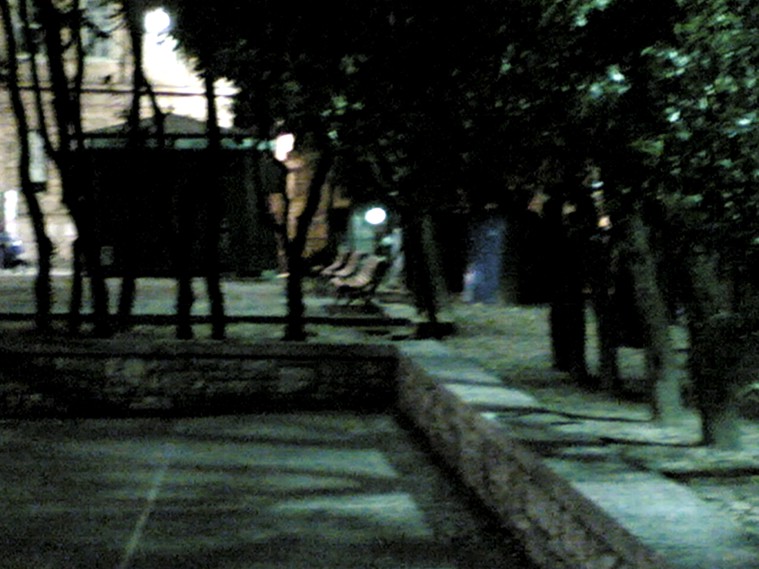
[Above and below: north side of Piazza Grimana showing the benches where Mr Curatolo normally sits]
Click here for Andrea Vogt’s report for the Seattle PI from the appeals court.
One of the case’s most colorful and controversial characters, Curatolo, 53, has spent many a day sitting in the small public Piazza Grimana square near the university where college students come to play basketball, buy hashish and hang out….
When questioned by prosecutors, he said he remembered seeing Knox and Sollecito having “an animated discussion” in the square, which overlooks the villa where Kercher’s body would be found the next day. It was not raining that night, he said, when asked about the weather. The following day the Carabinieri came around to ask him if he had seen anything, he recalled, and he had watched as forensic crime scene investigators worked around the house.
“Are you sure that the day after you saw those two discussing in an animated way you were questioned by the Carabinieri and saw the police at Via della Pergola in their white suits?” asked Mignini.
“Very sure,” Curatolo said. “As sure as I am that I am sitting here.”
But minutes later, in questioning by Sollecito’s lawyer Giulia Bongiorno, Curatolo also said he had seen young people in masks and getting on buses to go to the discos. The distinction is important because Halloween was Oct. 31 and there were likely students in costumes, getting on shuttles to go to the discos on the outskirts of town.
Kercher, however, was killed on the evening of Nov. 1, 2007, which is All Saints Day, a somber holiday in Italy, when it is less likely there were any festivities.
“I think it is clear that he does not have a lucid memory,” said a member of Knox’s legal team, Maria del Grosso, after the hearing. “And I think it was demonstrated today that he is not a credible witness.”
However, prosecutors and the lawyer for the Kercher family, Francesco Maresca, maintained the testimony was in line with previous statements.
“He repeated exactly what he said during the first trial. We still believe he is reliable.”
Good neutral report, as you’d expect, from Andrea Vogt who is the American reporter most consistently in the courtroom. All the other reports in English seemed to include a lot of fluff from the defenses.
We’ll have an analysis post on this hearing and the DNA testing in Rome later today or tomorrow.
**********
Below: Mr Curatolo’s preferred benches are at the far left there. If Sollecito did watch the gate of the house on the night he’d need to be to the far right there. The gate can easily be seen from there.
Tuesday, February 22, 2011
Open Questions: An Experienced Trial Lawyer Recommends How To Zero In On the Truth
Posted by SomeAlibi
Welcome
If you’ve come to this website because of the Lifetime movie of Meredith Kercher and Amanda Knox, then welcome.
Like all of us who come to this case, you have one key question: did they do it? The movie you’ve just watched is equivocal on that matter and perhaps didn’t help you at all.
On the internet, you will find people who are passionate in their defence of Amanda Knox and Raffaele Sollecito and you will find people who are passionate in their support of the prosecution.
My own arrival
Placing my own cards on the table here: as a twenty-plus year practising trial lawyer, I am firmly a part of that latter camp. But it wasn’t always that way.
It was information ““ evidence ““ that changed my views. What became very clear to me, early on, was that very few people in the English-speaking world are aware of anywhere near all of the evidence in this case.
I had thought I had grasped the core of the case, but I did not. The case is deep and complex and like many criminal cases, the complete facts behind it have been only sketchily reported in the media. The movie you may have just watched only skirts the real reasons the jury convicted.
The unanimous jury
I am sure that we all agree that no jury, in any murder case, given the awesome responsibility of adjudicating on (young) people’s lives for a multi-decade period of imprisonment, condemns people lightly.
It should be a matter of logic that the evidence presented against the accused must have been deep and satisfied the 6 lay jurors and 2 judges on the case for them to pronounce that huge judgement. That doesn’t mean that there couldn’t be the possibility of a mistrial, but clearly the evidence presented must have been substantial.
In this, we’ve already hit the first problem. Some supporters of Amanda Knox and Raffaele Sollecito will tell you there’s no evidence against them.
This is patently silly. No jury ever convicts people and sends them to prison for 24 plus years without being quite convinced of the case against them. Miscarriages of justice do happen, but the idea that there is “no evidence” can be summarily dismissed.
The only question is whether the evidence is sufficient, true and accurate.
The voluminous evidence
So is the evidence enough to convict beyond a reasonable doubt? The six lay jurors and two professional judges thought so, clearly. What you realise, when you come to the facts of the case, is that the evidence is based not around a single key event but on multiple points.
It can be astonishing to realise that the case is based not only on DNA evidence but also on cellphone evidence and computer records and further yet on multiple conflicting and contradicting versions of what happened that night from the mouths of the accused, not to mention falsely accusing an innocent man of responsibility for murder causing his incarceration.
The wealth of evidence is actually extremely unusual. It goes way beyond the quite similar Scott Peterson case.
The Massei Sentencing Report
What is absolutely new to the English speaking legal world is that the reasoning for the conviction can be read in an extremely detailed 440+ page report online. Bilingual posters at the Perugia Murder File Forum many of whom who are also key posters at TJMK translated the entire document into English over several months last year.
It was my privilege to play an extremely small part in that work. People from four different continents with backgrounds in forensic science, law, academia and a host of other disciplines participated.
You can read an effective executive summary by clicking on the Massei Report link at top here and reading the conclusions from page 388 onwards:
The Knox PR campaign
If you are new to this case, you will likely be shocked how much evidence there is against the convicted parties. Amanda Knox’s family have spent over $1m and involved a professional PR agency called Gogerty Marriot to suggest otherwise in the English-speaking media.
You might wonder why an innocent person needs a million dollar PR campaign on their part. Make yourself a coffee and read the conclusions of the judge’s report. It will take you about 15 minutes. Up until you read this report, almost everything you watch, hear and read is PR spin and is quite deliberately positioned to make you believe there is no case.
When you complete it, I believe you will have a very different take. That 15 minutes could change your ideas about everything you thought you knew about the murder of Meredith Kercher.
Now for a quick tour of the evidence.
Some of the points of evidence
Consider as you read it what is your own possible explanation for each of the following:
- the fact that the wound pattern and the reconstruction of the attack, each presented at trial in extensive closed-court sessions, showed this absolutely had to be a pack attack;
- the DNA of Raffaele Sollecito on Meredith’s bra-clasp in her locked bedroom;
- the almost-entire naked footprint of Raffaele on a bathmat that in *no way* fits that of the other male in this case - Rudy Guede;
- the fact that Raffaele’s own father blew their alibi that they were together in Raffaele’s flat at the time of the killing with indisputable telephone records;
- the DNA of Meredith Kercher on the knife in Raffaele’s flat which Raffaele himself sought to explain as having been from accidentally “pricking” Meredith’s hand in his written diary despite the fact Meredith had never been to his flat (confirmed by Amanda Knox);
- the correlation of where Meredith’s phones were found to the location of Raffaele Sollecito and Rudy Guedes’s flats;
- the computer records which show that no-one was at Raffaele’s computer during the time of the murder despite him claiming he was using that computer;
- Amanda’s DNA mixed with Meredith Kercher’s in five different places just feet from Meredith’s body;
- the utterly inexplicable computer records the morning after the murder starting at 5.32 am and including multiple file creations and interactions thereafter all during a time that Raffaele and Amanda insist they were asleep until 10.30am;
- the separate witnesses who testified on oath that Amanda and Raffaele were at the square 40 metres from the girls’ cottage on the evening of the murder and the fact that Amanda was seen at a convenience store at 7.45am the next morning, again while she said she was in bed;
- the accusation of a completely innocent man by Amanda Knox again and again when under no pressure which she insisted on putting in writing;
- the fact of Knox’s claim that she was aggressively interrogated for days, although she did not even have the status of a witness, and signed every page of every typed record of her mild, mundane and quite limited questionings;
- the fact that during Knox’s very unconvincing performance on the witness stand in July 2009 she admitted she was treated well and was not abused;
- the fact that when Amanda Knox rang Meredith’s mobile telephones, ostensibly to check on the “missing” Meredith, she did so for just three seconds - registering the call but making no effort to allow the phone to be answered in the real world
- the knife-fetish of Raffaele Sollecito, and his formal disciplinary punishment for watching animal porn at his university so far from the wholesome image portrayed;
- the fact that claimed multi-year kick-boxer Raffaele apparently couldn’t break down a flimsy door to Meredith’s room when he and Amanda were at the flat the morning after the murder but the first people in the flat with the police who weren’t martial artists could;
- the extensive hard drug use of Sollecito as told on by Amanda Knox;
- the fact that Amanda knew details of the body and the wounds despite not being in line of sight of the body when it was discovered;
- the lies of Knox on the witness stand in July 2009 about how their drug intake that night (“one joint”) is totally contradicted by Sollecito’s own contemporaneous diary;
- the fact that after a late evening’s questioning, Knox wrote a 2,900 word email home which painstakingly details what she said happened that evening and the morning after that looks *highly* like someone committing to memory, at 3.30 in the morning, an extensive alibi;
- the fact that both Amanda and Raffaele both said they would give up smoking dope for life in their prison diaries despite having apparently nothing to regret;
- the fact that when Rudy Guede was arrested, Raffaele Sollecito didn’t celebrate the “true” perpetrator being arrested (which surely would have seen him released) but worried in his diary that a man whom he said he didn’t know would “make up strange things” about him despite him just being one person in a city of over 160,000 people;
- the fact that both an occupant of the cottage and the police instantly recognised the cottage had not been burgled but had been the subject of a staged break-in where glass was *on top* of apparently disturbed clothes;
- the fact that Knox and Sollecito have feuded quite publicly ever since November 2007 and have shown far more anger toward one another than either has ever shown toward Guede;
- the fact that Knox and Sollecito both suggested each other might have committed the crime and Sollecito TO THIS DATE does not agree Knox stayed in his flat all the night in question;
- the fact of the bizarre behaviour of both of them for days after the crime;
- the fact that cellphone records show Knox did not stay in Sollecito’s flat but had left the flat at a time which is completely coincidental with Guede’s corroborated presence near the girl’s flat earlier in the evening;
- the fact that Amanda Knox’s table lamp was found in the locked room of Meredith Kercher in a position that suggested it had been used to examine for fine details of the murder scene in a clean up;
- the unbelievable series of changing stories made up by the defendants after their versions became challenged;
- Knox’s inexplicable reaction to being shown the knife drawer at the girl’s cottage where she ended up physically shaking and hitting her head despite being joyful earlier at the police station.
In conclusion
This list is not exhaustive. It goes”¦ on”¦ and on”¦ and on”¦ And yet, those supporting Knox will tell you that’s all made up, all coincidental.
Really? Does the weight of all that evidence sound made up to you?
If so, it must be the most over-rigged criminal case in the history of crime. Unlikely beyond all and any reasonable doubt.
The judge’s report explains why the jury found the defendants guilty. I truly expect you will be astonished at the amount of evidence if all you’ve done is watched a film or read a few press reports.
For any questions thereafter, please join us and post them on truejustice.org or perugiamuderfile.org . You’ll find here a host of good people who are all working on a totally volunteer basis in memory of the only victim of this crime.
Meredith Susanna Cara Kercher. RIP.
Tuesday, February 01, 2011
Explaining The Massei Report: A Visual Guide To The Faked Break-In Via Filomena’s Window
Posted by pat az
1. Post Overview
Cross-posted from my own website on Meredith’s case at the kind invitation of TJMK.
The Massei Report on the trial and sentencing of Amanda Knox and Raffaele Sollecito looks into whether or not a break-in is supported by the evidence available in the room with the broken window.
It concludes that the broken window and room in disarray - Filomena’s bedroom - are an “artificial representation”, ie. that the break-in was faked. After seven pages of review of the evidence, the Massei Report states:
“the situation of disorder in Romanelli’s room and the breaking of the window pane constitute an artificial representation created in order to orient the investigations towards a person who, not having the key to the front door, was supposed to have entered through the previously broken window and then effected the violent acts on Meredith which caused her death.
What follows is a look at the comments in the Massei report compared with crime scene and other photos. All quotes are from the English translation prepared by unpaid volunteers at PerugiaMurderFile.org. The section on the scenes in the bedroom begins on page 47 and continues to page 55. Some sentences in the paragraphs below have been omitted for brevity, and can be read in full in the original.
2. Knox Finds The Scene
Then (Amanda) went into another room and noticed that the window had been broken and that there was glass inside. She told these things to her and the other girls present. Then she related that she had gone back to Raffaele’s house and had rung Filomena.
I)n one of the telephone calls to Romanelli, Amanda spoke of that smashed window and of the possibility that someone could have entered the house through the broken place; she said this also in the telephone call to 112 and in the first declarations to the Postal Police.
Also in the e-mail of November 4, 2007, sent by Amanda to 25 people in the US, she hypothesises that a burglar could have entered the house and says she looked around to see if anything was missing.
Filomena Romanelli, disturbed by this phone call, had rung Amanda back without receiving a reply and when, a little later, she had succeeded in speaking to Amanda, Amanda had told her that in her room (i.e., in Ms. Romanelli’s room) the windowpane was broken, everything was in a mess, and that she should come back home.
Filomena Romanelli had ascertained from a quick check of her room, even though (it was) in a complete mess with the windowpane broken, that nothing was missing.
It must be held that when Filomena Romanelli left the house in via della Pergola, she had pulled the [interior] shutters towards the interior of her room, although she did not think that she had actually closed them; furthermore, because they were old and the wood had swelled a bit, they rubbed on the windowsill; to pull them towards the room it was necessary to use some force (“they rubbed on the windowsill”); but in this way, once they had been pulled in, as Romanelli remembered doing, they remained well closed by the pressure of the swelled wood against the windowsill.
It cannot be assumed - as the Defence Consultant did - that the [interior] shutters were left completely open, since this contradicts the declarations of Romanelli, which appear to be detailed and entirely likely, considering that she was actually leaving for the holiday and had some things of value in her room; already she did not feel quite safe because window-frames were in wood without any grille.
Also, the circumstance of the [interior] shutters being wide open does not correspond to their position when they were found and described by witnesses on November 2, and photographed (cf. photo 11 already mentioned).
Now, for a rock to have been able to break the glass of the window without shattering the outside shutters, it would have been necessary to remove the obstacle of the shutters by opening them up.
Consequently, since the shutters had been pulled together and their rubbing put pressure on the windowsill on which they rested, it would have first been necessary to effect an operation with the specific goal of completely opening these shutters.
The failure to find any instrument suitable for making such an opening (one cannot even see what type of instrument could be used to this end) leads one to assume that the wall would have to have been scaled a first time in order to effect the complete opening of the shutters, in order to enable the burglar to aim at the window and smash it by throwing a large stone - the one found in Romanelli’s room.
He would then have to have returned underneath Romanelli’s window for the second climb, and through the broken glass, open the window (balanced on his knees or feet on the outside part of the windowsill), otherwise he would not have been able to pass his arm through the hole in the glass made by the stone) and reach up to the latch that fastened the window casements, necessarily latched since otherwise, if the casements had not been latched, it would not have been necessary to throw a rock at all, but just to open the shutters and climb inside.
The “climber” would also need to rely on the fact that the [interior] shutters were not actually latched, and also that the “scuri” ]blackout blind] had not been fastened to the window-frame to which the broken pane was attached; otherwise it would not have been possible to open them from the outside; nor would it have been possible, even breaking the glass, to make a hole giving access to the house, since if these inner panels had been closed, they would have continued to provide an adequate obstacle to the possibility of opening the window, in spite of the broken pane.
This scenario appears totally unlikely, given the effort involved (going twice underneath the window, going up to throw the stone, scaling the wall twice) and taking into account the uncertainty of success (having to count on the two favourable circumstances indicated above), with a repetition of movements and behaviours, all of which could easily be seen by anyone who happened to be passing by on the street or actually coming into the house.
But beyond these considerations, there are other elements which tend to exclude the possibility that a burglar could have entered the house through the window of Romanelli’s room.The double climb necessary to attain the height of three and a half metres would have left some kind of trace or imprint on the wall, especially on the points on the wall that the “climber” would have used to support his feet, all the more as both the witnesses Romanelli and Marco Zaroli gave statements indicating that the earth, on that early November evening, must have been very wet (..6) (p50)
In fact, there are no visible signs on the wall, and furthermore, it can be observed that the nail ““ this was noted by this Court of Assizes during the inspection ““ remained where it was: it seems very unlikely that the climber, given the position of that nail and its characteristics, visible in the photo 11, did not somehow “encounter” that nail and force it, inadvertently or by using it as a foothold, causing it to fall or at least bend it. (p50)
The next fact to consider is that the pieces of glass from the broken pane were distributed in a homogeneous manner on the inside and outside parts of the windowsill, without any displacement being noted or any piece of glass being found on the ground underneath the window.
This circumstance, as confirmed also by the consultant Pasquali, tends to exclude the possibility that the rock was thrown from outside the house to create access to the house through the window after the breaking of the pane. The climber, in leaning his hands and then his feet or knees on the windowsill, would have caused at least some piece of glass to fall, or at least would have been obliged to shift some pieces of glass in order to avoid being wounded by them.
Instead, no piece of glass was found under the window, and no sign of any wound was seen on the pieces of glass found in Romanelli’s room. It can moreover be observed that the presence of many pieces of glass on the outside part of the windowsill increases the probability of finding some small pieces of glass on the ground underneath, since there seems to be no reason that so many pieces of glass would all stop just at the edge of the windowsill without any of them flying beyond the edge and falling down to the garden below. (p51 & 52)
On this subject it is also useful to recall that at the hearing of April 23, 2009, the witness Gioia Brocci mentioned above declared that she had observed the exterior of the house, paying particular attention to the wall underneath the window with the broken pane, the window of the room then occupied by Filomena Romanelli.
She said: “We observed both the wall”¦underneath the window and all of the vegetation underneath the window, and we noted that there were no traces on the wall, no traces of earth, of grass, nothing, no streaks, nothing at all, and none [39] of the vegetation underneath the window appeared to have been trampled; nothing” (p. 142 declarations of Gioia Brocci). (51)
This situation, like all the other glaring inconsistencies, is adequately and satisfactorily explained if one supposes that the rock was thrown from the inside of the room, with the two shutters pulled inwards so that they blocked the pieces of glass from falling to the ground below. Once the glass had been broken from inside, the rock was set down at some place in the room, and the shutters were pushed towards the outside, being thus opened from within the room. (p51)
But the fact that all this was in fact just a simulation, a staging, can be deduced from further circumstances. From the photos taken by the personnel of the Questura (photos 47 to 54 and 65 to 66) one can perceive an activity which appears to have been performed with the goal of creating a situation of obvious disorder in Romanelli’s room, but does not appear to be the result of actual ransacking, true searching for the kind of valuable objects that might tempt a burglar.
The drawers of the little dresser next to the bed were not even opened (photo 51 and declarations of Battistelli who noted that Romanelli was the one who opened the drawers, having found them closed and with no sign of having been rifled: see p. 66 of Battistelli’s declarations, hearing of Feb. 6, 2009).
The objects on the shelves in photo 52 appear not to have been touched at all; piles of clothes seem to have been thrown down from the closet (photo 54) but it does not seem that there was any serious search in the closet, in which some clothes and some boxes remained in place without showing any signs of an actual search for valuable items that might have been there (photo 54).
It does not appear that the boxes on the table were opened (photo 65) in a search for valuable items. And indeed, no valuable item (cf. declarations of Romanelli) was taken, or even set aside to be taken, by the ““ at this point we can say phantom ““ burglar.
What has been explained up to now thus leads to the assertion that the situation of disorder in Romanelli’s room and the breaking of the window pane constitute an artificial representation created in order to orient the investigations towards a person who, not having the key to the front door, was supposed to have entered through the previously broken window and then effected the violent acts on Meredith which caused her death.
Footnotes
(...1) The Massei Report in English is readable and downloadable via the link at the top of this page.
(..2) The consultant for the defence actually assumed that this had been done; in his exhibit, he assumed that the shutters were not present in front of the window
(..3): “if the shutters were closed, he could not have passed through, that is obvious”, cf. declarations of the consultant for the defence, Sergeant Francesco Pasquali, p. 22 hearing July 3, 2009.
(..4): (the window in Romanelli’s room is located at a height of more than three and a half metres from the ground underneath, cf. photo 11 from the relevant dossier)
(..5):,which are the wooden panels [scuri=non-louvered shutters in interior of room] that usually constitute the outer side (or the inner, depending on the point of view) of the window [attached to the outer edge of the inner side of the window-frame]
Friday, December 03, 2010
Explaining The Massei Report: Establishing The Time When Meredith Passed On
Posted by Storm Roberts
Why This Matters So Much
Perhaps the hardest parts of the Massei Report for compassionate readers to take are those concerning Meredith’s wounds and time of death.
Those passages commence early in the report and, as with our translation of much of the Micheli report, left our translators and many readers disturbed and a few of them at least in tears.
This is an abbreviated overview of how forensic medicine helped the court to establish the time of Meredith’s death.
Please click here for more
Monday, November 29, 2010
Explaining The Massei Report: The Timeline For Events Before, During, And After The Night #1
Posted by catnip
The Masssei Timeline To Midnight 1 Nov
These two posts list all of the events precisely timed in the Massei Report. Page numbers shown in brackets are those in the original Italian version.
This timeline will be reposted over on the TJMK Massei Report summaries and highlights page as we populate that page further starting this week.
There are plenty of mentions of imprecise occasions and general time periods, such as when Rudy told Giorgio Cocciaretto about liking Amanda (p26) or when lawyer Palazzoli found out their stolen computer had been recovered in Milan (p33), but they are not listed here.
nts_before_during_2/”>Post #2
Please click here for more
Explaining The Massei Report: The Timeline For Events Before, During, And After The Night #2
Posted by catnip
The Masssei Timeline After Midnight 1 Nov
We continue here from Post #1 These two posts list all of the events precisely timed in the Massei Report. Page numbers shown in brackets are those in the original Italian version.
There are plenty of mentions of imprecise occasions and general time periods, such as when Rudy told Giorgio Cocciaretto about liking Amanda (p26) or when lawyer Palazzoli found out their stolen computer had been recovered in Milan (p33), but they are not listed here.
Please click here for more
Monday, November 22, 2010
Explaining The Massei Report: Motive In The Meredith Kercher Case And Its Addressing In The Report DRAFT
Posted by James Raper
superceded by revised post 12 april 2011
I have read the Massei Report which in the main I thought was excellent. He was incisive with his logic, particularly, though not exclusively, with regard to the staging of the break in and how that necessarily meant that Amanda was present at the scene when the murder was committed.
However, I thought that he was rather feeble in his coverage of the defendants’ motives as to the attack which led to this brutal murder. Perhaps he thought it better to stick with the indisputable evidence.
Since this pointed to a sex attack, he surmised that Guede had a go at Meredith first, and then - because the stimulation was too much for them - he was joined by Amanda and Raffaele. This works but does seem a bit weak. There were, to my mind, undoubtedly other factors at work, and it is these which I wish to address.
For instance, Massei asks, though he says we can not know, had Amanda egged Guede on as to the “availability” (my word, not his) of Meredith during or prior to their presence at the cottage?
Frankly the answer to that has to be “yes” since it is a bit difficult to figure out why Amanda and Raffaele would otherwise wish Guede to join them at the cottage. I doubt that Amanda and Raffaele would have wanted Guede around if they were just going there to have an innocent cuddle and sex and to smoke cannabis, as Massei implies.
The evidence is that Raffaele hardly knew Guede and in the presence of Amanda was very possessive about her. If he had known of Guede’s interest in Amanda he would have been even less keen to have Guede around.
Also, if all was so innocent beforehand, then why would Guede have tried it on with Meredith and then pressed the situation in the face of her refusal to co-operate, knowing that there were two others there who could have come to her assistance?
The answer is of course that Guede knew full well in advance that there would be no problem with Amanda and Raffaele. He had been invited there and primed to act precisely in the way he did, at least initially. Why? Well there is plenty of evidence as to why Amanda, in her mind, may have been looking for payback time on Meredith. Come to that later.
What does not get much attention in the Massei Report, other than a terse Not Guilty at the end, is the matter of Meredith’s missing rent money and credit cards and whether Amanda and Raffaele stole them.
It is as if the Judge (well, the jury really) felt that this was a trivial issue that brought nothing much to the case and thus it was not necessary to give it much attention. And indeed there is no summation of or evaluation of that evidence.
Now that does surprise me. Of course there may have been some technical flaw with the charge and the evidence. But in the absence of any comment on this then we do not know what that may be. What I do know is that the matter, if proven, is not trivial.
A theft significantly ups the stakes for Amanda and Raffaelle just prior to the murder and produces a dynamic, which, threaded together with a sexual assault, makes for a far more compelling scenario to murder.
It also leads one to conclude that there was a greater degree of premeditation involved : not premeditation to murder but as to an assault, rather than the more spontaneous ” let’s get involved” at the time of the sex attack as postulated by Massei. An Italian lawyer could tell us whether this would have added extra time on to their sentence. It is worthy of consideration.
What is the evidence? What evidence was before the court? I do not have access to trial records, only what I have read about the case in the book “Darkness Descending” and on the True Justice for Meredith website. Therefore I stand to be corrected if I misrepresent the evidence or if my interpretation of it does not met the test of logic.
There were two lay witnesses who were compelling in the trial. The first was Filomena Romanelli, the flatmate and trainee lawyer. If there was anyone who was going to ensure that the rent was paid on time, it would have been her.
She gave evidence that the rent being due very soon she asked Meredith about her contribution of 300 euros and was told by Meredith that all was OK because she had just withdrawn 200 euros from her bank. Filomena assumed from Meredith’s reply that the balance was already to hand.
Is there a problem with this evidence? Is it hearsay and thus inadmissible under Italian law?
Perhaps it is not enough by itself because of course had Meredith not in fact withdrawn the money from her bank, or sufficient funds to cover the stated amount, then that would be a fatal blow to that part of the theft charge. Her bank manager was summoned to give evidence, essentially to corroborate or disprove Filomena’s testimony.
I do not know what exactly that evidence was. One would assume that at the very least it did not disprove her testimony. Had it done so that would, as I have said, been fatal. It is also unbelievable that Massei would have overlooked this in the Report. I am assuming that Meredith did not tell a white lie and that the bank records corroberate this.
There may of course be an issue of timing as I understand that the bank manager told the court that transactions at a cash machine are not necessarily entered on the customer account the same day . However that does not seem to me to be significant.
One must also think that the bank manager was asked what other cash withdrawals had been made if the credit cards were taken at the same time as the money. I understand that there is of course a caveat here: my assumptions in the absence of knowing exactly what the bank manager’s evidence was.
It would be useful also to know how and when the rent was normally paid. It sounds as if it was cash on the day the landlord came to collect.
We do know that the police did not find any money or Meredith”˜s credit cards. Had Meredith, a sensible girl, blown next month’s rent on a Halloween binge? Unlikely. So somebody stole it. Again, just as with the fake break in, when according to Amanda and Raffaele nothing was stolen, who and only who had access to the cottage to steal the money? Yes, you have guessed it. Amanda, of course.
Does the matter of missing rent money figure anywhere else? There is the evidence of Meredith’s phone records which show that she rang her bank late on the evening of her murder just prior to the arrival of Amanda, Raffaele and Guede.
Why did she do this? What do you think? What is the first thing you do when you discover that your credit cards are missing? Obviously have a good look round. Then you ring your bank to put a stop on them. It may have been that she was not actually able to do that at that time of night. But worthy of further investigation.
The missing money also figured in the separate trial of Guede. He made a statement which formed the whole basis of his defence. Basically this was that he had an appointment with Meredith at the cottage, had consensual foreplay with her and was on the toilet when he heard the doorbell ring etc, etc.
What he also added was that just before all this Meredith was upset because her rent money had disappeared and that they had both searched for it with particular attention to Amanda’s room. Now why does Guede mention this? Remember this is his defence. Alibi is not quite the right word. He had plenty of time to think about it or something better.
His defence was moulded around (apart from lies) (1) facts he knew the police would have ie no point denying that he was there or that he had sexual contact with Meredith : his biological traces had been left behind, and (2) facts known to him and not to the police at that stage ie the money, which he could use to make his statement as a whole more credible, whilst at the same time giving the police a lead. He is shifting the focus, if the police were to follow it up, on to the person he must have been blaming for his predicament, Amanda.
If all three, Amanda, Raffaele and Guede, went to the cottage together, as Massei has it, then Guede learns about the missing rent money not as referred to in his statement but because Meredith has already discovered the theft and worked out who has had it and challenges Amanda over it when the three arrive.
Perhaps this is when Guede goes to the toilet and listens to music on his Ipod. After all he is just there for the sex and this is all a distraction.
I expect, however, that Guede’s “evidence” was not a factor in the jury’s consideration. Neither Guede’s lawyers nor those for Amanda and Raffaele wanted Guede to testify at the trial, for obvious reasons Without Guede testifying his statement would have been objectionable if not inadmissable.
I would have thought, though, that the prosecution could have brought him in as a witness, with the agreement of the judge, to testify as to the missing rent money only. Guede and his lawyers might well have agreed to this on the basis that such limited questioning would not have incriminated him further and might well have had a beneficial effect in his appeal. Convicted criminals often give evidence in court. What weight is attached to the evidence of a convicted criminal is a matter for the jury.
As the prosecution have appealed Amanda’s and Raffaele’s sentences, asking for lengthier terms, could they produce Guede now? I don’t know.
When were the money and credit cards stolen? According to Amanda and Raffaele they spent Halloween together at Raffaele’s and the next day went to the cottage. Meredith was there. Meredith left at about 1pm to spend the evening with her friends and Amanda and Raffaele left at about 3pm.
This is according to Amanda and Raffaele of course but probably likely because if the money had already been stolen Meredith may likely have known with different consequences for everyone. So Amanda and Raffaele could have stolen the money and credit cards after she left - the day of her murder.
Incidentally Filomena testified that Meredith never locked the door to her room except on the occasions she went home to England. Meredith was a very trusting girl.
What motive had Amanda for wanting the money apart from the obvious one of profit? There are numerous plausible motives.
To fund a growing drugs habit which she shared with Raffaele? Not an inconsiderable expense for a student. Both Amanda and Raffaele explained their confusion and hesitancy as being due to the fact that they had been going rather hard on drugs.
To embarrass Meredith vis a vis her landlord and the other flatmates? Because Amanda’s own financial circumstances were deteriorating and to fund her own rent contribution? She was probably about to be sacked at Lumumba’s bar and to add insult to injury would likely be replaced by Meredith. In fact Meredith was well liked by all whereas Amanda’s star was definitely on the wane.
That must have irked Amanda. Filomena testified that Meredith and Amanda had begun to have issues with each other towards the end.
With Meredith’s money both Amanda and Raffaele could have afforded something a little stronger than the usual smoke and I speculate that they spent the late afternoon getting stoned. Did they use the credit cards? If they did then it was probably small cash withdrawals but the likelihood is that they did not as in the limited time prior to Meredith’s death they had the use of her ready cash, and after her death the safer thing was to destroy them.
Of course Amanda was still an employee of Lumumba and she would have to turn up that evening for work, but perhaps she no longer cared all that much about the consequences.
Again I speculate that she and Raffaele met Guede before she was due at work, discussed Meredith’s “availability” and Amanda, Raffaele and Guede agreed to meet up on the basketball court at Grimana Square between 11 and 11.30pm, by which time Amanda would expect to have got away from the Le Chic bar.
What else did Amanda and Raffaele have in mind when arranging the meeting or when thinking about it afterwards? Guede was of course thinking about sex and that Amanda and Raffaele were going to facilitate an encounter with Meredith later that evening.
However Amanda and Raffaele had something else on their minds. The logic of their position vis a vis Meredith cannot have escaped them. They had taken her money and credit cards whilst she was out. Had she not already discovered this fact then she would in any event be back, notice the money and credit cards were missing and would put 2 and 2 together.
Very probably Meredith had not already discovered the theft because, spending a quiet time with friends, she had no cause to use her credit cards. What would happen? Who would she tell? Would she call the police? How are they going to deal with this? Obviously deny it but logic has its way and the situation with or without the police being called in would be uncomfortable.
They decided to turn the tables and make staying in Perugia very uncomfortable for Meredith. Now the embarrassing, for Meredith, sexual advances from Guede were going to be manipulated by them in to a sexual humiliation for Meredith.
Meredith was not going to be seriously harmed but as and when they were challenged by Meredith over the missing money, as inevitably they would be, she was to be threatened with injury or worse. Knives come in useful here.
She would likely then give up her tenancy at the cottage, perhaps leave Italy. Whether that looks like the probable and likely outcome I leave you to judge, but just how much of this would be precise and careful planning given, as seems likely, that Amanda and Raffaele were going hard on the drugs?
They were not in a position to act any earlier than they did. They knew that Meredith was away with her friends and probably would not come home until much later. Amanda was expected at Lumumba’s. Guede was not available until the pre-arranged time.
In the event Amanda did not have to go to work. She and Raffaele were at a loose end until the time of their pre-arranged meeting with Guede. They got to the basketball court early. They had to wait for him. They could not ring him as he did not have a phone.
We know Amanda and Raffaele were on the basketball court (some of the time if not all of the time) between 9.30 and sometime just before 11.30pm. This is because of the evidence of a Mr Curatolo, the second compelling lay witness. He testified to seeing Amanda and Raffaele having heated arguments, and occasionally going to the parapet at the edge of the court to peer over.
What were they looking at? Go to the photographs of Perugia on the True Justice for Meredith website and you will see. From the parapet you get a good view of the gates that are the entrance, and the only entrance as I understand it, to the cottage.
So why the behaviour observed by Mr Curatolo? They may have been impatient waiting for Guede to arrive. Were they actually to go through with this? One might speculate that Raffaele was not actually as keen on it as Amanda.
Was Meredith at home, alone, and had she found the money was missing and had she called the police or tipped off someone already? Who was hanging around outside the entrance to the cottage and why?
There was, apparently, a car parked at the entrance, a broken down car nearby with the occupants inside awaiting a rescue truck, and the rescue truck itself, all present at different times. Amanda and Raffaele did not wish to be observed going through the gates with these potential witnesses around.
We, of course, cannot know for certain what went on in the minds of Amanda and Raffaele and account for much of their movements between the time of them leaving the cottage at, they say, 3pm and their departure from the basketball court at around 11.30pm. It has to be speculation but there is a logical consistency to the above narrative if they had stolen Meredith’s money and credit cards earlier that day, and their meeting up with Guede just before 11.30pm does not look like a co-incidence.
From there on in to the inevitable clash between Amanda and Meredith over the money and credit cards, the threats and intimidation by Amanda and Raffaele to scare her, the sexual assault as part of that, and the tragic death of Meredith.
In a civil case in this country, the standard of proof is “the balance of probabilities” rather than the higher standard of (to paraphrase) “beyond reasonable doubt” in a criminal case.
If my earlier caveat about the bank manager’s evidence not disproving that Meredith had withdrawn her money is unnecessary then, at the very least, on the balance of probabilities, it is proven that Meredith had that money, and the credit cards, and that Amanda and Raffaele had stolen them from her. Some might think (I do) that it is proven on the higher standard too.
It is a shame that the Massei court did not consider and evaluate all of the evidence before it.
It did not need to fear that by doing so it may have been including something which others might consider eminently appealable, since the evidence and reasoning on which it did convict Aamanda and Raffaele of murder was sound and impeccable.
Addendum : There have been a great many useful comments on this post. As a consequence I accept that the scenario outlined above requires at least two modifications and these are in my last comment below.
Monday, September 20, 2010
Explaining The Massei Report: All Judges, Lawyers And Witnesses At Trial Jan-Dec 2009
Posted by Storm Roberts
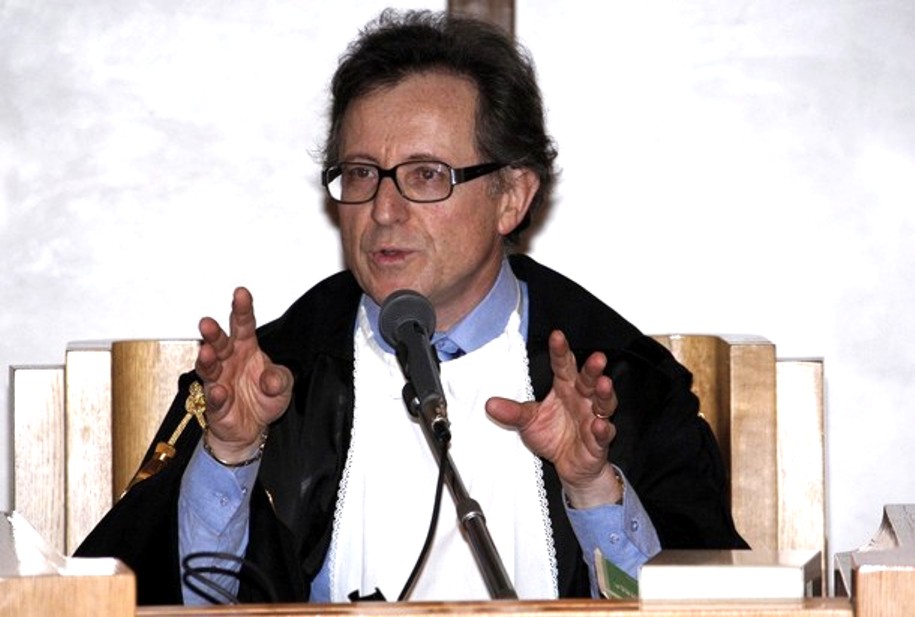
[Above: Dr Giancarlo Massei, the president of the Court]
Our intention with this new series of posts is to show how thorough the trial was, and how compelling the Massei Report on the grounds for the Knox-Sollecito sentence is.
At the beginning of the trial, the witness counts were considerable: approximately 90 for the prosecution, 60 for the civil plaintiffs, 90 for the defence of Raffaele Sollecito, and 65 for the defence of Amanda Knox.
However, a large number of witnesses for both Amanda Knox and for Raffaele Sollecito were removed from the witness listing. Thus the actual number of people testifying was lower than originally expected.
Here is a comprehensive list I have compiled, made by going through the Massei Report, picking out the witnesses, and noting what they testified about. If I had the information available, I have noted where a witness was specifically called by the defence of either of the then defendants.
Officers Of The Court
- Judges: Dr Beatrice Cristiani and Dr Giancarlo Massei, the president of the Court.
- Prosecutors: Public Ministers Dr Manuela Comodi and Dr Giuliano Mignini.
- Interpreter for Amanda Knox: Dr Anna Baldelli Fronticelli.
The Legal Teams:
- For the family of Meredith Kercher: Francesco Maresca and Serena Perna.
- For Diya “Patrick” Lumumba: Carlo Pacelli.
- For Aldalia Tattanelli (the owner of the house): Letizia Magnini.
- For Amanda Knox: Luciano Ghirga and Carlo Dalla Vedova.
- For Raffaele Sollecito: Giulia Bongiorno, Daniela Rocchi and Luca Maori.
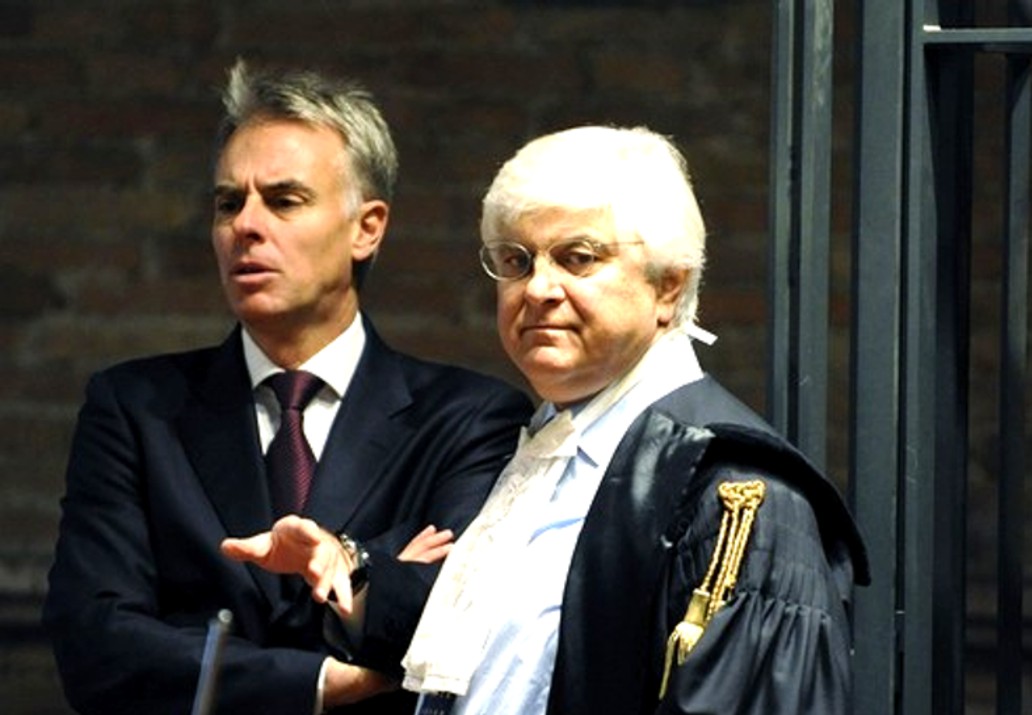
[above: Amanda Knox’s legal team]
Witnesses
The following is a list of witnesses and a brief note as to the evidence they presented. I am not detailing their arguments here, merely indicating the areas the witnesses were heard in. For full details of the evidence and the court’s arguments please read the Massei Report in full and the summaries coming up.
- Amanda Knoxtestified while not under oath at the request of her defence and the legal team representing Diya Lumumba. Her testimony was heard on 12th and 13th June 2009. Raffele Sollecito made a couple of interventions from his seat beside his three lawyers, but he did not get up on the stand.
- Mrs. Elisabetta Lana and her son, Alessandro Biscarini. They discovered two mobile phones, both belonging to Meredith Kercher (one was registered to Filomena Romanelli, Meredith’s flatmate), in their garden at Via Sperandio.
- Dr. Filippo Bartolozzi - at the time Manager of the Department of Communications Police for Umbria - Dr. Bartolozzi received the mobile phones from Mrs Lana, the first at approximately 11.45 to 12.00hrs on 2nd November 2007, the second at approximately 12.15 to 12.20 hrs. He traced the first phone to Filomena Romanelli and, at noon, despatched two officers to her address to investigate why her phone was in Mrs. Lana’s garden.
- Inspector Michele Battistelli and Assistant Fabio Marzi - the two officers despatched by Dr. Bartolozzi. They arrived at 7 Via della Pergola at a little after 12.30 hrs - they found Amanda Knox and Raffaele Sollecito sitting outside the house. They gave evidence about the circumstances leading up to the discovery of Meredith’s body and with regards to securing the scene whilst awaiting the Carabinieri and Scientific Police.
- Filomena Romanelli who was Meredith’s flatmate gave evidence regarding the phone she had lent to Meredith. She also detailed when she had moved into the flat at 7 Via della Pergola and the living arrangements. She told of her plans for the 2nd November and how a worrying phone call from Amanda Knox led to her calling her back and returning to her home earlier than planned. A key point of Ms. Romanelli’s evidence was her disagreement with Amanda Knox over when Meredith locked her door - Ms. Romanelli stated that Meredith had only once locked her door and that was when she had returned to England for a few days.
- Paola Grande, Marco Zaroli and Luca Altieri - the other young people who were at the property when Meredith’s body was discovered. Mr. Altieri broke down the door to Meredith’s room.
- Laura Mezzetti - the fourth flatmate in the upstairs flat at number 7 Via della Pergola. She testified with regards to the living arrangements and also that Amanda Knox is an early riser, a “morning person”.
- Robyn Butterworth, Amy Frost, Sophie Purton and Nathalie Hayward - Meredith’s friends from England. They testified as to when they last saw Meredith and described the behaviour of Amanda Knox and Raffaele Sollecito at the Police Station in the evening of 2nd November 2007. They also testified that Meredith had no plans after returning home at around 21.00 hrs on 1st November other than to study and have a rest as they had been out late the previous night and believed that they had classes the next day. Meredith’s friends did not know of Rudy Guede and had not heard Meredith mention his name.
- Giacomo Silenzi, one of the young men living in the flat underneath Meredith’s flat. He was Meredith’s boyfriend.
- Stafano Bonassi, Marco Marzan and Riccardo Luciani the other tenants of the downstairs flat. Along with Mr. Silenzi they testified as to the the interactions between themselves and the girls upstairs, the gatherings they held, the fact that Rudy Guede was known to Amanda Knox. They testified as to Rudy Guede’s actions at their house. They gave evidence of having met or known of Raffaele Sollecito and his relationship with Amanda Knox.
- Giorgio Cocciaretto a friend of the young men in the downstairs flat testified with regards to knowing Rudy Guede through playing basketball and having seen him at the 7 Via della Pergola house when both Meredith and Amanda Knox were present.
- Rudy Guede availed himself of his right not to participate in the trial of Amanda Knox and Rafaelle Sollecito. Judge Massei details Rudy Guede’s involvement based upon the evidence available in order to complete the reconstruction of events of 2nd November as he was charged alongside Amanda Knox and Raffaele Sollecito.
- Marta Fernandez Nieto and Caroline Espinilla Martin - two young ladies living in the flat above Rudy Guede, they testified than on the night of 31st October they had been in the presence of Rudy Guede and that the only girl they saw him dance with was a “blonde girl with long smooth hair”.
- Gioia Brocci from the Questura of Perugia who testified with regards to a trail of shoe prints leading from Meredith’s room to the exit of the flat getting fainter as they went. Ms. Brocci also testified as to the lack of signs of climbing on the wall below Filomena Romanelli’s window. She also collected evidence from the bathroom next to Meredith’s room.
- Sergeant Francesco Pasquale testified as to the possibility of breaking into the flat though the window in Filomena Romanelli’s room. Sergeant Pasquale was a consultant for the defence.
- Maria Antonietta Salvadori Del Prato Titone, Paolo Brocchi, Matteo Palazzoli and Cristian Tramontano testified with regards to previous incidents involving or possibly involving Rudy Guede.
- Edda Mellas , Amanda Knox’s mother. She testified as to communications with her daughter on the 2nd November amongst other things.
- Antonella Negri a teacher at the University who taught Amanda Knox and who testified as to her diligence as a student.
- Francesco Sollecito, father of Raffaele Sollecito. He testified as to his son’s character and about his communications with his son. He also spoke of his son’s relationship with Amanda Knox.
- Antonio Galizia, Carabinieri station commander in Giovinazzo, the Sollecito family’s home town. He testified that in September 2003 Raffaele Sollecito was found in possession of hashish.
- Jovana Popovic testified as to the presence of Amanda Knox at Raffaele Sollecito’s home at two points in time on the evening of 1st November 2007.
- Diya “Patrick” Lumumba was Amanda Knox’s employer at “Chic”. He testified that he has sent her a text message excusing her from work on the evening of 1st November.
- Rita Ficcara Chief Inspector of the State Police - to whom Amanda Knox delivered a written statement composed whilst she was awaiting to be transferred to Capanne Prison.
- Antonio Curatolo - Mr. Curatolo testified as to having seen Amanda Knox and Raffaele Sollecito at the basketball court in front of the University (the Piazza Grimana) in the evening of 1st November 2007.
- Maurizio Rosignoli - who runs a kiosk in the Piazza - testified with regards to the timing of buses at the Piazza Grimana thus corroborating times in Mr. Curatolo’s evidence.
- Alessia Ceccarelli - who worked managing Mr. Rosignoli’s kiosk - gave evidence as to Mr. Curatolo’s presence in the Piazza.
- Marco Quintavalle, who runs the shop “Margherita Conad”, testified he had seen Amanda Knox at 07.45 hrs on 2nd November, she was waiting for him to open his shop, she went to the section of the store that had items such as groceries, toilet paper and cleaning products but he did not serve her at the till so could not specify what she bought if anything. He testified that he knew Raffaele Sollecito as he was a regular customer.
- Officer Daniele Ceppitelli gave evidence with regards to the 112 calls made by Raffaele Sollecito at 12.51 and 12.54 hrs on 2nd November. In these calls Raffaele Sollecito declared that nothing had been stolen from the flat.
- Nara Capezzali, Antonella Monacchia and Maria Ilaria Dramis gave evidence of unusual sounds and activity coming from the area around 7 Via della Pergola - namely a scream and the sound of running footsteps.
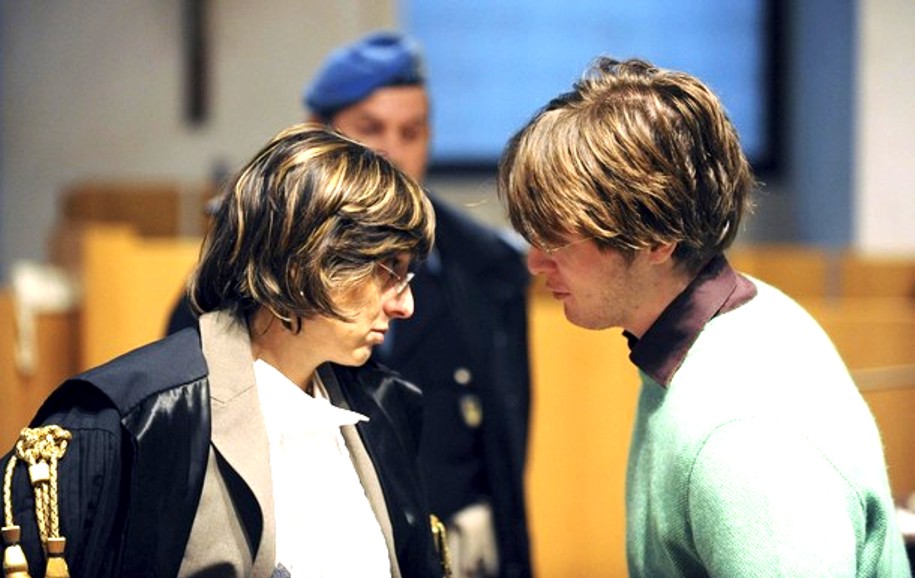
[one of Sollecito’s three lawyers with Sollecito]
Expert Witnesses
- Dr. Lalli, the Coroner, he performed the post mortem and ascertained the cause of death and a “time window” when death was likely to have occurred. He put the time of death between 20.00 hrs on 1st November 2007 and 04.00 hrs the following day.
- Dr. Domenico Giacinto Profazio was head of the Perugia Flying Squad at the time of Meredith’s death. He gave evidence regarding the investigative procedures and safeguards including the physical security of the property.
- Dr. Marco Chiacchiera, deputy director of the Perugia Flying Squad also gave evidence regarding the scene and investigation.
- Monica Napoleoni, Deputy Commissioner of the State Police gave evidence regarding the scene and investigation. She also testified as to Raffaele Sollecito’s desire to remain with Amanda Knox.
- Mauri Bigini a chief inspect at the Flying Squad confirmed the evidence given by Profazio and Napoleoni.
- Armando Finzi a chief inspector at the Flying Squad gave evidence regarding the examination of Raffaele Sollecito’s flat and the collection of the knife which is now termed “the Double DNA Knife” (Exhibit 36).
- Stefano Gubbiotti and Zugarini Lorena confirmed the evidence regarding the search of Raffaele Sollecito’s flat.
- Dr. Giunta from the Scientific Police in Rome directed the detection of latent prints at the scene.
- Dr. Patrizia Stefanoni from the Scientific Police in Rome collected biological trace evidence for analysis. She also performed the analysis of DNA evidence and testified extensively on all aspects of DNA - from the background science, through the collection and the testing methods employed to the analysis.
- Professor Mauro Marchionni, Dr. Vincenza Liviero and Professor Mauro Bacci, the three consultants appointed by the Public Ministers to analyse the forensic medical evidence testified as to various aspects of Dr. Lalli’s report including the cause of death, timing of death, the sexual assault and the wounds. They reported on the degree of compatibility of the knife - Double DNA Knife, Exhibit 36 - with the wounds suffered.
- Professor Gianaristide Norelli, the consultant for the civil party, is a forensic police doctor. He testified with regards to the time and cause of death and the sexual assault against Meredith. He testified as to the degree of compatibility of the Double DNA Knife with the wounds suffered.
- Professor Francesco Introna, a consultant appointed by Raffaele Sollecito’s defence testified with regards to the forensic medical evidence (cause and time of death, the sexual assault). His opinion is that the murder was committed by one person and that the Double DNA Knife was not the weapon used to inflict the large wound on the left of Meredith’s neck. He hypothesised that Meredith was already undressing at the end of the day when she was surprised by her sole attacker who attacked from behind.
- Professor Carlo Torre, a consultant appointed by Amanda Knox’s defence testified with regards to the same areas as described above. In his opinion the Double DNA knife was not the knife used to inflict the large wound on the left of Meredith’s neck. He believed a stabbing from the front was the most likely dynamic, and he saw nothing that would lead him to believe there was more than one attacker.
- Professor Vinci, a consultant appointed by Raffaele Sollecito’s defence, he testified with regards to the stains on the bed sheet -which appeared to be made in blood, outlining a knife. Professor Vinci also testified with regards to footprints found in the flat.
- Dr Patumi, a consultant appointed by the defence of Amanda Knox, testified with regards to the neck wounds suffered and also with regards to the genetic evidence as detailed by Dr. Stefanoni.
- Professor Anna Aprile, Professor Mario Cingolani and Professor Giancarlo Umani Ronchi, all independent consultants appointed by the judge (GIP) at the preliminary hearing. Professor Aprile testified specifically on the question of the sexual assault, Professors Cingolani and Umani Ronchi again considered the evidence with regards to the cause and time of death and the compatibility of the Double DNA Knife with the large wound on the left of Meredith’s neck.
- Dr. Torricelli, the consultant for Meredith Kercher’s family, testified and gave her opinion on the genetic evidence as detailed by Dr. Stefanoni.
- Dr. Sarah Gino, a consultant appointed by the defence of Amanda Knox, testified and gave her opinion on the genetic evidence as detailed by Dr. Stefanoni.
- Professor Tagliabracci, a consultant appointed by Raffaele Sollecito’s defence, testified and gave his opinion on the genetic evidence as detailed by Dr. Stefanoni. He also gave evidence with regards to the effects of certain drugs.
- Marco Trotta, Claudio Trifici and Gregori Mirco officers of the Postal Police, gave evidence with regards to the seized computer equipment and also with regards to internet activity at the home of Raffaele Sollecito.
- Mr. Fabio Formenti, the technical consultant appointed by Raffaele Sollecito’s defence - observed the Postal Police’s analysis of the computer equipment.
- Dr Michele Gigli and Dr. Antonio D’Ambrosio, consultants appointed by Raffaele Sollecito’s defence, testified with regards to the computer and internet evidence.
- Chief Inspector Letterio Latella gave evidence with regards to mobile phones and how they pick up signals from base stations which cover certain areas, he also testified with regards to the call records of the mobile phones of the defendants, victim and others. He detailed how a connection to the network was picked up by the base stations and how the location of the phone can be approximated through knowing which base station was used. He was able to tell the court which connections to Meredith’s two phones were made from her own flat and which from Mrs. Lana’s garden.
- Assistant Stefano Sisani provided evidence with regards to both landline telephone services and mobile phone services.
- Bruno Pellero an engineer appointed by Raffaele Sollecito’s defence to give evidence with regards to telephonic communications.
- Dr. Lorenzo Rinaldi, Principal Technical Director of the State Police, director of the three sections which compose the Identity Division of the ERT, gave evidence regarding shoe prints and footprints (including those highlighted by the use of luminol.
- Chief Inspector Pietro Boemia, who worked alongside Dr. Rinaldi.
- Chief Inspector Claudio Ippolito a consultant who reported on shoe prints - appointed by the public minister.
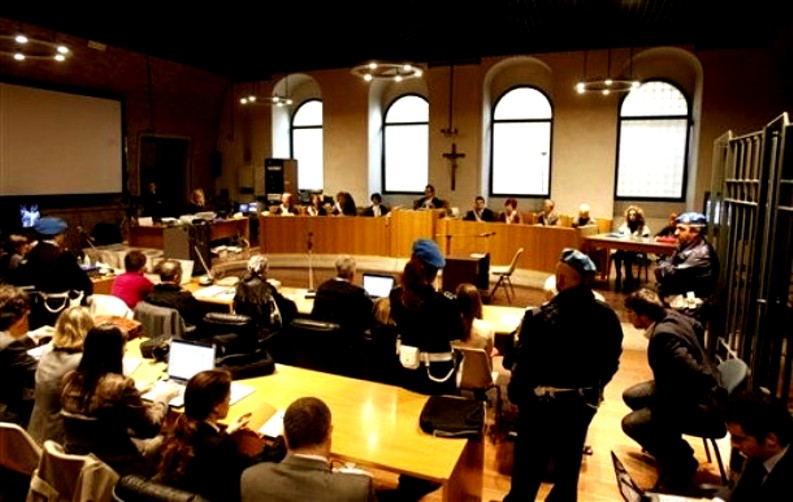
[Background: the Judges and jury (lay judges) for the trial]>
Saturday, September 18, 2010
Explaining The Massei Report: Its Reasons For Existence And Its Significance In The Appeals
Posted by Storm Roberts
Inroduction
What is the “Massei Report”? Put simply, the Massei Report is a document produced by the two professional judges, Dr. Beatrice Cristiani and Dr. Giancarlo Massei, who presided over the trial of Amanda Knox and Raffaele Sollecito at the Court of Assize in Perugia from 16th January to 5th December 2009, which explains the judgement and sentencing.
In reality this document is far more than that. It examines the evidence laid before the court; it discusses both the prosecution and defence cases in great detail - referring back to both the documented evidence produced to the court and to witness testimony; it explains who the witnesses are, it evaluates their reliability and precisely what their evidence tells the court; it gives a detailed analysis of how the court came to it’s verdict. This document is a careful and considered analysis of the entire trial, from opening procedural arguments through to the final sentencing.
The most important aspect of this report is that, despite the need to be cool, dispassionate, focussed on evidence and cold, hard fact, at no point do the authors loose sight of the fact that this report is about a human being: Meredith Kercher.
The Massei Report comes at the end of the initial trial of Amanda Knox and Raffaele Sollecito for the murder of Meredith Kercher (and other charges - see below). It is not however the end of the judicial process. The Italian system gives two appeals to those convicted at their first trial.
The first appeal can be an appeal from the defence, the prosecution, or both, and is a review of the merit of the decision of the first trial and is heard by different judges and lay judges - it is not a full review of the evidence, it is a review of the merit of the decision of the first trial and is heard by different judges and lay judges.
The second and final appeal is to the Italian Supreme Court and is on matters of errors in procedure or in the application of the law, it is not a review of the evidence. The appeals process is described by Commissario Montalbano here on TJMK (link to post of 17th August 2010)
The Massei Report is the basis of the appeal, to be heard later this year, by both the prosecution and the defence teams of Amanda Knox and Raffaele Sollecito. Both defence teams have submitted their appeals and they will be heard in due course. I note, for the sake of clarity, that, it is the job of the defence teams to question the Massei Report - simply because the defence teams have questioned the report does not, at this stage, mean that the Massei Report is incorrect. As of today, prior to the appeal court’s judgement, the Massei Report is the definitive discussion of the case against Amanda Knox and Raffaele Sollecito and the judgement passed against them.
For those who wish to have a detailed knowledge of evidence presented in the case against Amanda Knox and Raffaele Sollecito there is no substitute for reading the Massei Report in it’s entirety - it is available, thanks to the work of a dedicated team of volunteers, both here on TJMK and on the PMF forum, in English (Please see the link in the menu on the left of your screen). Here I am going to highlight some areas considered in the report, my hope being that, in highlighting certain evidence, it will be possible to address the areas most often called into question by those who do not have full information on this sad case. This is not a full review of the Massei Report.
Even for those who have followed this case the Massei Report has some surprises. For example, I knew that both the prosecution and defence teams had appointed experts in forensic medicine and science, but I had not realised that, at an earlier hearing the Perugian court had appointed it’s own forensic experts, thus there were three sets of experts heard at the trial - the prosecution’s, the defences’, and independent court appointed experts.
N.B. In the following review the references to page numbers relate to the above mentioned translation of the Massei Report - specifically the first published version - v1.0 - dated 8th August 2010.
The charges. [Pages 10-13]
Amanda Knox and Raffaele Sollecito were charged, alongside Rudy Guede, with the murder of Meredith Kercher at the flat Amanda Knox shared with Meredith and two Italian girls at number 7 Via della Pergola, the murder was committed for trivial reasons whilst Rudy Guede, in concourse with Amanda Knox and Raffaele Sollecito, committed the felony of sexual assault.
Additionally Amanda Knox and Raffaele Sollecito were charged with carrying a knife without justified reason - this is what is known as the “double DNA knife” to which we will return later, with sexual assault (in complicity with Rudy Guede who is held to be the material executor), with theft of approximately €300, two credit cards and two mobile phones from Meredith Kercher, and finally with the staging of the scene to make it appear as if the flat had been broken into.
In addition Amanda Knox was charged with the crime of calunnia - as explained below there is no direct equivalent in English or American Law - this is the crime of falsely implicating Diya “Patrick” Lumumba in the murder of Meredith Kercher.
Explanation of calunnia
The charge of calunnia (art. 368) has been commonly translated as “slander” in the English/US media. This translation is incorrect, however, as calunnia is a crime with no direct equivalent in the respective legal systems.
The equivalent of “criminal slander” is diffamazione, which is an attack on someone”Ÿs reputation. Calunnia is the crime of making false criminal accusations against someone whom the accuser knows to be innocent, or to simulate/fabricate false evidence, independently of the credibility/admissibility of the accusation or evidence.
The charges of calunnia and diffamazione are subject to very different jurisprudence. Diffamazione is public and explicit, and is a more minor offence, usually resulting in a fine and only prosecuted if the victim files a complaint, while calunnia can be secret or known only to the authorities. It may consist only of the simulation of clues, and is automatically prosecuted by the judiciary.
The crimes of calunnia and diffamazione are located in different sections of the criminal code: while diffamazione is in the chapter entitled “crimes against honour” in the section of the Code protecting personal liberties, calunnia is discussed in the chapter entitled “crimes against the administration of justice”, in a section that protects public powers.
Some Details from the Report:
The Massei Report deals with the various declarations made by Amanda Knox; her statements to the police, her email to friends and family, and also her testimony to the court on 12th and 13th June 2009. Knox’s memorandum to the police does form part of the body of evidence - it was not “thrown out”. The memorandum she wrote on 6th November 2007 was admitted into evidence during the opening arguments and as such this is detailed in the first part of the Massei Report. Additionally it is worth noting that Knox’s police interviews when she was being interviewed as a witness have not been “thrown out” - as per Italian Law, statements when made as a witness (i.e. prior to becoming a suspect) are only admitted as evidence against others. When interrogated as a suspect Knox had both a lawyer and an interpreter - the interpreter, Dr Anna Donninio, actually testified at the trial.
Many claims have been made by Knox’s supporters that can be directly countered by the evidence in the Massei Report. Let us consider just a few of these claims:
1) Amanda Knox did not know Rudy Guede.
This is clearly untrue as Knox herself, when questioned during her trial, admitted to knowing Rudy Guede and to having met him on several occasions during the month of October 2007. They were not “best friends” but they knew each other to speak to and they had socialised in the same group (a group which included Knox’s flatmates and the boys from the flat beneath her’s). [Page 67]
2) Raffaele Sollecito and Amanda Knox have maintained the same story throughout.
Clearly this is not the case. Just two examples highlighted in the Massei report are as follows:
a) Knox’s reactions at the scene, namely her indifference to the problem of Meredith’s locked door, run counter to her email sent to friends and family in the USA where she indicates the locked door caused her to panic [Pages 31, 32 and 91 - 95]; and,
b) During Knox’s testimony on the stand she changed details of her story from the first day to the second day. On 1st November Sollecito and Knox ate dinner at Sollecito’s flat and, whilst washing up, a pipe under the kitchen sink leaked and caused water to pool on the kitchen floor. Dr. Sollecito (Raffaele’s father) telephoned his son at 20.42 hrs - during this conversation Raffaele told his father about this leaking pipe, thus fixing the time of the meal at before 20.42 hrs . On 12th June 2009 Knox timed this meal at 21.30 - 22.00 hrs, on 13th June she changed her testimony moving the timing of the meal even later, to around 23.00 hrs. [Page 78]
3) There is no evidence against Amanda Knox or Raffaele Sollecito.
Having heard all the evidence and arguments from both the prosecution and defence teams the court reached the following conclusions (NB. These are the ‘headline’ points of the evidence, for the entire bank of evidence (including the DNA trace evidence) please read The Massei Report itself) - Page numbers refer to the detailed evidence and arguments.
a) The Double-DNA Knife (Exhibit 36) [Page 264 also Page 287]
The knife had Meredith’s DNA near to the tip of the blade; Amanda Knox’s DNA was on the handle. This knife, the court concluded, was compatible with the large wound on the left side of Meredith’s neck.
b) The Bra-clasp (Exhibit 165) [Page 266 also Page 294]
Raffaele Sollecito’s DNA was on the bra-clasp. The bra-clasp was not contaminated.
c) Computer evidence (including internet usage) [Page 299].
The last interaction with Raffaele Sollecito’s computer on 1st November 2007 was at 21.10 hrs and 32 seconds. There was no further interaction with the computer nor with the internet line at Sollecito’s flat until the computer was used to play some audio files at 05.32 hrs in the morning of 2nd November 2007. Thus the computer usage and internet connection do not support the notion of Amanda Knox and Raffaele Sollecito remaining in Sollecito’s flat all night.
d) Telephone evidence (both land line and mobile) [Page 311].
Raffaele Sollecito’s father telephoned him at 20.42 hrs on the 1st November and this gives a time for the washing up after dinner as Raffaele told his father about the leaking pipe in this call. His father sent him a text message at 23.14 hrs 1st November which was not picked up by the phone until 06.02 on the 2nd November - the court concluded that this was due to the phone being switched off between 20.42 hrs 56 seconds on 1st November and 06.02 hrs 59 seconds on 2nd November.
On 2nd November the following activity on Raffaele Sollecito’s phone is noted:
12.50 hrs a call to Raffaele’s sister from the area of Via della Pergola 7, followed by two calls to 112 (the Europe-wide emergency number) the first at 12.51 hrs and 12.54 hrs. (Note: The two Postal Police officers noted their arrival at Via della Pergola 7 at approximately 12.30 hrs.)
On 1st November Amanda Knox claimed to have turned her phone off after having replied to Diya Lumumba’s text message at 20.35 hrs 48 seconds. There was no further activity on her phone until 12.07 hrs 12 seconds on 2nd November.
This call was the first to Meredith’s English phone - it was of 16 seconds duration and connected through a cell covering Sollecito’s flat. The court held the opinion that this call was to check that the phone, and the second phone that was disposed alongside it, had not been discovered.
There was then a flurry of activity:
12.08 hrs - Amanda called Filomena Romanelli again from Sollecito’s flat.
12.11 hrs 02 seconds - Amanda called Meredith’s Italian phone. This call lasted 3 seconds and again was made from Sollecito’s flat.
12.11hrs 54 seconds - Amanda called Meredith’s English phone for a second time. This call lasted 4 seconds and was made from Sollecito’s flat.
At 12.12 hrs. 12.20 hrs, 12.34hrs Filomena Romanelli called Amanda, the first two calls connected through the cell covering Sollecito’s flat the third a cell covering the flat at 7 Via della Pergola.
At 12.47 Amanda Knox telephoned her mother in America. This is the call during which her mother, Edda Mellas, testified that she told her daughter to call the police. Mrs. Mellas detailed this call in her testimony; her daughter testified that she did not remember making this call. (Again, note the two Postal Police officers noted their arrival at the flat at approximately 12.30 hrs.)
A further call to her mother was made at 13.24 hrs - this call, Mrs. Mellas testified was when her daughter told her that a foot had been seen in the room, Mrs. Mellas said that there was yelling and that her daughter was upset. In her testimony, Amanda Knox claimed this was the first call to her mother that she could remember.
e) Prints - shoe prints and footprints [Page 332].
The footprint on the blue bath mat in the bathroom shared by Meredith and Amanda is attributed to Raffaele Sollecito, and barefoot prints two compatible with Amanda Knox and one compatible with Raffaele Sollecito were highlighted using luminol.
4) Amanda Knox and Raffaele Sollecito were not under the influence of drugs on the night of 1st November 2007.
The Massei Report clearly states that both then defendants were “accustomed to the consumption of drugs and the effects” and Amanda Knox stated that she and Sollecito had consumed drugs on that evening. [Page 367]
In Conclusion
Above I have considered just a few areas of the Massei Report, for those new to TJMK I hope that this has given an insight into the incredible detail provided by the judges and I hope it will have encouraged you to read the Report for yourselves in order that you may fully understand this sad case.
Shortly I will be looking at sections of the report dealing with the medical forensics.
Monday, August 09, 2010
The Judges’ Sentencing Report For The Guilty Verdicts In The Case Of Meredith Kercher
Posted by Our Main Posters
This is the report of Judge Massei and his colleagues, now translated into English.
This was a joint effort of PMF and TJMK and all who worked so hard on the report are active on Perugia Murder File and are or will be posters here on True Justice For Meredith Kercher.
The five months of work by all of us, on three continents, was done in memory of Meredith Susanna Cara Kercher, who was known to her friends as Mez.
Rest peacefully, Mez. We’d have been so honored to have been your friends.
Tuesday, March 09, 2010
Sentencing Report: The State Of The Report’s Distribution
Posted by Peter Quennell
Just over a year ago the Micheli report was released as an electronic document and we had it and began translating within hours.
In contrast the judges sentencing report for the Knox-Sollecito verdict and sentence was released to the media and public only on paper and only in Perugia. There was little advance warning of this, and the Rome group of foreign reporters had to make their way to Perugia at short notice to get their own copies.
The intent seems to have been to stop selected quotes being used in media reports under lurid headlines. The practical effect is that the report so far has been less - and possibly less accurately - dispersed than the Micheli report at a similar point in time.
We have lodged a request for an electronic copy and if the court still prefers to go the paper route we will be adjusting to that. In due course the report will - must - appear on the Ministry of Justice website, in Italian. And all or most of it will appear here, in English.
Friday, March 05, 2010
Sentencing Report: Washington State Lawyer Bill Edelblute Offers An Opinion
Posted by Peter Quennell
Click above for Bill Edelblute’s full commentary in The Examiner. Key Excerpts:
Sometimes analysts of legal or criminal matters will say, the simplest explanation is the best. When the victims’ DNA is on a knife blade, and the suspect’s DNA is on the knife handle, what is the simplest conclusion? When someone blames an innocent person, the simplest explanation is that they are a liar, are themselves guilty, and can have no conscience of any kind to deprive an innocent person of their liberty.
To those who condemn the Italian criminal court system, show us the written findings that have to back up a verdict rendered in the United States of America. There are none, once a judge finds evidence sufficient to go to a jury, all you hear after that is “guilty,” “not guilty,” or unable to reach a decision (hung jury.) The jury does not have to speak to anyone after the verdict if they choose in the U.S. and their exact reasoning can remain forever a mystery.
Issuing the written report, with the detail Knox and Sollecito don’t want to hear, helps remind us that Meredith Kercher was a living, breathing, feeling, thinking person, until they came along. Instead of just a piece in a board game that Knox supporters play.
The report provides a basis for the facts in the case, instead of cheap shots taken by those with no consequences to pay when they are wrong.
In a recent Oprah show, Knox’s new American attorney on appeal [Theodore Simon] stated unequivocally that there had been “no interpreter” when defending Amanda’s blatantly false accusation of Patrick Lumumba, her former boss.
In fact, Knox’s own trial testimony refers to the interpreter that was present, as she gives her pathetic excuse of why she was going to let Lumumba rot in prison if she could get away with it. (Give a college student a few bucks, she can eat for a day. But give her a job, and she will put you in prison for life.) ....
The written “motivations” may dispel some of the media hysteria that would otherwise surround the appellate process.
The side supporting Knox is largely based on the premise that typical American female college students do not suddenly become transformed into murders upon their arrival in Italy. And, that the police abused Knox into an admission she was at the scene, poorly handled DNA evidence, and that one of the prosecutors, Mignini, has been found to have committed evidentiary abuses in another case.
But the evidence is that Knox is not exactly clean-cut, that there is considerable physical evidence against her, that she clearly changed stories, and could not identify the policewoman she says was hitting her in what she claimed was a 14 hour interrogation. Her own explanation for changing stories included not remembering much of the night due to hashish consumption.
And while each item of evidence viewed in isolation has its weaknesses, it is curious that there are so many different pieces of it that need explaining.
The DNA on the knife, the DNA in the bloody footprints, the change in stories of both Knox and of Sollecito, the accusation of an innocent person by Knox, Knox’s demeanor as shown on videotape outside the crime scene (extended kissing with her boyfriend), as shown by witnesses at the police station, of showing little emotion, and turning cartwheels, doing the splits, at the station. Of statements made just a few days later while buying underwear that she would have wild sex with her boyfriend that night.
Of the argument that a normal college student just doesn’t kill her roommate, there is abundant evidence of actions by Knox that are anything but normal.
Little Miss West Seattle comforted a fellow roommate worrying about whether Meredith suffered by saying “What do you think? ... She f ... ing bled to death.” Apart from how she knew the victim bled to death, is that normal empathy for the victim?
There is just too much here to suggest that the charging and conviction of Amanda Knox was the result of anti-Americanism by an incompetent court system.
Sentencing Report: Andrea Vogt Has More Details In The Seattle Post-Intelligencer
Posted by Peter Quennell
Click above for Andrea Vogt’s full report. Key excerpts:
Jurors theorized that Knox, Sollecito and Guede arrived at the apartment together and got high. They suggested Guede used the bathroom, and when he came out saw Knox and Sollecito being intimate, became excited and sought out Kercher, who was reading in her room.
When she resisted, Knox and Sollecito came into the room and aided Guede in restraining her so he could continue. The violence spiraled out of control, and Kercher was eventually killed, with Knox threatening and eventually stabbing her with the large kitchen knife the jury was convinced is the murder weapon, jurors decided.
The court said it did not believe the crime was premeditated, but rather a result of violence partly attributable to the suspects’ uninhibited behavior after getting high. It also noted that it gave Knox and Sollecito a reduced sentence because they were young and had taken pity on the victim and covered Kercher’s body with the duvet.
The court cited as reliable elements of proof not just the alleged murder weapon (a knife with Knox’s DNA on the handle and a trace amount of Kercher’s on the blade) and the bra clasp with Sollecito’s DNA, but also the luminol-enhanced footprints attributed to Knox and Sollecito.
The judge paid particular attention to the multiple traces of mixed blood (Kercher’s) and DNA (Knox’s) in the apartment’s small bathroom, noting that also the door and lightswitch in the bathroom had been touched with someone with bloody hands or clothes.
Traces of Kercher’s blood and Knox’s DNA were found together in several spots, the judge wrote, specifically, the on a cotton swap box, the sink and the bidet.
“Mixed biological traces belonging to Meredith and Amanda in the washbasin and bidet and seemed to indicate the cleaning of hands of feet,” the opinion read, going on to suggest that Knox’s skin tissues had rubbed off as she tried to scrub off Meredith’s blood in the bathroom.
However, jurors found two of the prosecution’s witnesses as “not credible” and did not agree with prosecutors’ theory of exactly how the murder unfolded.
Jurors discounted as unreliable two eye witnesses—an Albanian drug-dealer and another student. Both testified they had seen Knox, Sollecito and Guede together.
Sentencing Report: Hada Messia Of CNN News Rome Has More Details
Posted by Peter Quennell
Click above for Hada Messia’s full report. Key excerpts:
The jurors believed that Guede went into Kercher’s room and attempted to have sexual contact with her, but Kercher pushed him away. Knox and Sollecito then came into the room and attempted to help Guede have “his way” with Kercher, the report said. Sollecito held Kercher while Guede fondled her, the report said, but things spiraled out of control.
Sollecito poked Kercher with a knife, inflicting one wound measured at 4 cm (1.5 inches), and Knox poked her with a bigger knife after she screamed, inflicting a larger 8-cm (3-inch) wound, jurors found.
“The most plausible hypothesis is that Rudy decided by himself to enter Meredith’s room,” the report said. “The reaction and refusal of the girl must have been heard by Amanda and Raffaele, who actually were probably disturbed and intervened, given the unfolding of events. They backed Rudy, whom they allowed to enter the house” and ultimately became Kercher’s killers because of events that followed, according to the judges.
All three, the jurors believed, were under the influence of drugs. “The motive is therefore of erotic sexual violent nature, which originating from Rudy’s choice of evil, found its active collaboration from Amanda Knox and Raffaele Sollecito.”
While both Knox and Sollecito denied being at the crime scene, jurors noted that Knox’s blood was found in the bathroom and Sollecito’s DNA was found on Kercher’s bra. The two cannot prove they were at Sollecito’s home until the following day, as no evidence puts them there, according to the report.
Sentencing Report: Richard Owen Has More Details In The Times
Posted by Peter Quennell
Click above for Richard Owen’s full report. Key excerpts:
In a riposte to Knox’s family and friends who claim she was the victim of a mistrial based on flawed evidence, the judges said the prosecution had drawn “a comprehensive and coherent picture, without holes or inconsistencies”. The defendants had been able to describe Ms Kercher’s injuries, and their guilt was clear from DNA traces and naked footprints found “in various parts of the house”....
In their 427-page summing up the two judges, Giancarlo Massei and Beatrice Cristiani, indicated that they and the jury of six had also been swayed by Knox’s attempts to shift the blame by falsely accusing Patrick Diya Lumumba, a Congolese barman for whom she worked part time, “knowing him to be innocent”.
Knox had tried to “put the investigators onto the wrong track” even though Mr Lumumba had always treated her well and she had “no motive for spite, enmity or revenge toward him which could justify such a serious accusation”....
The judges said that on the evening of the murder in November 2007 Knox and Sollecito had found themselves at a loose end when they met Guede by chance at the cottage at a time when Ms Kercher was alone. After the murder they had covered Ms Kercher’s lifeless body in a gesture combining pity, denial, and “a sort of repentence for what had been done”...
The judges said more than one person must have committed the crime since Ms Kercher was fit and strong, as her mother and sister had testified, and her sports included boxing and gym training.
Thursday, March 04, 2010
Sentencing Report: Barbie Nadeau Quotes The Motive, Physical Evidence, And Alibis
Posted by Peter Quennell
Please click above for Barbie Nadeau’s full report on the Daily Beast website. Key excerpts.
1) The motive
“One can hypothesize that the bad decision came after the consumption of stupefying substances.”
But they disagreed on the motive. The prosecution lawyers began their case in January, 2009 by arguing that Kercher was killed during a sex game gone awry. By closing arguments, they had changed the theory slightly, trying to make the case that Knox resented her prissy British roommate and killed her in hatred. The jury rejected both theories, and the reasoning document declares that “the killing was carried out with no planning, no animosity and no revenge against the victim.
“The two young lovers, interested in each other and in the intellectual and cultural world around them, would not have made a conscious decision to kill Kercher. Instead, the judge wrote, they killed spontaneously under the influence of drugs. “One can hypothesize that the bad decision came after the consumption of stupefacente””stupefying substances””that Amanda verified in her testimony.”
As the jury saw it, Knox, Sollecito and Rudy Guede, the Ivory Coast native who was convicted for his role in Kercher’s murder after a fast-track trial in 2008, came to the house the two girls shared in order to get high. Guede used the toilet, then became aroused when he saw Knox and Sollecito making out. He went to Kercher’s room and made sexual advances toward her. The reasoning refers to evidence presented at Knox’s trial that Guede was the type of guy that “bothered women” when he was under the influence.
Then, according to the reasoning, Kercher cried out for help, but instead of helping her, Knox and Sollecito, their judgment impaired, decided instead to help Guede. The killing was based on “sexual-erotic violence” but not with Knox as the mastermind. The jury felt that it was Guede who led that attack, and the other two, too high to know better, joined in.
2) The physical and forensic evidence
The judge’s reasoning also underscores what the jury believed to be the most important elements of the prosecution’s forensic case. They believed that a kitchen knife with Knox’s DNA on the handle and a trace of Kercher’s on the blade was the weapon that made the large fatal wound in Kercher’s neck. They also referred to Sollecito’s “knife habits,” surmising that, as an admitted collector of blades, he likely used his own knife to make the second wound. The jury agreed that Sollecito and Knox conspired to stage a break-in in another bedroom to cover their tracks.
And they attributed an unidentifiable bloody shoeprint found on the pillow under Kercher’s body to Knox, even though the prosecution only implied that it was compatible with a woman’s shoe size. A spot of Knox and Kercher’s mixed blood in one of the bedrooms, found using Luminol, and four additional spots in the small bathroom the girls shared also swayed the jurors.
“These were left when Amanda was cleaning her hands and feet of Kercher’s blood,” the judge wrote.
3) The Knox and Sollecito alibis
The judge also wrote emphatically about the lack of credible alibi. Although Knox and Sollecito claimed to be at his apartment all night, “Not one phone call, not one meeting, no computer activity or any other element proved that they stayed at that apartment.” And the judge was particularly hard on Knox for accusing Patrick Lumumba, an innocent man, of the murder “knowingly and deceivingly.”
Overall, however, it appears that the jury was sympathetic to the two suspects, but ultimately felt that they committed a crime for which they must pay a hefty price.
Sentencing Report: La Repubblica Has The Most Substantive Report So Far Today
Posted by ziaK
Click above for the Repubblica’s story in the original Italian.
This translation below is of this the longest report so far today in the Italian media, presumably by staff reporters in Perugia, although it is unsigned.
Verdict filed in Meredith crime: Murder arising from Guede’s sexual violence
PERUGIA - Four hundred and twenty-seven: This is how many pages it took for the judges of Perugia’s Court of Assizes to explain the sentence on the murder of Meredith Kercher in Perugia on 1 November 2007. For this crime carried out, the judges wrote, “without any planning, without any animosity or feeling of rancour”, Amanda Knox and Raffaele Sollecito were sentenced to 26 and 25 years imprisonment, respectively. For the same crime, Ivory Coast national Rudy Guede was sentenced (to 30 years following a “fast-track” trial, subsequently reduced to 16 years in appeal) and is currently waiting to file an appeal with the Supreme Court. The Perugian judges wrote: “The motive, was of an erotic, sexually violent nature, which riginated in the evil choice made by Rudy, and elicited the active collaboration of Amanda and Raffaele.”
From Viterbo prison, where he is held, Rudy wrote a letter with an appeal: “to those who know, talk”. A request which appears to be addressed to the same Amanda and Raffaele (both - particularly the American student whom he has always claimedto know - pointed to by Rudy as having been present at the crime scent, ndr) who have always declared themselves to have no involvement in the affair.
Together, all the elements which emerged during the process “demonstrated a comprehensive and unified picture, without gaps and inconsistencies”, wrote the judges in the file signed by the Court President, Giancarlo Massei and by assessor judge Beatrice Cristiani. According to the College [as in the board of judges], the picture that emerges “has, as its necessary and strictly consequential outcome, the attribution of the hypothesized facts of the crime to both the accused.”
The measure furthermore asserts that Knox “freely accused Patrick Diya Lumumba of having killed Meredith, and so accused him with the full knowledge of the innocence of the same Lumumba”. The judges underlined that there had not been “any confirmation” that Amanda had been urged by the investigators to accuse Lumumba. For Perugia’s Court of Assizes, the objective aimed at by the American (who was also convicted for the crime of calumny with regard to the Congolese [sic] musician, ndr) was to “lead the investigators down the wrong path, far from that which could have led them to establish her own responsibility, and that of her boyfriend”. “Such behaviour is a choice”, wrote the Court, “and thus merely defensive: Amanda had a good relationship with Lumumba, by whom she had always been well treated, and therefore there could have been no motive for rancour, animosity, revenge which could have justified such a serious accusation.”
The murder of Meredith Kercher, it further reads, was carried out “without any planning, without the animosity or feeling of resentment towards the victim which in some ways can be seen as the preparation/predisposition to commiting a crime”. According to the board of judges, “the actions turn out to have been carried out as a result of purely coincidental events”.
In the judges’ report, they talk of “purely coincidental events which, when joined together with each other, created a situation which, in the combination of various factors, made possible these crimes to the detriment of Meredith: Amanda and Raffaele who suddenly found themselves without any commitments, meet Rudy Guede by chance (there is no trace of any appointment having been made), and find themselves together at the house on the via della Pergola on the very evening (between 1 and 2 November, ndr) that Meredith is there alone”. According to the judges, “even the behaviour towards Meredith - once the assault and the murder have been commited - which consisted in covering her lifeless body, shows a feeling of pity for the victim, refusal, and thus a sort of repentance for what has been done: refusal and repentance shown through such an act of pity.”
The judges attributed the material criminal act, that is, the sexual violence, to Rudy Guede, who was aided by Amanda and Raffaele, weakened by the drugs they had consumed. The judges wrote: “Amanda and Raffaele participated actively in the criminal actions carried out by Rudy with the aim of overcoming Meredith’s resistance, subjugating her will, and allowing Rudy to relieve his lustful urges.” The judges also wrote in their report: “The prospective of helping Rudy achieve his aim of subjugating Meredith in order to sexually abuse her may have appeared to be an exciting detail which, although unforeseen, should be tried”.
“The motive”, added the Perugian judges, “was therefore of an erotic, sexually violent nature, which originated in the evil choice made by Rudy, and elicited the active collaboration of Amanda and Raffaele. That such participation, active and violent, had also involved the current defendants as well as Rudy can be deduced from what has been observed in talking about the lesions suffered by Meredith, by the outcome of the genetic investigations, by the prints of bare feet found in various parts of the house.”
According to the judges, in this murder case, one of the tests, carried out by several people, is confirmed by Meredith’s physical strength, by the fact that she was conscious on the evening of the assault, and by her previous experience in the gym. “Meredith, when the violence began, was awake and dressed, and was not laying down on her bed.” Furthermore: “According to the analyses, the young woman had a slender and well-endowed physique, and was physically very strong, as was claimed by Meredith’s mother and sister. She had even done boxing”.
Judges’ Sentencing Report Released In Perugia And It Is 427 Pages Long
Posted by Peter Quennell
Judge Massei is seen above on live TV from the court on the night he announced the verdict and sentence.
The sentencing report is four times the length of the Micheli report a year ago which itself was very detailed. It was made available to the media today on paper by the court in Perugia.
First take in the Italian media is by TGCom.
The judges of the Court of Assizes of Perugia lodged the grounds for the condemnation of Raffaele Sollecito and Amanda Knox for the murder of Meredith. All the issues raised in the process, it says, “demonstrate a comprehensive and unified whole, without gaps and inconsistencies”... The reasons for conviction of two defendants are contained in a voluminous file. It is 427 pages signed by the President of the Court Giancarlo Massei and assessor Beatrice Christians.
The motive is described in the report as essentially the thrill of the moment in helping Rudy with a sexual attack and while there was a predisposition there was no longer term intention.
Drugs are seen as having played a role.
Sollecito and Knox are apparently seen in the report as the knife wielders and one of them seems to have delivered the fatal blow.
We will be obtaining the report of course and arriving at our own English-language version in the next several weeks.
RIP poor Meredith. This has to be so tough on her family and her friends. We love this photo below. So trusting and so full of life.

